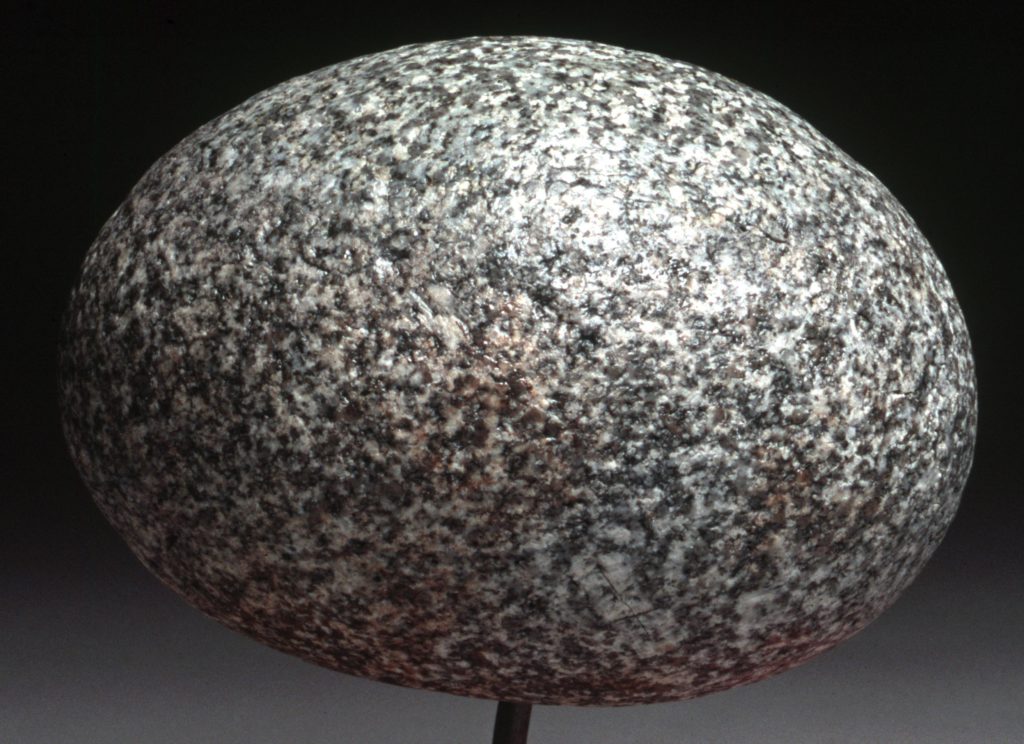
0 (zero)
Nothing occurs by itself
Everything occurs by itself
Every thing affects every thing
I exist
Herakleitus
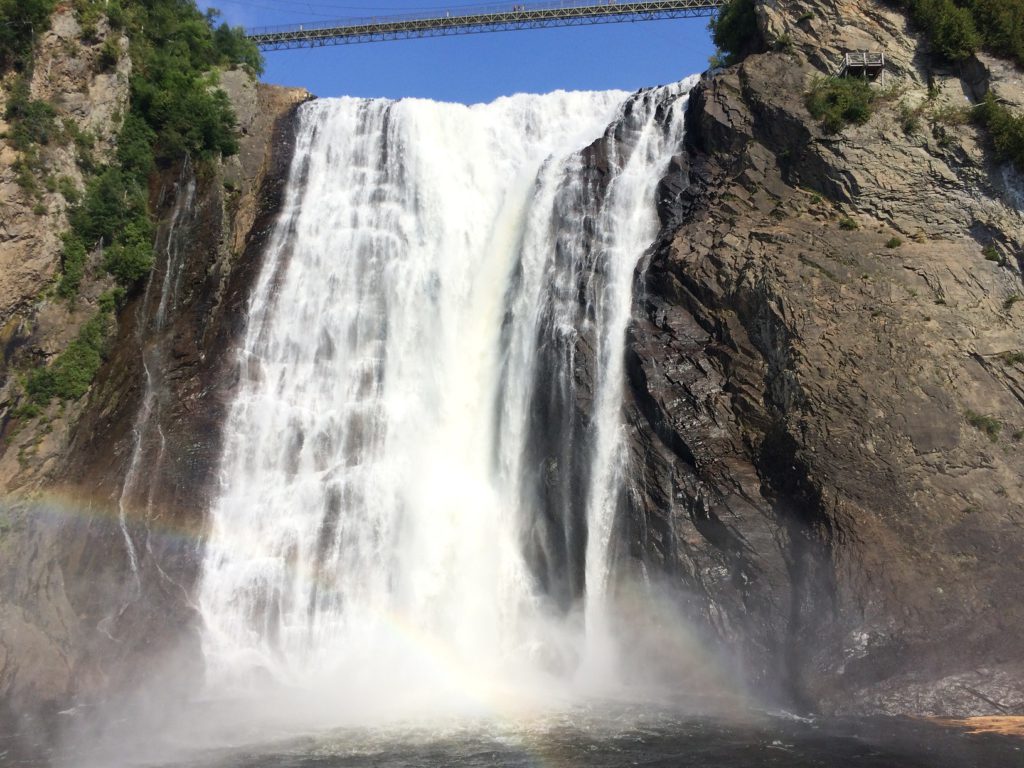
If I cannot step into the same river twice, can I at least finish the same sentence once?1
1.Which ‘I’ is this, pray tell? And do not play with me.
Step once – Step twice1
It is not fate that we experience movement as time. It is the direct human emotion-idea reaction to, and engagement with, facets of change in human life and its environs.
When we say the change is inevitable, this notion of inevitability does not entail that we are ‘fated’ to change. Furthermore, it does not mean that our ‘destiny’ is that everything will change all of the time. Movement is neither fate nor destiny. It is movement. Movement is everywhere, because movement is time and time is movement. I take this to be, in great part, the fundamental nature of Nature.
We are ‘fated to move’ is a peculiar way of talking and expresses the sense that there is no escape from movement. Of course, there is no escape from movement. (There is no ‘from’; every thing moves.) Everything moves all the time because time is movement. But movement is not about fate, destiny, being foreordained, or predetermined in anything in any way — movement is movement.
It is not ‘about’ anything!2
1. The Phantom Tollbooth, Norton Juster, 1961 A terrific read, said to be for young audiences. (It may also enthrall non-youth as it did me several times).
2. The almost interminable discussion, often called a debate, about whether we are determined by the forces and laws of nature in what we do, or whether we have free will to do as we want, wish, will, is much air — usually lost in the whirling winds of every day life.
If only, then…?
Amongst humanity’s deepest follies is the desire to go back and change the past.
This is often as automatic as walking forward.
Regret, wishful thinking, nostalgia, and reminiscence, living yesterday in the form of tomorrow, all moments when the human spirit is searching not only for what it cannot have, but were it to have it where it presently lives, this very present moment would cease to be, to exist. It could not have happened, even to the point of going back to change the past to allow it to live better in this present which it just negated by going back and changing things.1
But still: we wish. If only, maybe? I should have. Why didn’t I do what I knew I should have done? How can I rectify? What have I missed — longing, longing, longing?2
The soul’s energy slips away into the future from the present, dreaming of the past the way it never was and will (cannot) be?
What is intelligence? What is will? What am I?
1 12 Monkeys, 1995 science fiction film.
2 https://bobkavanagh.ca/2023/01/22/chained-grace-surging-gushing/
Sustenance

Life certainly exudes an aura as directional.
Life’s homeostasis: local maintenance and type self regeneration. What a creative shift that was/is.
From the point of view of all Bios, the coming-to-be of homeostasis is ground-zero-miracle.
I would guess that all life has order and from itself, engenders, maintains, and manages this order while inherently enabling this capacity.

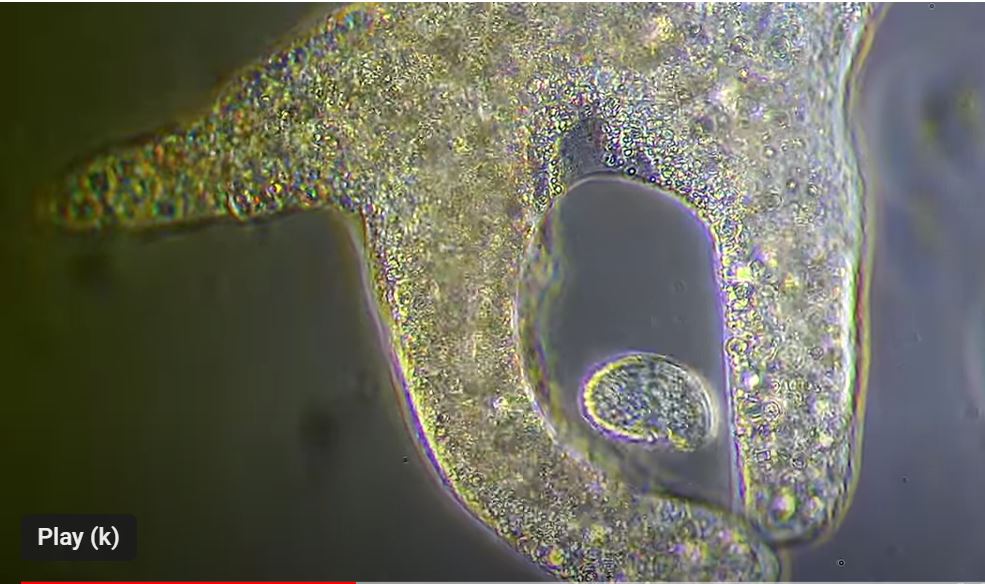

PS. https://youtu.be/mv6Ehv06mXY
I
My personal thinking, feeling and intuitive orientations often lead me to present questions, utter statements, proclaim framework uncertainties and mythic declarations, and also to exclaim premises as if they were conclusions, and paradoxical notions as if to be coherent and intelligible. Some are, some aren’t. So what?
Archéos.
Not usually easy and often disorienting. There you have it! I arise each morn, anew and of old: alive as myself!
Why is there something and not nothing? Is there? What am I? Does matter matter? And, in the end (au fond du plus profond): is matter matter? And if not (strongly suspected), then what? What is a thing? What are we humans? Is Everything anything? Does it matter if there are those who tell me that my soul is matter? Is there someone here who knows what they’re talking about?
Is there an ‘it’ au fond? Being and having.
What is this mind-body conundrum, disguised as a raw diamond? Why do we bifurcate with facility and harmonize with tremulous unease? Is humanity one?
It is easy to get lost in high energy and small particles, especially while having a good espresso and a delectable viennoiserie. Do I see what is there or only what was? Is time only movement? If fundamental constituents are a jumble of waves, are they a tsunami? How can a ‘thing’ survive a tsunami?
So far, this broaches nothing at all about human sensibility and insight — not yet.
(And do not tell me I am bewitched by language; of course I am; that is not the problem).
Language floats, I live.
Does zero come before one?
Can anything actually grow if in its deepest origin there never was a thing akin to what we humans would call its roots?
How could it be that the earliest cellular structures of living things showed up somewhere along what we called the timeline of the unfolding of the universe, and in particular, the transformations and opening up of life on what we call planet earth, which in the beginning was an aggregate of drama, chaos, energetic diffusion and cohesion, shifting and moving, to mold, and order.
But no life.
How could it be that at the earliest hints and traces and intimations of life, let’s call it a cell, this could come to be if there were no ground from which could nourish it and on which it would rest and become stable in the new form of what it would be/is? (These bloody infinite regresses are a drag. Just as they can never start, they can never end).
This question of course is how could life come to be from non-life?
It hides another question, of course, which is how could anything come to be if there were not already something?
‘How’ is certainly an enigmatic word.
How could it come to be?
Literal metaphorical similes
If we cannot reconcile metaphor, allegory, similes, analogy and many such imaginary reconstruction stories, with our human need for what we call knowledge, truth and understanding of the world, then we should be constrained honestly to acknowledge that we are totally, utterly, thoroughly, absolutely, and confusedly, lost. (Point final, comme on dit en français !)
Where is it written, and deservedly so, that words, do (should, must, will) have what we commonly call literal meaning in almost every situation?
They do not.
There are situations in which we use words in what we call legitimate ways, because there is a simplicity, clarity, and correlational obviousness to it. When words are put into the form of metaphors, similes and allegories, they frequently do add clarity, simplicity and correlational obviousness. Anyone who cannot see that moderately often, is out to lunch.
A lunch without substance.
Lightning
Sometimes, self-consciousness is faster than the speed of light.
And emotion which arises from within us is filled, sometimes vaguely, and sometimes more clearly, and sometimes with great clarity.
As we become aware of emotions, and increasingly so, self-consciousness, our awareness of our emotions, may subtly alter the specificity and actuality of the emotion itself.
Self-consciousness of emotions does not make them inauthentic, but they become less deeply primal hen self-consciousness, begins to change, shift, and re-orient the actual feeling of emotion and our awareness of it, as if with purpose.
Being alert in this present instant requires a constant vigil.
Having a thought is such a common occurrence, that it passes almost without notice.
T/F : I/O
As many contend and some believe, the current era’s appellation as ‘post-truth’ and ‘post-fact’, is true.
It’s handy when truth has lost its importance, i.e., its status as arbiter.
We are free from its constraints and at liberty to go wherever we wish in the realm of the possible-actual.
Finally, Eden is dead. It does not matter what others are thinking, accepting, aspiring to, doing, planning (scheming) in their lives.
They are not us. There is no humanity!
Enigma
It is not mysticism.
It is a great mystery.
Science’s CERN is not the answer.
Philosophy is not the way.
Searching without is not the answer.
Searching within is not the answer.
Religion is a lost path.
There is no right way to search.
The concept of a right way is a false prophet.
Life is not an illusion.
Reality is not an illusion.
Wake up.
My PRECIOUS!1
We live in an age of specialization. Actually, we live in an age of high order and intense specialization. Well, if the truth be known, we live in a new era of high tension, super-detailed specialization, exclusionary and intimately detailed specificity, dramatically intense and focused differentiation. (But not knowledge, sadly; of course high level predictability, alas; but not for what we humans will actually do now – you and I).
We should remember in all of this that no one owns language, and no one owns the words we use. Words and the rich diversity of languages which house them, are an elemental feature of humanity, its creativity and mind. They and their vital energy are inextricably lodged within the human soul and its ethereal being, as life changes and gains stability.
Who owns language?
Nobody owns language, nobody the words.
Who owns the words ‘to know’?
Ask who owns the word ‘know’.
Who has the right to define the word ‘know’ in such a way that others should feel compelled, will feel constrained, or are obliged to accept the definition as the actual, most significant, and true?
And then comes the word ‘eternal’ and its cousins ‘the human self’, ‘objectivity’, ‘truth’, ‘happiness’ and ‘love’, ‘life’s meaning’…
Nobody owns language, nobody owns life.
Nobody owns language, nobody owns the world.
To use them indiscriminately, however, is to undo humanity from deep within its underworld all along the pathway to its heaven.
1 Gollum, Gollum, Gollum: lest we forget or get momentarily distracted. My PRECIOUS owns us— not the reverse!
Holding Fast
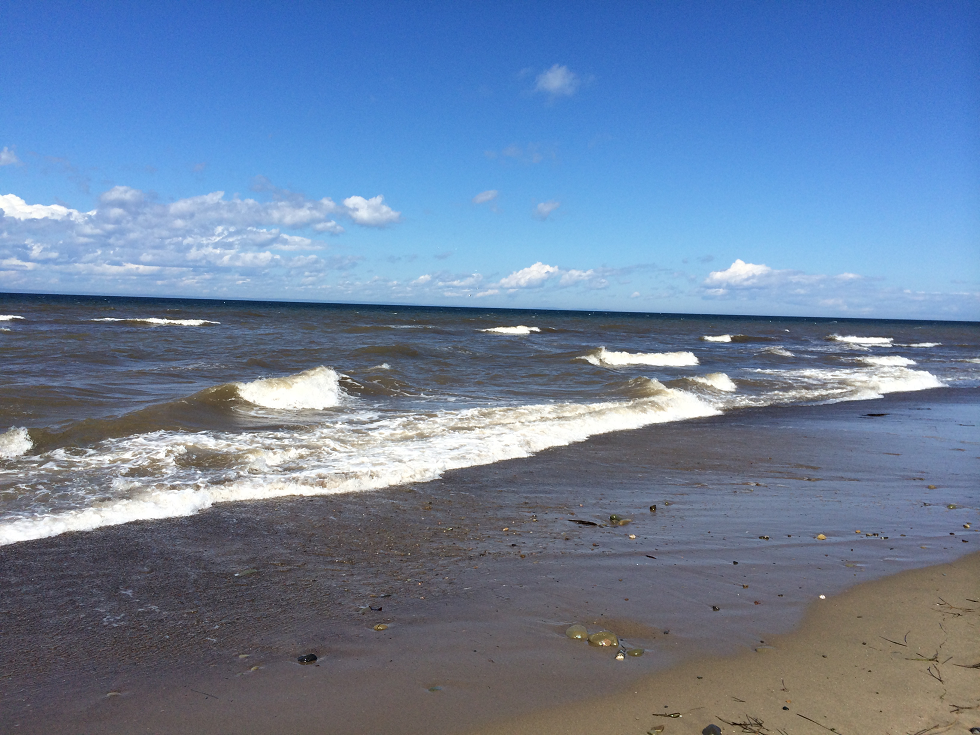

Why doesn’t everything just fall apart? I mean every thing, not only this thing and that! But EVERYTHING — duh?
What we call objects and things, all cohere.
Fortunately, the word ‘object’ can refer to a familiar thing like a billiard ball, or Mount Everest, and something loose like a cloud or wispy mist. Unless some other forces act on things, they stay together as what they are. Mount Everest is not about instantaneously to self-annihilate — you neither.
You know that clearly, I know that, and we know it because we stand up and walk around and it does not really occur to us most of the time that we will naturally disintegrate — just like that — faster than a zeptosecond!
By self-disintegrate I mean of course by and from my own being what I am. Without some dramatic or quasi-evident outside force undoing us/it?
We will of course come to the end of our life. Cease to be!
Can you come to the end of life, only from forces within yourself? Now?
Metaphors are dynamically wonderful.
But they are metaphors.
Be prudent as you think!
I am here, but who, where?

After I had been awake for a while — in what may comfortably be called ‘this life’ — and I had a chance to cast a feeling over things a little bit, I was in fact, very confused. In the early stretched-out moments of life, I didn’t know a thing. I felt/sensed the inherent shivering of existence and was tumultuously, continuously, reoriented by and within the sheer emotionality of my life as lived. Yet, I was in a world? (This very one in fact.)
Slithering, crawling, stumbling, walking while encased in ungraspable perception, and dumbfounding sensations more than chaotic enough to be disturbingly overwhelming — how, what, why, where — a trace of life beyond any sense or meaning, but lived: near suicide.
What could anything possibly have brought me past those infant-like moments of nothingness and everythingness all at once — crowding, pushing, pulling, tearing, confounding, pushing me into the undercurrent: trace elements from?
This coming past the tumultuous and turbulent edginess of my early existence, was not something that I did. It came to pass. It happened, I lived.
Deep memory cannot be expunged. There are spirit scars. Healing is rarely whole. Growth, however, always nearby, and tremulously persistent.
A brief movement of illumination opens the crevasses and cracks, presenting the awakening soul a hint of growth. The soul’s bark, a fissured and interactive dynamic, protects and opens. This is its character. Growing is a past-to-present-to-future process we say. But lived now, remembered then, and imagined in an as-yet then.
Our human mind, engulfed in this wispy sphere of time, yearns to escape and flourish. While containing and constraining, the bark splits as our unseen and unknown vitality emerges,
Living now, being aware of then, imagining the as-yet then, are so elemental that it is challenging not to be thereby dumbfounded. I planned neither my memory, nor my imagination of the yet-to-be. Nor can I undo them.
Even so, here now, they are with me. Sometimes, they are me — but not always and not always all of me. Go figure!
Maintain diligence, soften the rigour, move forward, allowing inevitable, but not fated, movement to come. Is this me? Not comprehending, guided by the murmur of hope and the desperation of lostness, there is movement — I am shifting, growing, transforming. Yes, t’is ‘I’.
What mystery is this?
Nourishment

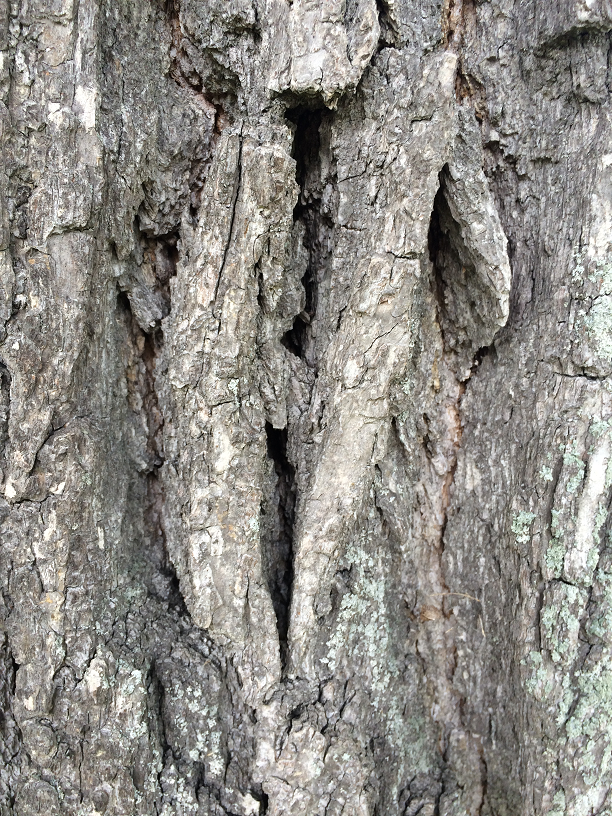
In the course of my life, there are fortunately moments during which I, like other humans, have small insights, a hint of this, that, or the other thing. These hints are accompanied by a shadow feeling that things are ‘all right’ in the world — and with me.
Betimes, this feeling that things are ‘all right’, borders on a lightening of spirit and an insight into happiness, a feeling of some understanding.
There are hints with these delicate moments flourish as a result of a great deal of thinking that I have done, and a fair amount of searching within my soul, and a skirting over the complexity of the emotions which have passed through my deeper spirit in the course of my whole life. These ephemeral whispering moments are not always, nor often enough, within what I broadly speaking, would call my ‘control’. They can be nurtured.
PS. Occasionally, I grasp something which I already know, namely, all things pass. The passing of things is like a happening rather than result. Happenings are deeply passive. This simplification has an aura of an illusion about it. It seems to me that things happen, when a complex of circumstances exists, only a small portion of which arises into being through my arranging facets of the world and channeling a gamut of actions in my felt and ethereal inner zones. The deeper context is always at play within the fullness of my live life, in the context full existence. The road not taken is not taken. It is not a road. It is, as we say, a figment.
Who? ‘What’ actually?
I most assuredly could more easily say to you, what I am not, than what it is that I am. Even when I say to myself, “what I am is a ‘who’ — not a ‘what’” my mind doesn’t jump with excitement and clarity.
For sure I am not the universe, although there are people who say that each person is their own universe. For me to say that I am my own universe? Quite frankly, to say this would be such an absolutely stunning, and devastatingly diminutive metaphor that I could never bring myself actually to say it. And not only not to myself, but most assuredly not in the public domain. Although I do Incline toward accepting that I am my body, I feel such a blockage within my spirit that I cannot unabashedly actually say, “I am my body.” This is the case because a full range of sentiments emotions, impressions, intuition, thoughts, resumes, exclamations, and accounts of things show to me that I am not only physical entity and materialistic mass, electromagnetic waves, and force fields. Is my body my actual body because of the Higgs? Better think twice here.
Mind you, I am certainly not only my mind.
My life as a soul is a whole other question — but not one of its existential status — rather, one of meaning, value and living as me.
I know, I know — but no denying the ground beneath my feet!
BIG/big: small/small
Over the course of time, many thinkers have wondered whether there is an infinitely small entity and an infinitely big entity, in the immensity of all existence itself.
We are struck on a daily basis by the exquisite visual data feedback from the Jack Webb telescope. We humans have sent it into space to capture more images, information, and details about what we commonly call the universe, or in this case, outer space. It is more than clear to all of us that the galaxies, and the galaxies, and mega-galaxies of mega- galaxies of mega-galaxies, is actually endless.
This looking and searching by the Webb telescope is actually an amazingly simple reminder of what we sense deeply within ourselves, namely, that we humans are so small and earth so tiny that it is as if, not quite, but almost as if, we do not exist at all. BIG is not an adequate word by any means for what we see ‘out there’.
On the other hand, we walk around and look at things, sit on chairs, have coffee.
Humans also have invested some billions of our international dollars to sustain the stupendously invigorating and profound explorations at CERN, and other similar investigative tools and devices on earth. In these ventures, we remember that while we ourselves compared to the excessively big are more than small, compared to the very, very, ridiculously small, and the orderly chaos of subatomic particles, we are big-beyond-big, and the quanta are too small even to think about. Even though we think about them a great deal. SMALL is an entirely inadequate word for the ‘things’ we have detected through the CERN’s probing. Sigh!
And we are?
A disconcerting thought (amongst others)
I confess that I am often perplexed.
Sometimes, the hint of my not being able to grasp something is amazingly simple.
For example, I have no notion whatsoever how it is that an idea comes to me. Some people might say this is not simple, but given that it happens a great deal, pretty well every day and on an incredible variety of topics, it is a simple question to ask.
How does this happen?
Other bewildering things are more obtuse. For example, when I read in some of the popular writing about contemporary physics, my study leads me to believe that our most detailed and highly analytical probing of matter and mass has revealed to us that those physical things, material, the mass of existence, are all forms of energy. They are forms of energy which do not move as quickly as the speed of light in a vacuum. I understand this but it baffles me. How it is that I can have a really good espresso, accompanied by a fantastic song or a poem, and be sitting on a chair. I know we are not moving at the speed of light — but I do not know how I, a prototypical physical being (slow energy), can reach out and take my espresso cup (slower than light energy), and take a sip (slow energy). Does energy do the tasting? I don’t think so because I really like it. What am I?
I know that betimes I am not fast. It is not because I am not moving at the speed of light, even though I am taken to be physical thing.
Optics

If a thing can be seen equally as well in two distinct ways, neither of these ways articulates the fullness of the thing.1
If there were an indefinitely large number of ways to see this same thing, no one, or any collection of ones would be the wholeness of what that thing is.
Occasionally, when words refer to a thing, there may be no clearly known referent even though we have a sense of what it is that is being designated. We can understand without full comprehension; we can comprehend without specific understanding.
Too bad if you can’t follow that. Go think!
It does not affect its intelligibility, depth, or sense, as it is.
Although we cannot put everything into words, we frequently arrive at a moment in word-based thinking or dialogue of some strong ‘feeling-seeing’ which slips beyond the words. We apprehend, occasionally without understanding, or full comprehension.
Of course, I do not know how. I am not the gauge although I am an indicator.
1 When I first read the Ethics of Spinoza, I was befuddled by his methodology, deeply overwhelmed by the actual content of what he wrote, and did not know what was what — to the point of course that I didn’t know that I didn’t know. (Sigh.). In the subsequent decades, I often saw traces of his insight, the power of his vision and the novel aspects of his take on the world/existence. He has been a wealth of thought beyond measure for me on many occasions. I have more than many dozens of favorite thinkers who have helped me survive and grow. He always floats at and on the surface. (IHO).
Thinking, Being Actual
It is often the case that there is no logos which holds together in what we now call fields of knowledge, what we see as integrated sets of ideas. The cohesion of fields helps them make sense because we take them to be related to one another and to us.
This relation is called the logos, the ‘ology’ of anthropology, criminology, neurology. This phraseology is just another way of saying that the idea of organization of thought-reality, and how it is expressed in our languages and the way we try to think about it, is inherently, deeply, coherent — because we expect/take knowing to be logical.
The network or web which we have created makes it appear that a full range of differences are integrated one to the other. This is the logos.
The world, however, is just what it is, it is not the logos.
I don’t think knowing is logical nor is the world.
That’s a pain in the ass I know, but what can I tell you, I think it anyway.
Many of us innocently and yet with a somewhat conscious commitment, hold onto the notion that thought, reality, life, and existence, are somehow ordered.
We can get a coffee, non?
Clearly the chair that I’m sitting on, is here as I am here. They do not unexplainably, simply disappear. We tend to believe that this is the state of affairs of the world. It’s not that that’s false. It’s just that that becomes so cemented as an idea, namely, that things are ordered, that we have a great deal of difficulty not always looking for the logos of things, the coherence of things, the sequencing of things and the deliverance of things.
Sometimes we call this coherence an explanation, or an account.
We should remember in these kinds of discussions, that my ignorance on any item, any complex of items, or any big systems that might tie a bunch of things together, or where I’m simply confused because it’s all too much for me, is nothing other than my ignorance.
It is not a symbol, a signal, an indicator, or a hint of anything other than my not knowing a fantastically substantial number of things.
Humanity doesn’t know 100 billion things. This ignorance is nothing but ignorance.
I am not alone.
When I read the stuff I read in neuroscience, anthropology, biological evolution, molecular analyses in biological evolution, I am quite fascinated by it all. I am, however, really hesitant when there might be a hint of thinking that suggests that a form of life, or life itself in its most primitive form, has a goal or inherent direction.
This is not to deny the actions which give rise to the phenomenon of homeostasis, coherence in life, growth and accelerated togetherness and richness of life, in any form.
Existence is not going somewhere, and certainly not on purpose. It is not, not, either.
Not every idea is applicable to whatever we want to attach it.
Language can be used imprudently.
For things to be similar, they must minimally be different.
Yeah I know it’s confusing.
So what?
So much is confusing. Even the stuff that’s really clear.
Are we complex bees?
Feel: Feeling?
At some fairly simple level (perspective, analysis, considerations), emotions are only our bodies being affected. We humans tend to think that emotions are the awareness we have of, and the conscious reactions to, various affectations of our being. This is the human state of feeling.1
For many of us, we live a great deal of our feeling time in congested consciousness. Many other realms of our feeling time are lived in simple clarity. We illustrate the former by the lostness of our souls, or a serious physical blow to the torso, and the latter by the plain feeling of the chair beneath our bum as we sit down, or the severe pressure of a bladder much too full for us even to walk, move or think of anything but peeing.
Some might say, yes, but the one is obviously deep emotion and the other simply physical. This not a false distinction, but we bifurcate at our peril. 2
Enter the analytical mind, stage left, complemented by salvation through order, stage right. And here I am, stuck in the middle with you. I and You — neither a quandary nor clarity. 3
As humans we readily think that our emotions are an impact/affect from/by something outside ourselves. Of course, we are also affected by many things and circumstances in situations which are, as we say, inside ourselves. Memory and desire are paradigmatic in this regard. Their remarkably close cousin would be a super full, ready-to-pee bladder.
It would be a superficial thinking error to bypass the body’s internal impact on itself and the emotions which arise as a result of what it is that is going on in the body. It seems to me that when we think of the emotional impact that the inner body has on us, the total living body, we often under underestimate its diversity, immensity, realm, and scope.
1 Being, hmmm? Body? Mind? Person? Social construct? Gimme a break here. Already mired and no step yet taken. 2 https://www.ncbi.nlm.nih.gov/pmc/articles/PMC7578761/ 3 What is this either-or junk? Is disambiguation an undeclared ruler (despot)?
I : Other :: Other I
input:output
The concept of solipsism loses the depth of its significance, its complete meaning, if you do not have its quiet companion concept ‘reality’, somewhere in the ocean of your thoughts. The concept of realism becomes obscure and difficult to manage if you do not have somewhere in your conceptual baggage, the notion of a ‘point of view’.
The idea of a point of view tends toward a conundrum if you do not carry in your conceptual suitcase, something akin to another point of view.
Realism, solipsism, points of view are first cousins, member of the same family. In this case, one cannot live without the others (the encompassing plethora) — even if they do not get along appropriately.
Knowing Things
Generally speaking, when we wonder about the truth of things, we incline toward the idea that there are states of affairs or situations which ‘sit in the world’ in some way and that we can know them, i.e. what they are and that they are ‘in the world’.
Really simple examples are omnipresent in daily experience. Let’s go downtown and have a coffee. We did. We were sitting on chairs in the little café having our espressos. We know what we are talking about.
There was a state in the world which those few words described and articulated and most people would understand that. They may even have come by the coffee house and seen us, and they would have known that we were talking and maybe even what we were talking about
The coffeehouse, the street, chairs, the environment, the other people, they were all there in the world: they are real. Deny it at your peril. Here comes a bus!
These few words of course outline a real world in which humans are not only present, but also their perception of, organization of and living within, are determining elements of what it is that reality is taken to be. And, broadly speaking how we might talk or write about it. Not much authentic confusion here.
When we wonder about objectivity and knowledge, we very often fall into a plethora of clouds and vagueness. In part, this rests within the history of human wondering, wherein many thinkers have posited ideas and notions which realign the deeper and significant meanings of certain words. I think a clear and powerful example of why we are in a quandary about knowledge and reality is expressed by some of the thoughts of Immanuel Kant. He is not alone in this regard.
A most important idea that came into prominence at that time from my perspective, is that the ‘thing-in-itself’ is not a thing which can be known as it is ‘in-itself’.
Knowing is a human action, based in lived experience (sense) and has a priori conditions for knowledge by our being human. We can only know the thing in keeping with our human condition and the fact that knowing is lodged in that existential fact.
At some level this seems intuitively obvious and true. (Seeming is so slippery.)
Some of us get concerned about this notion because what is suggests is that reality, things, objects, the stuff of existence, are beyond our knowing as they are in-themselves. This is frustrating for many because people have traditionally thought that knowing something, is to know it as it is. To know?
Duh!
What’s up, Doc?
Am I an ‘in-itself’?
Physical things and their non-physicality: hmmm?
One take on what we mean when we say that nature is physical, is that, once you know, or probe all the way through the mists to nature’s (physical) foundational and constituent components, you wonder: are they ‘themselves’ physical?
Our wondering about things is a blessing but not without its complications. Gird your loins.1
This simply means that like the chair I’m sitting on, and the table that my soup is sitting on, and the bowl that I’m using to hold my soup, and the spoon that I’m using to eat my soup, nature is as physical as they are, and they are naturally physical things. (About this bowl, this natural ‘clay-stoneware’ bowl.)2
If you take the chair I’m sitting on and break it into its obvious physical components, there’s a woven fibre part, a metallic bar part, an overall wooden structure, and floor protectors on the feet. We can dismantle it completely, put its pieces on the floor and we can say to the people who have watched us: there is the chair. No real argument. We could reassemble the chair, should that be required. The premise is: it is a chair, the physical thing, just taken apart.
They see what we’re talking about. They know what we’re talking about, and they know we could do it. The chair is built of the stuff that’s laying on the floor and put into a certain configuration, it is stable and firm and can hold a sitting person. This chair is the stuff in a certain configuration, and its structure has been established by tradition and design. It serves one of the main the purposes of a chair: for a person to sit.
We call physical chairs ‘material’ things: matter.
Over the course of the last hundred to 150 years scientist have increasingly analyzed physical things and what humans call the matter that makes up these things when the scientists start to look at inner structure of the metal, the textile, the wood. As analysis has probed the fibrous structure of wood and its cellular components, and the interwoven fibre components of textiles and the inner composition of the metal, curious humans developed new concepts to help understand the inner structure of these physically obvious things.
Scientists have produced a notion that the structure of all of these various materials is fundamentally what we now call a molecular structure where molecules are composed of atoms and atoms are like the building blocks (bits of matter).1 This notion is highly functional and in common use in the 20th and 21st centuries.
We do not see these molecules or their inner structure of atoms. These items are much too small for our perception actually to interact with in what we know to be a physical way. What is clear to modern society, however, is the account scientists give which says that the make up of the materials that make up the chair is actually a complex of exceedingly small components, we called molecules which are assemblages of atoms. Most of us understand this (and occasionally remember the Periodic Table to help us orient if we get overwhelmed). We have seen an innumerable array of models and more recently, ‘photographs’ of the particles.
Physical things are matter as perceived by humans.
In the early times, the drawings that represented the structure of molecules and items showed molecules and atoms as configurations of little balls, revolving around one another at distinct levels, according to what the composition of a given molecule happened to be. We now have come to understand that molecules and their constituent components are not little balls that fly through the air and bounce off things. They are not balls at all. They are configurations of energy and forces and we have come to accept that they themselves have constituent components.
The analysis of these newly discovered constituent components deals with a world , the subatomic world, which is to say, smaller than atoms and analyzable only with particular and unique tools. We have created new tools as our knowledge advanced so that we could understand increasingly what it was that we were looking at and wondering about.
This becomes complicated, beyond what we would call, reasonable, very quickly. Hold your hat, take a deep breath, a tsunami is coming.
1 https://bobkavanagh.ca/2023/01/01/physicality-clays-human-link/
2 https://bobkavanagh.ca/2022/05/23/making-1-1-simply-complex/
3 As is well known, earlier thinkers had devised a theory in this vein many years earlier. (Democritus, Leukippus)
Please mind the gap
Without our experiencing the dynamism of our active life as actually lived, all of our discourse and explanatory endeavors — scientific, social, religious, health, political, medical, economic, artistic — have no ground and make no sense.
Experience as a deep, rich and chaotically human phenomenon, is the ground of everything that we do and value.
If we do not come back to our experience at the end of an account of some thing, we are missing the biggest link in the story of human meaning, value, and worth.
The missing link in humanity’s existence, is not the evolutionary tie between earlier creatures, and our present state as what we call homo sapiens.1
The missing link is the mist-shrouded bridge between everything we feel, imagine, think, wish, believe, create, hope, understand, accomplish, regret, long for, value, pursue, rejoice in, conclude, and our daily, directly lived experience as individuals, groups, societies, cliques, and humanity itself as we exist in the physical, natural world.
Whenever this intimate and complex bond between our felt, lived existence and the natural (physical) world is missing, grasping what we human persons are, is just outside our comprehension.
We don’t quite ‘get it’. Sensing this gap is the first intimation that we are, somehow, lost.
1 We will, and should, continue our endeavour to forge and discover these many tie-ins between ourselves and our earliest ancestors. An exciting and invigorating adventure for sure.
Fleetingly Constant (repeat)
It is a not uncommon recognition that we feel moments of happiness, moments of sorrow, moments of significant elation, or moments of deep doubt. We know from lived life that we experience and feel many other human emotions, which are common to us on a regular basis: sometimes daily, sometimes weekly, and perhaps longer, sometimes several times in a day or a minute. These moments pass and may return under other circumstances. We want the uplifting and satisfying emotional states to stay with us.
They often, usually, do not.
Living life is only slightly within our self management capacity. We are by no means in complete control.
It is known to people who meditate on such matters, that all moments like this come and go, then come and go. From some of the moments of meditation, the common advice is, let your desires go, release yourself from the hold your variable emotions have on your mind. Free your spirit so that you don’t attach yourself to these fleeting emotions and the related states of the soul.
Sigh.
I don’t want to let these things go. I wouldn’t mind managing them with more equanimity of spirit. What I really mean is not managing them but managing me.
I just don’t think I’m ready to let this variability slip away. It happens fleetingly; that that is how I have many insights and hints, and these very insights somehow make me richer overall and slightly stronger in quiet zones.
I don’t do that, it just happens.
Yah, I know. Sigh!
Yea, but, if….I mean, uh, hmmm…that is…
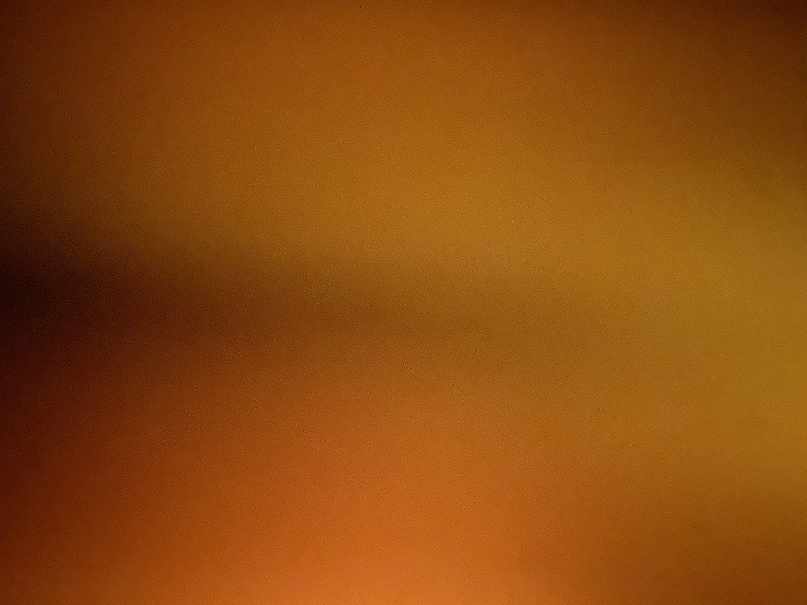
The question of the meaning of life is certainly a doozie. I mean really, ”What is the meaning of life?
When it is posed somewhere between the big bang as a beginning and the annihilation of our universe as the end, it’s no wonder people are agape, stunned, anxious, flummoxed, befuddled, and worse. Complicated of course by the news that god is dead!
What if we pose the question just after breakfast and only about today?
What is a scream. What is the colour of the light? What is a human being? What does ‘what’ mean? How did god get away with it all these years, as what people thought was the answer: namely, god?
We are nothing but the quietest whisper slipping through the then/when/how features of existence. What happens ‘now’? Now of course being that zeptosecond of our existence with big bang to the left of us and big crunch to the right. And here I am, stuck in the middle with…
Of course, I don’t know the answer — in great part because it’s not a question. It is, rather, a stunned, blathering babble!
Yet, we deeply comprehend the query.
Ooof!
metaphor, allegory, simile, allusion, anthropomorphism, analogy, symbol, representation, parable, narrative, myth, legend, oral history, anecdote, tale, fable, lore, biblos, story — we are beyond lost without them!
Perchance, to dream
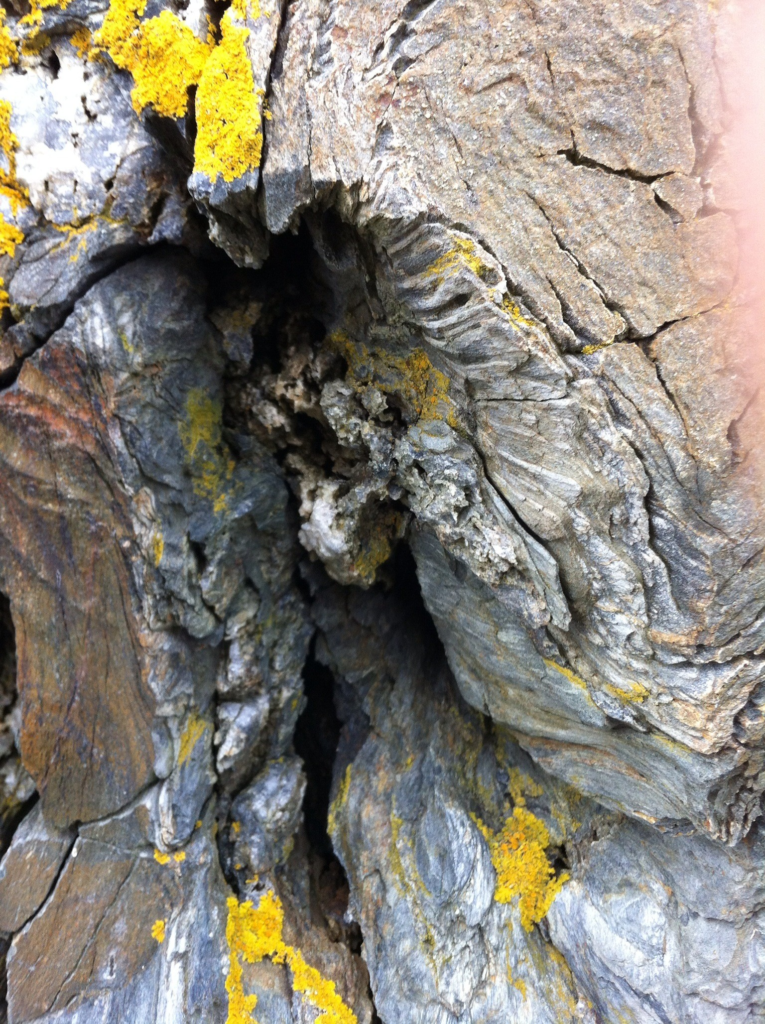
All of this stuff I am writing is like a bit torrent from my mind. It is not the mind’s detritus. That what I am writing is not always orderly, following conventional wisdom or patterns of what is usually called reason or logic, or has extraordinarily little to do with its truth, its real meaning and nuanced hints, or my spewing intent, is simply a negative coincidence.
Sometimes, because this overflow is chaotic and of a disruptive nature, appearing non-discursive, non-linear, and not logical, not properly argumentative, paragraph-non-paragraph structured, too declarative, not buttressed — for me, this is a good thing.
This arrangement of words is not a poem, not a narrative nor a story. It is not a description of my mind’s functioning; it is the stuff which has come out.
What is oozing after all?

As if One
Space is location, time is movement. This is called the space-time continuum, that is, things in movement By chance, we humans try to measure the one by the other. Amongst other things, it is not a continuum.
There is now and always has been and always will be action and movement.
It is as we say, in the nature of things. That is to say, the most fundamental aspect of existence is its dynamic character.
When we say that we are studying nature and natural phenomena, generally speaking we seem to be talking about some thing which we take to be as we say ‘outside’ ourselves. While this is not a false premise, it is a far way from being simply true.
Stone Skipping
It is not my explicit intention to argue against anybody, any theory, or any general approach to the meaning of life, and the nature of reality, or knowledge, or experience, etc., as articulated by this person, that person, or the other person.
Alas, it may be so occasionally!
What can I say?
I am, after and before all, a living human: not more, not less.
As well as its hint of awe, lived wonder intimates and enhances inquiry. Astonishment is also an internal, magnetic attraction, and a delving into a zone of uplifting unease. It is a stepping into, and hopefully across the abyss, before which, I, the wonderer, often stand, agape.
A work of art points beyond itself, from its creation and its inherent meaning, and while often appearing orderly, tends to disorder. Even its harmony doesn’t integrate easily into categories. What I am doing is not art either, but it is like a second cousin once removed.1, 2
1. (a.) Existence itself is not a thing: so also, nothing. (b.) Is it any wonder we are captivated by logos. As if our words and thought actually ensnared existence in their delicate lace and iron-strong web. (c.) Not everything squeezed into our phrases and sayings is true, real, or remotely and fundamentally, imaginable — in its entirety. (d.) Saying, articulating, writing, drawing, painting, carving, constructing, thinking, feeling, conjecturing, etc., do not create existence. They do, however, touch it and indicate its contours, subtleties, nuances, mists, and granite surfaces. They are indeed, human creations. (e.) What touches with the mind’s skin is the living being.
2. Robin George Collingwood, The Principles of Art, 1938. (A delightful and eye-opening read; lots of difficulties but very straightforwardly nourishing).
Ibn Sina, Anselm et al.
Saying/writing, thinking/conceiving and being/actual are not the same active state as one to another. Declaration number 2.45(i)!
God is that than which nothing greater can be conceived.
That than which…nothing…can…conceived — nothing?
Wheew! I’m out of mental breath!
Can we humans conceive of a ‘that than which’ (existent/existence) entity for which a ‘greater than’ can not be conceived? Not even remotely clear on my end, I can tell you straight up!
Maybe we can conceive of an entity which can conceive of an entity which can conceive of an entity which can conceive of ‘the nothing greater’? Conceive? I mean, actually think it — rather than smoothly utter the words.
These very words have a long and much discussed, debated, denied, accepted history, that which we ourselves cannot conceive? How? Meaning? Conceive, think, say, write? What does a word do in this game? What is a pronoun?
Nothing is that than which nothing lesser can be conceived?
En passant…
At times, my soul feels so devoid of life’s force, it is as if it is not even there — nothing. It is never not there of course. I cannot find its deepest need and I don’t know how to enrich it on the path — which itself is not available. My soul is so far from its fullness that it is as if it is emptiness itself. How can that be?
PS. What do we suppose is meant by some of the early eastern philosophical thinking that says the primal ground to everything is the void. I just had a mini flash on the matter/antimatter conjunction, existence only if perceived, existence yes-no, be-no-be. (https://home.cern/science/physics/antimatter).
There are living physicists who claim that there are anti-photons, and that photons and anti-photons are the same ‘thing’ — sigh!
Holy smokes, Batman, this is getting out of hand.
Betimes, 1 (Is this building?)
In the narrowing tunnels and scattered chaos of dark, spiritual difficulties, the most straightforward question emerging from the suffocating gloom, is: how do I hold on: alive, caring, generally purposeful, praying for a slight chance that home may yet be found and a foundation built?
What is this ‘how’?
Betimes, 2 (indice caché)
In the course of my life, there are fortunately moments when I, like other humans, have small insights, a hint of this, that or the other thing. These hints can be accompanied by a feeling that things are ‘all right’, in the world — and with me. Betimes, this feeling that things are ‘all right’, borders on a lightening of spirit and an insight into happiness.
There are hints that these attendant, delicate moments flourish as a result of a great deal of thinking that I have done, and a fair amount of searching within my soul, and a skirting over the complexity of my emotions which have passed through my deeper spirit in the course of my whole life.
Wondering is often perplexing, striving to understand is as if grasping for nourishment. These ephemeral whispering moments are not always, nor often enough, within what I broadly speaking, would call my ‘control’. Fostering is an ongoing (too frequently intermittent) activity!
Betimes, 3
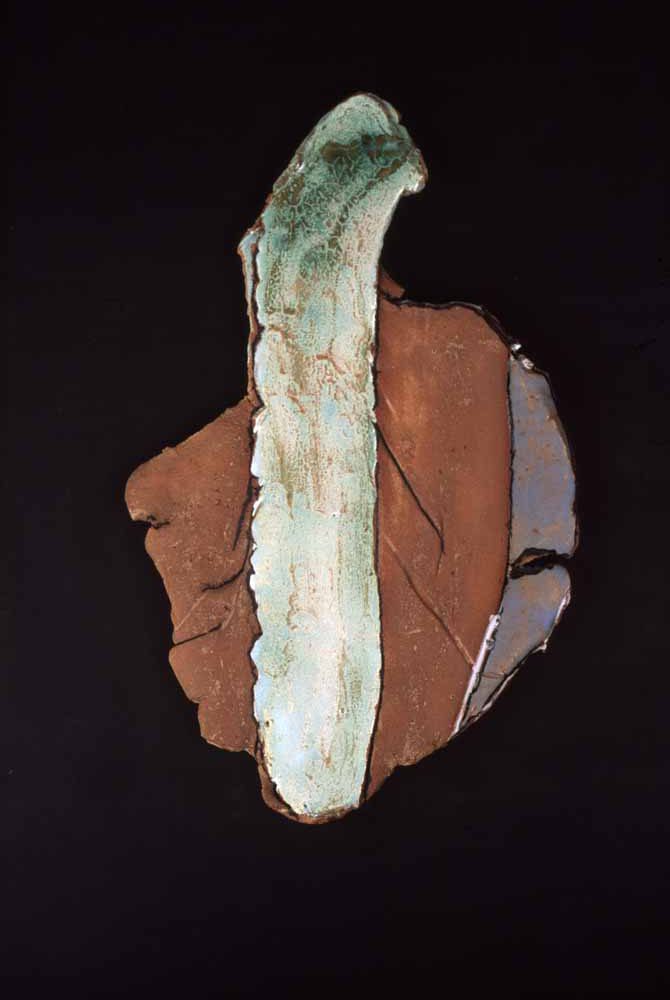
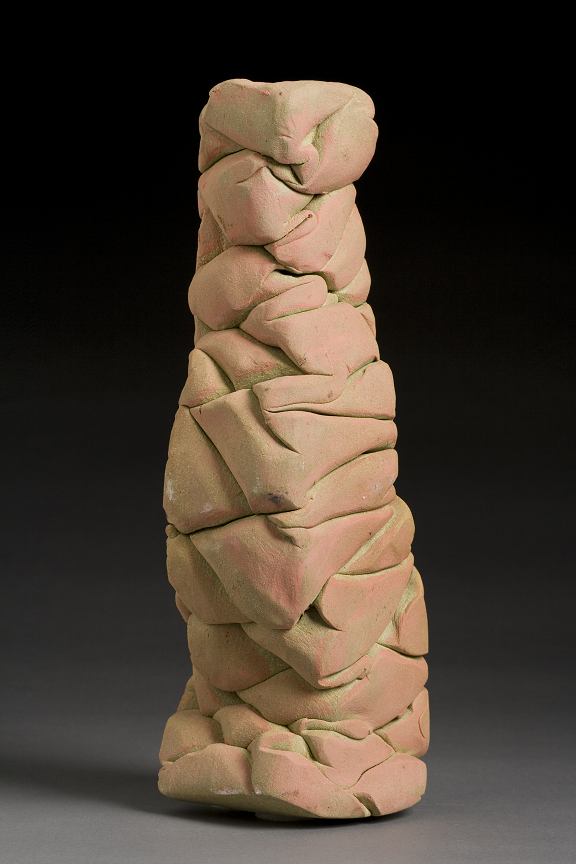
Occasionally, I am told something which I already know, such as, ‘all things pass’. The passing of things is like a happening rather than a result. Happenings appear to be deeply passive, although this simplification has an aura of illusion about it. It seems to me that things happen when a complex of circumstances exists, some of which are brought into being through my arranging facets of the world and channeling a gamut of actions on my part in my felt and ethereal inners. Such fleeting glimpses, inklings, and pointers are at play with the fullness of my lived life, enshrined in the wholeness of existence itself.
And some are just there!
But?
Always needing the logos?
Sigh!
Of course it’s a mystery
Betimes, 4
When we plan, we are designing a complex of initiatives and various forms of movement which will fit into what we foresee to be the states of affairs of all the other fluctuations that are already going on, everywhere, all the time. Planning is before all else, an encapsulating and delimiting imaginary vision. We cut up the world; we act as if the vision is the actual world. This is, of course, a creative declaration and a setting aside of reality so that we may be effective and conform to the ideal, planned notion. The world carries on regardless. When we act, however, the unreal and the real dance.
Take a breath, now!
Time is movement, time is change. The measurement of time is the measurement of one complex of movements relative to another. That is, relative to another which we take as being more constant in the complex of movements than the one we are measuring.
What I have been describing, seems most easily understood when we imagine that we are talking about physical objects moving in a spatial world. That is certainly the world in which our capacity to manage time (movement) is the most sophisticated and habitual.
Planning is before all, a denial of actual time. This denial has its positive in the encapsulation of the possible.
What I have been saying, however, applies equally to emotional states, mental states, intellectual undertakings, spiritual initiatives, and the many quests human beings have for the deeper values of human life: peace, love, kindness, truth, justice, and, sigh, rapacious thoughts and profound selfishness.
Time is not a clock.
Betimes, yes! Betimes. no!
Body/body, whose got the body: Image/image — from whence?
If all our thinking is fundamentally based in what we call our ‘body’, the physical self of the human being, then, when we are dealing with ideas of ‘things’ which no longer occupy space or have no spatial dimensions, we should acknowledge that we are no longer using our imagination, and its interwoven thinking, concretely to think of them. These is/are image(s) without the body’s perception. These non-body relatable images are created/generated from within our minds to fill the gap — the emptiness of non-perception.
All our thinking past this point is abstract, generalized, and intersectional. If language about these ‘things’ engages body-based images, this language will express metaphorical or symbolic meaning. Its truth value is therewith dramatically constrained, stretched and contorted. It requires a story of its own if we are to garner ‘meaning’ from it.
Each time we discuss something non-physical/non-spatial which engages the notion of ‘body’ as a physical entity in the dialogue, we have a good reason to doubt that we have an adequate grasp of our subject.
Queries awaken with predawn light:
A first and most apparent doubt is that the entire realm of mental states, consciousness, ideas, feelings, primal sensation, profound emotion, or their endless, related states, are exceedingly difficult, (impossible?), to comprehend. What is a generalized image but a blur? The clarity of words define the shroud.
A second is that we speakers/thinkers should feel entirely obliged and commanded to provide a complete, accurate, intelligible portrayal and dialogue account of exactly what a ‘body’ is — preferably a human body, thank you.
Words come out of bodies and float. Bodies live and vibrate. It is more than important that they all interweave in an intelligible manner.
So, how?
Not just an anachronism: sub species aeternitatis1
Everything is continuously in motion. Things stop (not in motion) only relative to other things which themselves are either stopped, or in motion.
For humans to consider a ‘thing’ as truly stopped, we must function as if it is a non-temporal object.1
The location of the thing is that thing considered sub species aeternitatus (as if eternal).
Eternity is not a long, long, long time.2 Eternity is independence of time: not time/no time.
Acting as if an object is actually not in motion is to suspend ‘physical/spatial’ realty in a complex imaginative construct. It is prudent to hold this thought near consciousness for speedy retrieval.
Every time we form a general idea of a thing like a chair, not just an image of a specific chair, but an idea of it as a chair, we are considering the complex of chairs encompassed by this general idea: independently of time, of temporal considerations, and the general idea of movements and change.
You know, what is a chair? Not this chair or that chair: all chairs, or a range, or type of chairs.
Every time we consider a variety of objects from the point of view of something like an inherent similarity between them, we know that these objects or things are notions or events, or circumstances, which are all in what we call space-time. That is to say they are temporal.
When we say they are temporal, we mean they are moving and changing and part of the moving and changing world.
When, however we generalize our thinking and form a unifying idea of those things, we detach that concept from the variability of time (movement). Consequently, through the schema of the concept, we consider those things independently of time even though each individual thing continues to exist in time.
To me, this is the genius of the thinking imagination.
1. Zeno and his second cousin once-removed, Heisenberg, got this notion dead on!
2. I would add, however, that for most people most of the time, eternity is actually an endlessly extended period of time. It is prudent to recall this in any authentic dialogue to avoid unnecessary mix-ups. Eternal is non-time, not a long time
There is no arrow — Nor has it been loosed
The present does not follow from the past. The future does not follow from the present. Every creative instant alters the inherent nature of whatever it is that we are talking about. No instant is only itself. That is one of the crucial notions of what it means for a thing, an instance, an energy, a point and a beginning, to be creative. Everything that is now, has not always been; everything that is now and what will be, will not be all that there ever is or was. This too is creative drift in existence.
As we say in the vernacular: there’s more to Being than meets the eye. Non?
PS. Time-Motion does not stop. There is no existence stop-go button. It does not move from left to right or from behind to the fore. It does not ‘anything’: it is only motion.
Stepping without Stopping
Grosso modo, when we make decisions, we step across the divide.
Making decisions is not unlike walking. Sometimes it is automatic, smooth, flowing and forward moving. Sometimes it is hesitant and uncertain and requires attention. Sometimes it is assertive, purposeful and then you’re driven. Sometimes it is precarious and dangerous, and a slip could mean death.
Life is a decision and a step. Sometimes we take a step backward. Steps backward tend to undo ourselves: there is no going back. This step is not the movement of feet but the movement of a person.
The Bramble is not to be undone!
It is not that the past is the past. It is that nothing goes back. There is no actual undoing — only imagined so.
Nothing goes forward either.
It just goes.
Biblos: in the beginning…
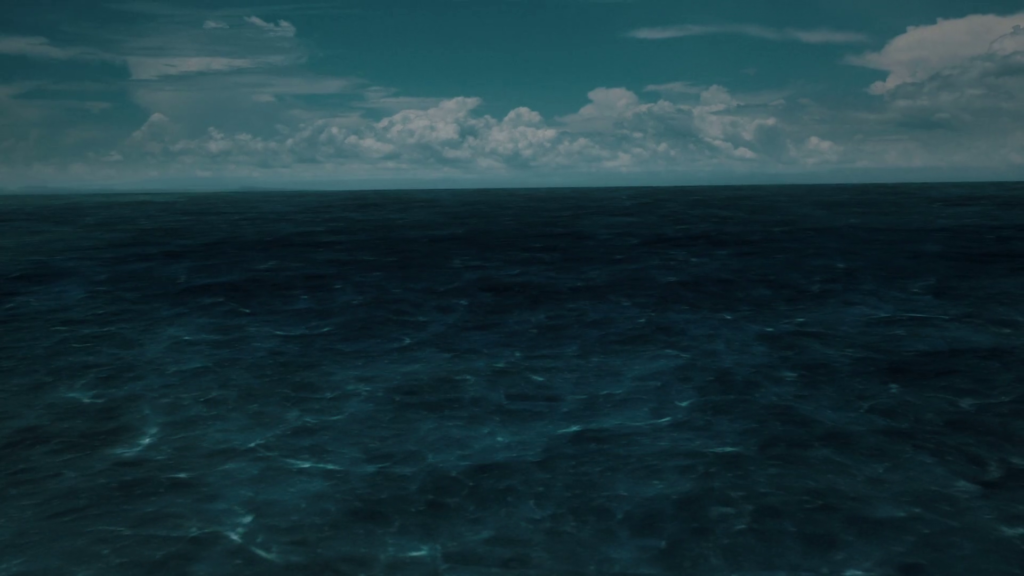
Finding the beginning of things often seems quite simple. Human beings are born and grow up, live their lives, and die. Normally, we think that the beginning of a human being is their birth. For sure, right?
This simple fact is applicable to everything which lives, and we seem to have a secure grasp of this notion.
Really, however, wherein lies this simple fact’s truth? A human’s beginning is what is usually called birth — perhaps should be seen as conception, hmmm? That somehow feels more precise. Yes, but what is this story about all the ova which any given woman will ever have, are already within that woman with her own birth? That idea/fact most assuredly communicates that the ovum beginning of any child is extant dramatically before their birth and even their conception. And not just the ova are like this. Sperm are generated regularly so that the post puberty male body always has sperm within it before intercourse, conception, and birth.
This gets tedious, fairly quickly, I feel compelled to say!
What is it that we want to know in any given domain of inquiry? Of course, the obvious answer to this is that it depends on what it is that you want to know from the stimulus generating the question.
This is why philosophers have always been around, are still around and will always be around. Their spirit is hidden in the deeper spaces of most of our minds. It is not about wisdom. It is about obscurity and fogginess, which are often difficult for them to abide.
Often missed in everyday life are simple questions. The simplest ones are often, in and of themselves, actually the deeper questions of life, articulated flimsily on the upper and slimmest of surfaces of our actual daily lives.
This little bit of twisting and turning is couched in the undertow of questions humans have about the origins/beginnings of things.
There is, equally, a subtly powerful riptide nascent in most efforts to explain ‘what’ a thing is, ‘how’ a thing might have come to be: what we loosely designate as the cause or the ‘makeup/structure’ of any given thing.
We have taken only the paths we have taken and not the paths we have not.
Explaining is so simple and so dramatically complex and obscure.[1] What is this? Why is this like that? How did this begin, come to be, continue to exist? What is meant by that? What, why, how? If I have the what, the why, the how, do I understand, and could this understanding be an explanation if I showed it to you. What if you did not understand or agree? Simple, non?[2]
Setting parameters: ‘this’, ‘that’, ‘what’, ‘how’, ‘why’, ‘if’, etc.
It’s a wonder we can stand up and walk, let alone explain anything ‘completely’.[3]
In order not to be too confusing, I’ll be at least somewhat confusing: some things do begin when they appear to. This is not clear in advance although we commonly think it is. A tree begins to grow again in the spring, and we mean it grows its leaves again while its sap flows. The butterfly begins to fly once it exits the cocoon and then we call it the butterfly, not the larva. My car started when I pushed the ignition button. Dinner begins at 6:30 p.m. OK? (P.S. Time is now able to be measured by the vibration of an atom).
But life began on earth at a certain point: its beginning. The earth of course had a beginning, and we designate that to occur within the very large timeline (‘X’ zeros ago), inside/connected to what we call our universe.
We call that complex, earth’s beginning but we know even as we say that, that there were many events, causes, circumstances, elements, objects, things, undertakings, explosions, and the like, which, as we say, have preceded or accompanied our earth’s and/or our own beginnings.
We strive to avoid the ‘nothing’ in all this, of course, and the (now) cursed notion of creation out of nothing. Sigh!
Do our words and the history of these very words ensnare us?
It is important to remember that in human affairs and considerations related to human affairs, there is always a beginning to things entangled with us. This is true even when we consider something as small as a zygote, or as immense as our universe.
The exceedingly small, simply takes a different kind of explanation for its beginning but the principle applies just as well. For example, how did amoebas come to be; how did early shellfish come to be, how did the first plant come to be?
In all of these cases, humans tend to like to know a couple of things, firstly what is the composition of the thing under consideration, which is to say what is this thing, and secondly, how did this actual thing come to be.
Our curiosity is frequently practical — this here now — and by no means infinite.
Do you get what I am saying?
When I wonder about the beginning of all things, existence itself seems to be the best case when our shovel hits bedrock. I start by saying there is no beginning. You might ask if there is no beginning, how could it come to be? Of course, the answer is, it didn’t come to be: it is, has been, and will be. That is the nature of existence itself, what we often also call ‘being’.
The human sense of time is not existence itself; our arrogance embellishes our ego.
[1] To Explain the World: The Discovery of Modern Science, Steven Weinberg (2015). A marvelous read – be patient. [2] I remember, when having the beguiling experience of studying Whitehead’s thinking, that we concluded that the only ‘thing’ more complex and obscure that his general notions of existence, was existence itself. I am still there on that one. [3] Behave: The Biology of Humans at our Best and Worst, Robert M. Sapolsky (2017): A terrific tome which shines many lights.
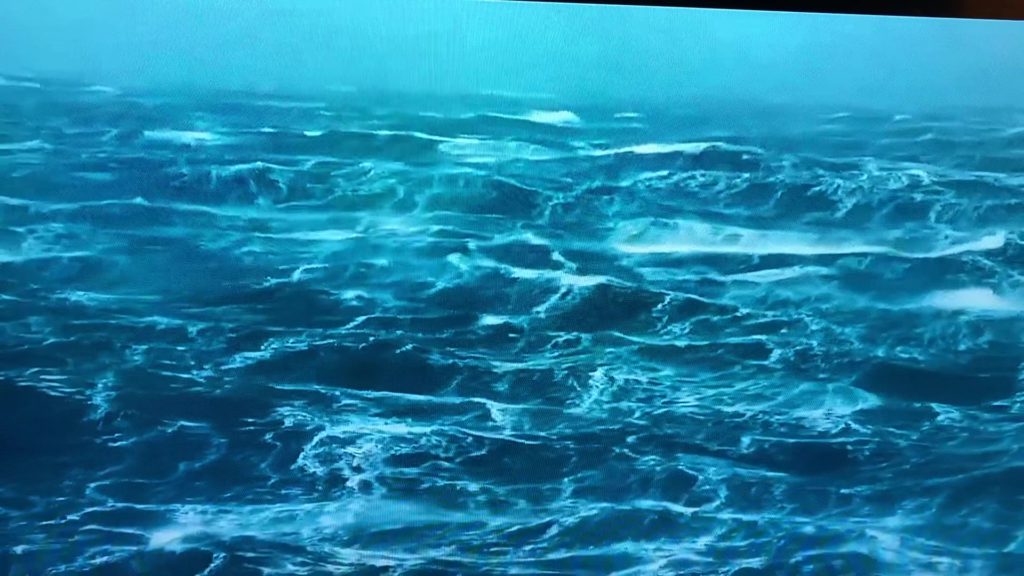
actual waves are not an oscilloscope
The human body is a body, not just the idea of the body.
If all our thinking is fundamentally based in what we call our ‘body’, the physical self of the human being, then, when we are dealing with ideas of ‘things’ which no longer occupy space or have no spatial dimensions, we should acknowledge that we are no longer using our imagination concretely to think of them. There is image formation without the possibility of a body’s actual perception. (What are these imaginative constructs?)
All our thinking past this point is abstract, generalized, and intersectional. If language about these ‘things’ engages body-based images, this language then will express only metaphorical or symbolic meaning. Its truth value is therewith dramatically constrained, stretched and contorted. It requires a story of its own if we are to garner ‘meaning’ from it.
Each time we discuss something non-physical/non-spatial which engages the notion of ‘body’ as a physical entity in the dialogue, we have a good reason to doubt that we have an adequate grasp of our subject.
There are two critical issues wrapped up in this realization.
The first and most apparent, is that the entire realm of mental states, consciousness, ideas, feelings, primal sensation, profound emotion, or their related states, are exceedingly difficult, (impossible?), to comprehend.
The second is that we should feel entirely obliged to provide a complete, accurate, intelligible portrayal and dialogue account of exactly what a ‘body’ is — preferably a human body, thank you.1
1 Walking on water is rightly thought to be a miracle. Does 21st century thinking suggest that walking on waves is not?
Things, Bodies, Innards (?)
Once philosophers and other common people had realized that the human grasp of what the world was/is, is inevitably intertwined in such a way that we do not know things as they exist in of themselves, that is to say, independently of what we take them to be, we all started to feel boxed in. It certainly plays an undefined role in profound anxiety — angst.
On top of that, is the growing awareness that god actually is dead, or, heaven forbid, never was. What holds it all together, pray tell, if this recognition were even remotely true?
(Do not be simple and tell me it’s the Higgs.)
One of the more frustrating elements of being human is that we know that reality is not reducible to us. Additionally, of course, is the companion thought that it does not care about us, think about us, arrange states of affairs for our benefit, organize itself to conform to our thinking, and so on.
Along with many of us, Sartre was painfully aware of this and as we know it gave him grief. Well, of course he is not alone, but not everyone senses this with grief or hopelessness. We are, of course, aware that we have our sense, our grasp, our perception, and our thoughts and theories about what we refer to as reality — they are all that we have of it. But they are not actually all of it.
Actually, hmm?
There is not a thing in itself. Where we see the table in front of us is a table as we sit on this chair which is the thing, a chair. The table is there, and the seat is here: they are the things. It’s just that everything that they are, is not only what they appear to us to be.
Surprise, surprise, we ourselves are not only everything which appears to us.
Go figure!
So, of course the question naturally arises, what else are they than what we take them to be?
It is unfortunate, but happily so, that there is no philosophical counterpart to CERN.
Chair: and here I am, stuck in the middle with you..
As is not uncommon in the 20th and 21st centuries, we accept that all things natural are physical, measurable with our instruments, material, segments of mass — the actual real stuff of the world, i.e., Nature.
My guess is we are still in the reactionary, pubescent rejection stage after god’s death — the pendulum syndrome. No more supernatural, therefore only natural. I am not clear why we so easily assume from that, that all nature is only matter — without actually knowing what matter is. (If we can measure it, it is real. We, the microdust on microdust, on microdust — Jack Webb, how could we possibly be wrong?) Sigh?
This naturalist optic has become a fairly common way of trying to understand the physicality of the regular world, and the universe with us in it. We would say in common language, this physicality/materiality approach will open to us the fullness of nature’s magnitude and mystery and what happens in it — always including us of course. We will understand the how and the why of events because we can measure them and form descriptive relations.
I like to recall that a few years ago, before the birth of any human living today, it was evident and not at all uncommon, that everyone thought that there was a God, a supernatural being overseeing the whole of existence. It is prudent to recollect that everything which God had created was of course, natural, because he had created it. This natural world included a realm of thoughts, ideas, and minds, a full range of spiritual beings and a physically extended world. There were also, of course, a myriad of unknown forces and powers within the natural world. Additionally, there was the practical good fortune that because God had made the world in its absolute entirety, it (the world) was there and constant. As an aside, there was also the hubristic belief that humans (man) were made in the image of god, and thereby, aligned with nature — nature and the world could therewith be known by humans (man).
What a few lost souls of today might call, “the good old days”.
In our contemporary material existence, knowledge-oriented weltanschauung, however, we think that nature is physical and thoroughly explorable with our human tools, devices, and current scientific methods. There is nothing supernatural, which is to say that there is nothing which is not natural. The obvious outcome of that thought world, is that everything is physical/material. Descartes’ idea that extension and nature operated on fixed, virtually mathematical rules, and were physical and observable, is alive and well in the undercurrent of our present day thought patterns, presuppositions, and language. It has come to rest, as we say in the vernacular: in the mists of our thinking and collective memory, but it is there just the same! The ‘cogito’ has been let go, like an innocent, unmeasurable whisper.
Amplified by Newton’s fantastic grasp of the measurable world, this thought-world set the stage for a new way of seeing what the ‘world’ was and is. This new way of seeing nature could outline and explain how we humans came to be, live and think, and eventually (hoped for even today) what it means for us to be alive and more deeply, what we are. Our natural genius can/could probe what everything ‘really’ is.
Wowsie! Take a breath, spelunking is a dangerous adventure.
Let us continue as if this cryptic portrayal is acceptable for now. We have watched with some wonder and fascination as CERN in Switzerland, has created a device, a large experimental tool, within which hundreds and even thousands of scientists are doing experiments on the nature of matter and thereby mass (nature’s perceived physicality). They, like many humans, are trying to figure out more concretely and more deeply. what physicality and therewith, matter, is. That is, what is the ultimate make up of the chair you’re sitting on, and what the body is that you are. (Plus, the universe, the galaxies, energy, quanta. Even your espresso! So, I hope it’s a good one.)
They figured out how to send objects, sub-atomic particles, through a long, circular and cylindrical tunnel. In conjunction with other tools, they have been able to make those particles accelerate astoundingly close to what we call the speed of light. When they get these designated objects going at this exceedingly high speed they then channel them in such a way that they run into other things, like protons: Bang! There’s a massively, ridiculously small, obliterating explosion and a gazillion little sub-particles, excitations, zigzags, bit-bits are thrown off from this collision. As they study all of this little stuff, they are trying to see how they can develop a theory as to what it is that makes up matter and mass at the exceedingly beyond-small level of subatomic particles, and subatomic particles of subatomic particles. Some of their work relates also to theoretical work about the state of matter at and near the big bang. I mean, heavy stuff.
Over the course of the last number of decades, these specialists in the analysis of subatomic stuff have developed complex notions about the nature of matter, mass, particles, high energy, — nature. They are probing to determine ‘what’ it is which most deeply constitutes the makeup of a physical thing, a material thing, a thing which has mass. Sometimes, god forbid, even massless particles and energy become known as they probe! The main map/picture they have drawn, which is like a distant cousin to the Periodic Table, is the standard model of physics.
The zones of the standard model are actually not particles in any normal meaning of the word. Hold onto your beret. There is turbulence coming! Firstly, they are too small (they do not have size) and secondly, they are not things. Thirdly, they are ‘fields’, misty-like domains of excitations of energy, force ‘carriers’, transforming agents and similar realms of ebullient activity and spheres of influence.
Language is not the only limiting factor in this game by any means. No human-visible light wave, ergo, not visible, not imaginable. Sigh! All those fantastic images — but, but? What is a representation after all?
Recently, when humans (CERN specialists) found the Higgs boson, they realized that they had found a crucial configuration of energy because the Higgs, by its nature, transforms (?) energy into mass by enabling the highest speed energy to slow down. We have come to understand somewhat that energy which travels at less than the speed of light in a vacuum, is/has mass. Any configuration of mass is energy that does not travel at the speed of light. The Higgs Boson is/has a realm of influence enabling the transformation of the one into the other (this is as handy as anything we can imagine). No Higgs, no mass. No mass, no matter? No matter, no physicality? No physicality, no chair — no espresso. No me, no you.
There are no building blocks. This is not LEGO.
Keep your wits about you.
Be ye not deceived!
Vanishing point perspective
Do not waver: be flexible.
You can’t worry about molecules, atoms, and quanta.
You’ve got to worry about souls.
Getting lost happens,
Even with eyes open.
Not then; Not the other then, either
Today’s soul can unknowingly and effortlessly be lost in the search for tomorrow’s happiness.
Longing for a future deprives and starves the present of its affirmative sense of being here-now — living.
Dwelling deeply on the past quietly abandons today’s soul in a homeless world.
Today is the pinnacle of meaning for the human heart.
There is no balance between yesterday and tomorrow. Today is not a fulcrum. The past is not the input and tomorrow the output.
Yesterday is not only gone; it is remembered — fragmentarily.
The future does not exist. It appears by disjointed, anticipatory magic in our thoughts, emotions, desires, needs, passions, lostness, and crying for significance and importance, within our deepest heart.
The present moment is not a moment; it is the only life we have.
All other life is a memory, a dream, or an imagined desire.
Today, this living here-now, is no more an illusion than is existence itself.
Do not play with me!
Clarity, Oh Clarity, Wherefore art thou?
I am where I am. I am what I am.1 These little affirmations are so close to what we call a truism: namely, something which is true by definition; that is, from within itself.
Part of the beauty of being a human being, or at least one juncture of the really obvious beauties, is that these phrases in their striking simplicity, contain all of the conundrums, queries, learning, stumbling-mumbling, confusion, clarity, hopes, desperation, audacity, ugliness and rapacious souls, angst, insights, life and its ceasing, and dreams that are the living of human life.
Give me a break, you say!
Well, okay, I’ll give you a break — but I’d guess it won’t be the one you want.
Being in a mist has the distinct but awkward advantage, that the things that you see, attempt to grasp, or use as guideposts, are obscured by the intervening grayness, wispy whiteness, and endless droplets.
An advantage, ooof, surely not?
This renders forging a path in fog a mostly an inner task, otherwise often avoided. You are living, feeling. Being in this mode and mist is a slightly persistent, soft recall of our deeper selves. It is not, however, an exclusively inner task. Take care of your sensibility of the unseen and allow your seeing to see.
You are in it. If you fall off a cliff, sometimes it is metaphorical. Sometimes it is not. You will know the difference if it happens!
On the rare occasions that there are clear moments, this is taken as a gift, occasionally a surprise, and not always welcome.
One of the disadvantages of being in a mist, is that what you see, attempt to touch, grasp, or get a hold of, or even try to think about or plan, is rare and unforeseen; so that when a clear, productive moment might come — it may be elusive and just out of your grasp.
Existence is not a haze. How I live in it often is. It is so now, and it was so then, and I expect will be, in another then.
There is no road not taken; there is no road to take. Forging a path is creating the road — later said to have been the one taken. (IHO RF, with thanks.)
1 And I am not even Popeye, let alone Yahweh!
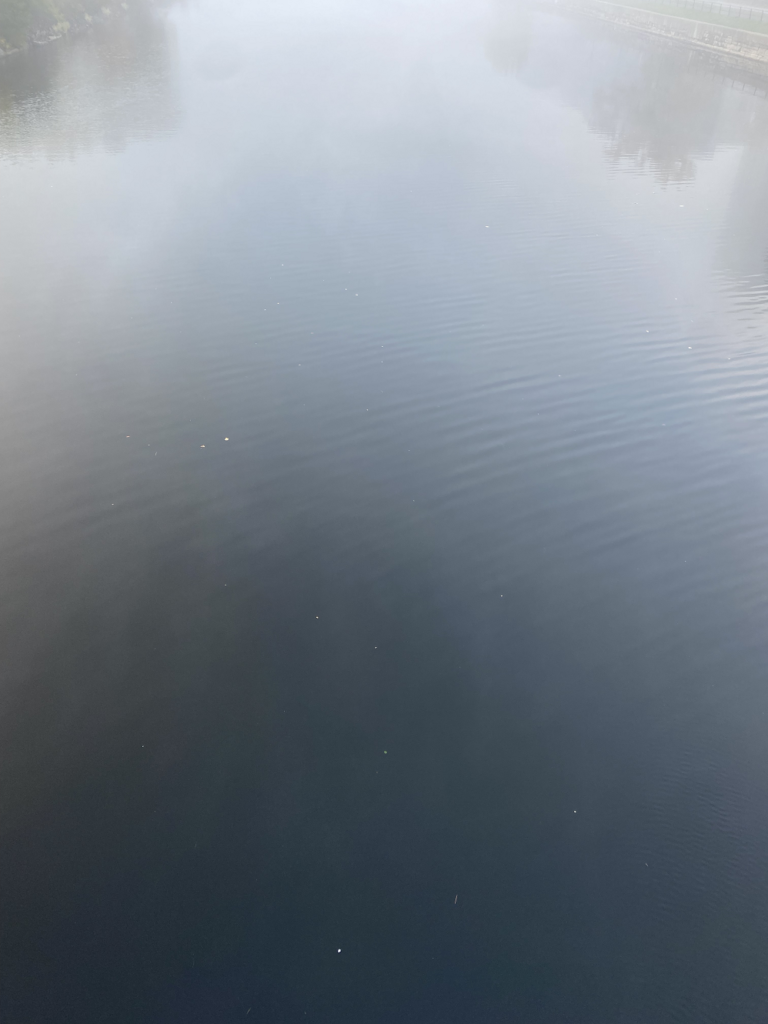
Yes, I think so.
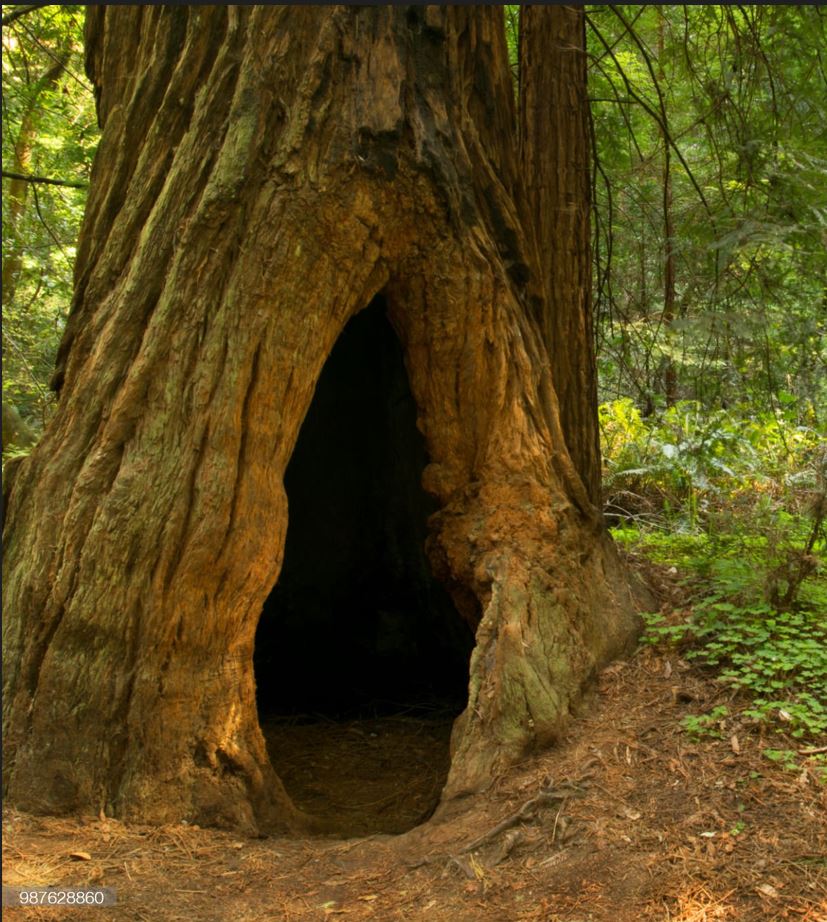
(in onore di Dante)
(Getty Images)
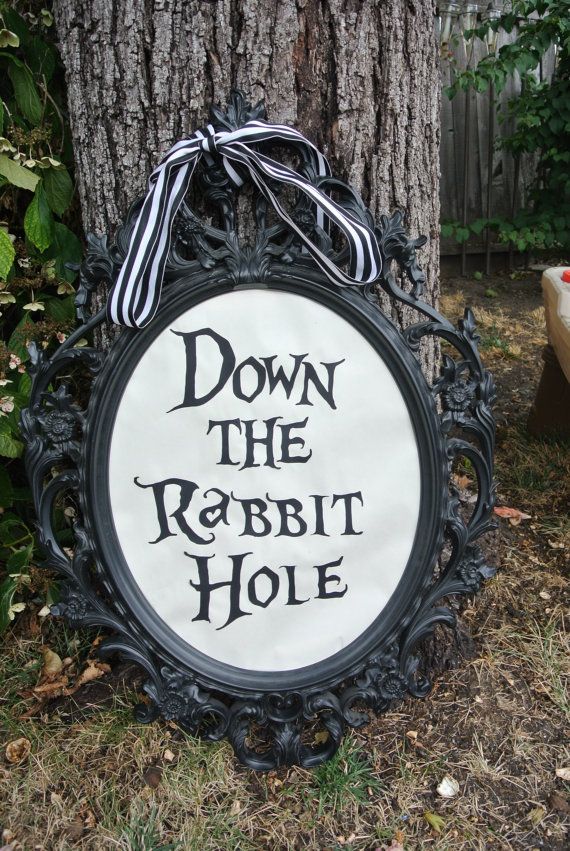
Things do not disappear and disintegrate from within their own nature.
That seems like a peculiar thing to say.
Why do things disintegrate, fall apart, die and disappear, if not from within their own nature? Things which are limited and finite, are circumscribed by engagement in their contexts; this fact limits them (defines them as finite).
We think that because any and every actual thing is finite, this clarifies for us that they are not infinite (without limit). Really all this means is that any particular thing, all actual things, and even the collectivity of things, exist by virtue of a limited amount of energy in an envelope more extensive than itself. This state of being which it/they has/have, is just the whole of what the thing is — it constitutes the actual very being of the thing. (Here I think it is fair to say the existence and essence are identical).
This seems repetitive — sorry, occasionally helpful if not necessary. The limit of a thing is always its relational power/reality/energy within the context of its (total) existence. For that which is not finite, there is no context. The ‘unlimited’ passes into a non-referential mode of discourse.
Be careful here. Just because this seems peculiar, does not mean it is lacking veracity or comprehensibility.
A thing’s energy may be seen by humans in a physical form such as a chair, or a passing and felt form, such as a wind or a cloud, or detected as an extremely small thing (with appropriate sense-extenders like microscopes), as a bacterium or virus, or it may be even more ethereal, something like a sound wave, a gamma ray (with a Geiger counter), a light wave (with transliteral scientific equipment) or background radiation in the universe (microwave probes, etc.).
Generally speaking, many if not most humans think of existing things as stuff that we can know something about. For what we commonly think of as the natural, physical, and material world, this is less clear in the 20th and 21st centuries than in prior eras. We have created concepts like quantum mechanics and quanta, the uncertainty principle, and hyper high-speed particle physics (without actual particles), quantum field theory, massless particles, force carriers, entangled yet disparate constituents, the big bang, and black holes.
The principle still makes sense, namely, things do not disintegrate from themselves. I myself, accept this completely, and think that things break down, fall apart, and cease to exist because of a dynamic interaction of the energy of the thing itself with the immediate ambient energy/forces environment in the world, which nowadays may include an aspect orientation to the universe: that which is not the thing itself.
It is what we would normally call the ‘other’.
Here a thing, there a thing, everywhere a thing-thing
A thing, no matter what it is, is not simply and solely the dynamic interaction of the other/external multitudinous forces which intersect and interact and play within that ‘mode’ : what we call that thing.
Things are not only relations of other things (and those of other things, of other things, etc., and their forces). It is not only that ‘nexus’.
The thing itself is its complete existence. As with other things which have forces intersecting with the thing, its own forces intersect with other things. We all intuitively know that this complex, the thing, dynamically interacts with all of the forces that come to it, pass through it, and enter into play with it.
It is real in itself, just as they are.
When we designate a thing, we do not, could not, encompass every force it itself has and/or all the forces which intersect with it in their entirety.
Designation limits context.
This is a fantastic strength of common language. It is also, of course, the fragility of this very language as our words enter the entire world of other words, all affecting one another as things do things.
Just as they are there, it is there.
How does a chair come to be a chair? (Molecules, particles, particles that are not particles but universal forces in all existence…).
We (the thing that we are) are all interested in forces within our own energy, intersecting with the intersecting forces of the other things. Or within us, ourselves — that ‘we’? Sigh!
How does the chair come to be a chair?
I am sitting on it, not only thinking about it.
Golly gee: I, a thing; the chair, a thing. And everything (matter, mass, molecules, atoms, sub-atomic particles, the particle-forces-fields-domains-carriers, etc.). Right here in this room as I am having my espresso.1
1 And nobody seems surprised. How can that be, pray tell?
What ‘what’? :: If ‘if’ — It’s as if, what if…
It’s as if ‘what if’ were a prelude to an actual question rather than a confusion concerning the meaning and significance of the words ‘what’ and ‘if’.
What could the word ‘what’ mean in the expression what if? What could the word ‘if’ mean in the expression what if, if the word ‘what’ in the word ‘if’ were not fully understood beforehand? How could anyone set out to answer a question if they have no significant grasp of the orientation and significance of the words in the question? Pray, tell!
If the word ‘what’ in the expression what if we’re replaced by the word ‘when’, would we have any confusion? That is, when if…
What if the word ‘what’ were replaced by the word ‘where’, as in, where if. Would we have any confusion concerning the intent of the expression ‘what if’ when the phrase were actually to say, ‘where if’? Where if…? What could the replacement word for ‘what’ mean when the substantive noun becomes ‘where’, “when’, or ‘how’?
So, what does ‘what’ mean, let alone ‘if’? Pray tell.
To be and not
Every measurement requires the suspension of reality. Every movement requires that we gauge some thing to be a constant. The suspension is that we act as if the constant is a null movement, while we simultaneously accept, grosso modo, that everything is in motion all of the time. These two ideas are companions and gather meaning from one another. Equally, however, they partially and importantly negate one another, even as they allow us humans to move forward, change the world, and act as if we know what we are doing.
PS. Heisenberg and his older cousin Zeno wondered and concluded each in their own way. But not with certainty, for either!
Getting off the train: Which station?
The question that is coming increasingly to mind when we look at almost any physical object, is more litigious than in earlier times.
Can you hold an orange in your hand? Standing at the edge of a forest, do you see trees? Did you drive there in your car? Did you stop on the way and have a good coffee? This ‘you’ is clearly what we call the ’physical’ you: people can see you and take photographs (don’t get me distracted with the no-self discourse right now, thank you). You got your coffee, you got your orange, you got your trees, you got your car. That ‘you’.
It’s pretty clear the things you have are all physical. We don’t normally get confused about this. Sometimes when we see a mist, when we feel a wind, when we sense something near us but don’t know what it is, we are pretty clear that the ‘thing’ is actually some thing, but we’re not sure exactly what it is, but we still think it’s there as a physical thing. This includes farting. Farts are things: bubbles, membrane, liquid, gas. When you smell them or feel them leave your anus, you know they’re physical.
For some time now, humans have looked at things and pondered the ‘what’. Once we had created lenses, magnifying glasses, telescopes, microscopes, electron microscopes, accurate heat-registering devices, radio wave recorders, and x-ray analysis tools in the last few hundred years, we began to ask, what are these physical things in our regular daily life, made of? We could see via these tools a full range of stuff and ‘things’, we had never seen before. Of course, we had previously wondered what ‘reality’ was. You can bet many ancient peoples wondered what all the regular physical stuff was and how did we get to know it, and what was this ‘knowing’ anyway.
Not only humans called philosophers think about these matters.
Well, the tree has a lot of wood fibre in it, and orange has a lot of orange fiber, a lot of liquid, a lot of texture, skin, and we began to ask just what these things are. What is the tree when we know it’s made up of a mass of fibres and cells and that kind of stuff, but what are those things made of? And then, what are they made of?
We’ve been asking questions like that for quite some time . For the last 150 years we’ve been operating under the general functional model that molecular atomic structures constitute all of these physical things. (A modern version of Democritus and Leucippus). The possible combinations of molecular and atomic structures is dramatically large, what we would call an indefinitely enormous number. (Even though we accept that there is a fairly small number of elemental combinations e.g., the periodic table). Many people imagine that atoms are made up of little balls, with smaller balls revolving around a larger ball; the way we have seen in pictures over the last hundred years.
With the newer tools we currently have, we now have evidence that these small particles are not little balls. They are misty fields of energy, and they are composite (not the un-cuttable atoms as previously thought).
We now have a more comprehensive notion of what constitutes the nucleus of an atom, and the structure of the atom itself as composed of even smaller stuff/particles. They are indeed divisible into sub-atomic components.
With these new instruments, tools and techniques and current sophisticated methodologies (e.g., CERN) which humans have created in the last number of years, we have come to understand that the subatomic particles, the particles that make up the atomic particles, are not ‘particles’ in any common meaning of the word. They are fields of energy, waves, bundles of energy, quanta, and similar constituents.
They are not espresso mugs.
Molecules and atoms are the substance of matter and the first constituents to make up a physical object. Its actual substance comes from its mass. Upon analysis, this matter and mass are not simply the physical thing, but are composed more by moving vibrating waves, force carrying zones and agitation energy. These subatomic constituents are not physical objects.
At this level when we analyze, we have come to realize that these very elemental things themselves are not really matter, but they are the basics of mass. This notion is increasingly uncertain.
We have come to understand in the last hundred years that fundamentally mass is a form of energy. It is energy, which is moving at less than the speed of light.
Matter makes up a physical thing and is itself constituted by mass, which itself is a form of energy.
I have this idea that I am minimally a physical thing, so I also am not only this physical being walking down the street with my orange, but I am also matter and therewith, I am mass and therewith, I am a form of energy.
Yeah, OK?
How does this form of energy, which is me, see the other forms of energy which are not me, as things? Why does nature not just cut out the go-between and have energy to energy communication?
I tell ya. Some days there are not only no straight lines, there just are no lines, and on top of it what appears to be lines aren’t actually lines. I don’t get it.
It is difficult (read, not possible) to think or imagine how tiny I am as a physical person in comparison with the universe (enter the Jack Webb Telescope stage left) on the one hand, and then to imagine or think how immensely large I am in comparison to the tiniest constituent of sub-atomic things. Go figure! What am I?
Do not tell me: ‘nothing’, no real ‘self’, an ‘illusion’. That ship has already sailed.
We need a better guidebook about our business of being human — especially one who needs an espresso to get their engine running.
Making pots as touching/shaping: What is this thing?



One of the innumerable things I find fascinating about the sophisticated and elegantly detailed work at CERN, which I take to be a highly specific, exacting, and demanding analysis of matter and mass, is that the more they probe, the more we all see that physicality, matter and mass are not in fact the deep ground of all reality. They, too, appear to etherealise into fields, force carriers, non-particle particles, massless momentum, waves, spins, and directions, or even, massless ‘things’.
The terrific thing about that, is, that although we keep probing and we have a little pictures and mathematical formulae to tell us the probing has results which we can measure, we have increasingly come to understand that the stuff they are finding, looking at, viewing, analyzing, and accepting, is not in fact, mass, and matter, or physical stuff in space. And the pictures we are seeing to help us grasp the profundity of it all, are fundamentally only wizard-like symbols of that which cannot be seen, touched, experienced. (As if these astonishing tools were an extension of human physicality).
None of us could ever possibly imagine any of this from our own experience. It is, as we would say, too small. It is, of course, beyond small and not ‘in’ space at all. So, we create visual symbols (and formulae) to persuade ourselves that we know what is going on.
The pictures of the ‘stuff’ are visual images of ‘things’ that we could never actually see in any way at all. It is completely other stuff like waves, quantum fields, energy packets, force carriers. (As if these were not metaphors, sigh!) This is pertinent to know and think about when we are wondering about truth, falsity, reality, understanding the world and our lives, and similar fairly important, ground-laying foundations. “What is this dagger which I see before me?” Indeed! What is…?
This is an unclear moment of thought for some of us. When I pick up the chair and I move it, this ‘doing’ is real. The chair always weighs something, has its shape, and can hold my bum.
I am not suffering an illusion. Me, myself, and I is/are picking up a chair.
When I move the chair, we all see what I am doing and understand what is going on. If, however, all physicality/matter/mass is a plethora of fields, forces, and enablers, how can it be that I see the chair as a chair, at all?
Language is a form of life. It is not, however, our life. For sure, it is not mine I will tell you outright. It does not follow from this important but tiny affirmation, that I understand what my life is — or yours, for that matter. Do you, pray tell?
What are all these ceramic objects I have been making? Do not play with me; I am too tired from all the physical labour of creating things, to fool around!
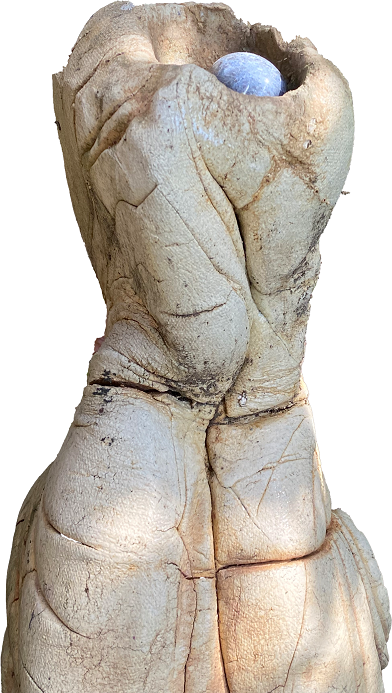
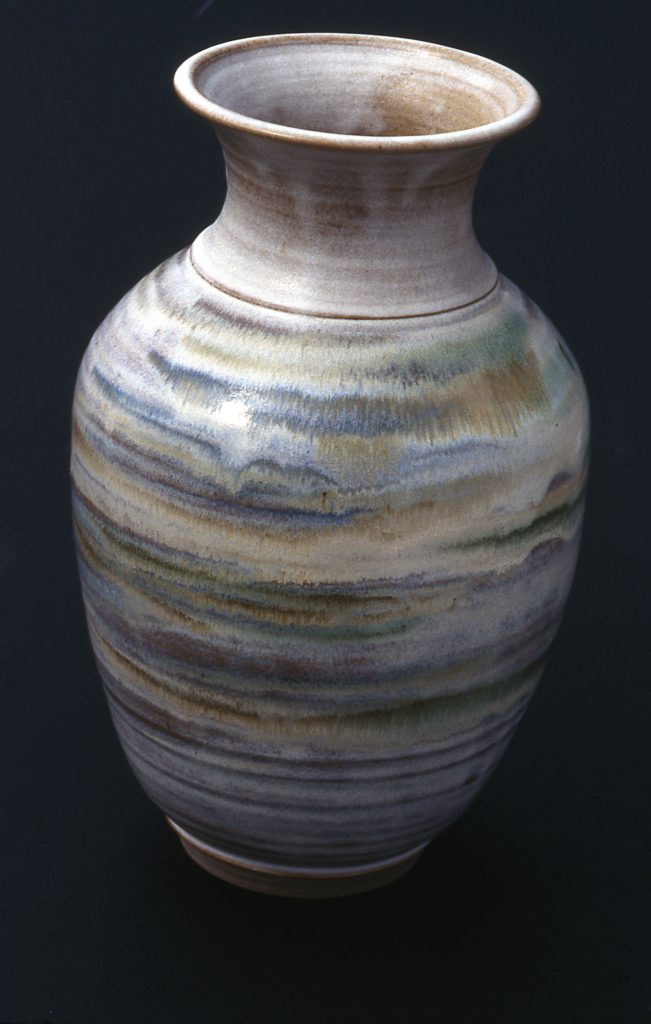
PS. Conversation a little while later, same day in the same room: I just say, “ you know that mountains are really moving all of the time, they are floating on beds of soft semi-liquid magma, just below the level of what we normally take to be a stable continent — a feature of the earth’s crust.
Or, if I were to say to you, you know that the tectonic plates which constitute the material grounding of all of the geography — the land geography of the earth — are always moving, you would not for an instant, a nanosecond, think that I was using the word ‘move’ with respect to tectonic plates or mountains, in any way, sense, manner of speaking or meaning, in the same way that I talked about when I said, ‘I move the chair’ — or that the Higgs boson dynamically gives mass to fundamental particles, absolutely everywhere, all the time.
Glass darkly/Face à face?
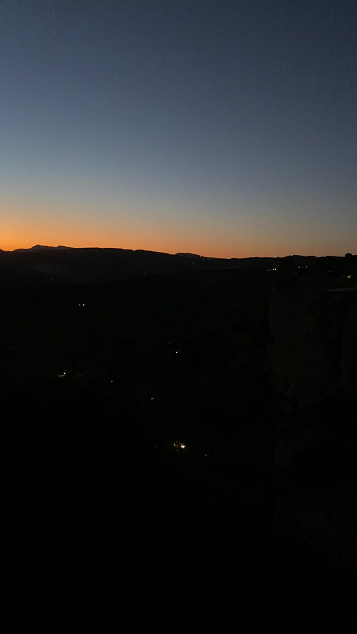

When I was very, very, young, well before I knew anything about knowing, I was lost, and I knew it.
Of the 824,618 things which are not clear to our understanding as humans, the sense of being alive is a strikingly clear one.
By not being clear to our understanding, I mean that we seem incapable of giving an enriched rendition of what we are, who we are, how we are, and what these feelings are all about.1 In addition, we seem puzzled by this very simple fact.
What is standing up, kneeling down, raising our left arm, sitting, and having a good coffee, getting a heartfelt hug? Kindness and gratitude? They are just what they are. Not something else.
Well, yeah, but…
1 Through a Glass Darkly. film, Ingmar Bergman, 1961
I, You, They, We
I will try to say this in my simplest form.
In certain realms of science, and not infrequently, in the realm of some religions, or even occasionally in philosophy, humans have come to the idea that there is no actual self.
I, my self, is the very essence of transience, an ephemeral sense/memory with no permanence and actual existence. The existence of any human, you, and me, and additionally, actually of any particular thing , a cup of espresso, coffee, for example, or a gigantic star for example, is/are only a collection of instances and forces held together by our thinking about it.
Once one begins to look at the world through the box-like format of the standard model of particle physics, a plethora of plethoras begins to entangle the mind. The main reason for that is that the particles that make up the categories of the standard model are not in any way, shape, or form actually particles. They are energy fields, forces, energy, movements, influencers, transformational capacities, and other non-specific, but completely universal forms of existence which are in no way, shape, or form, (forgive me) actual things.
They are forms of energy, or as we would say in science fiction movies, they are force fields.
What this brings to mind of course is that I, the espresso, and the sun, are not fundamentally as we appear, but we are fundamentally not any thing in particular. These references simultaneously intimate that we are (like) the ground of all existence: agitation, only energy dynamics.
When the very grounds of absolutely everything appears not to have any form, it certainly does begin to feel as if it is nothing, what many in certain ancient forms of thought used to call the void.
You will forgive me my confusion. (I think I do actually understand what is being said). it’s just that it’s so peculiar that I have to put it in this form so that it becomes clear to my cousin Bill and my dear friend Diane.
They have no self either, so it is odd.
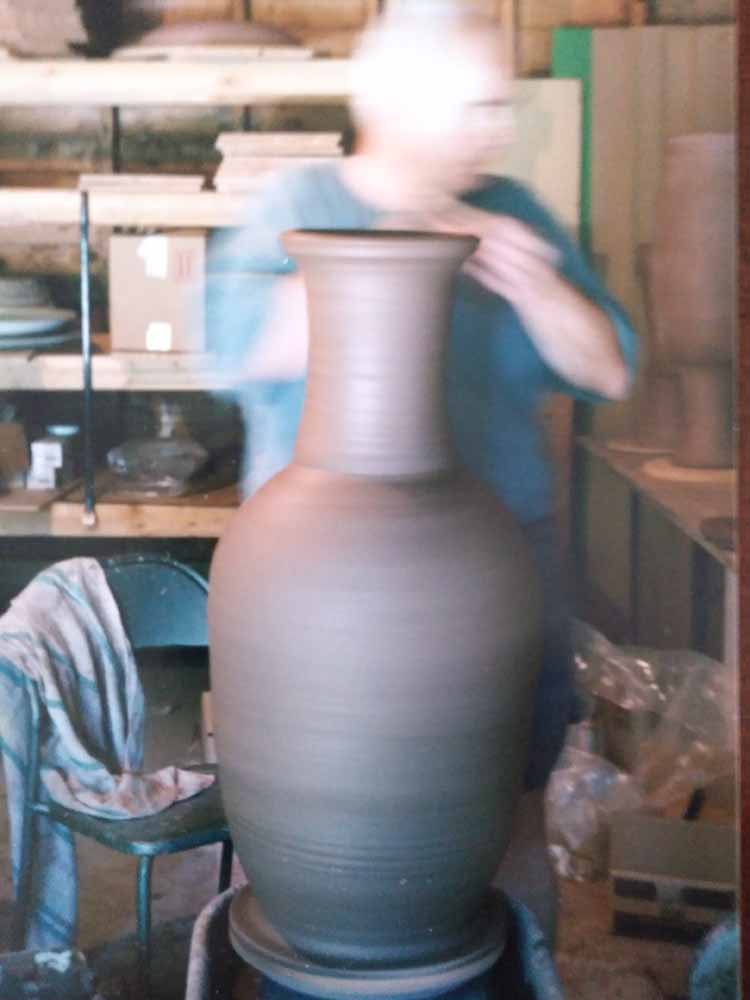
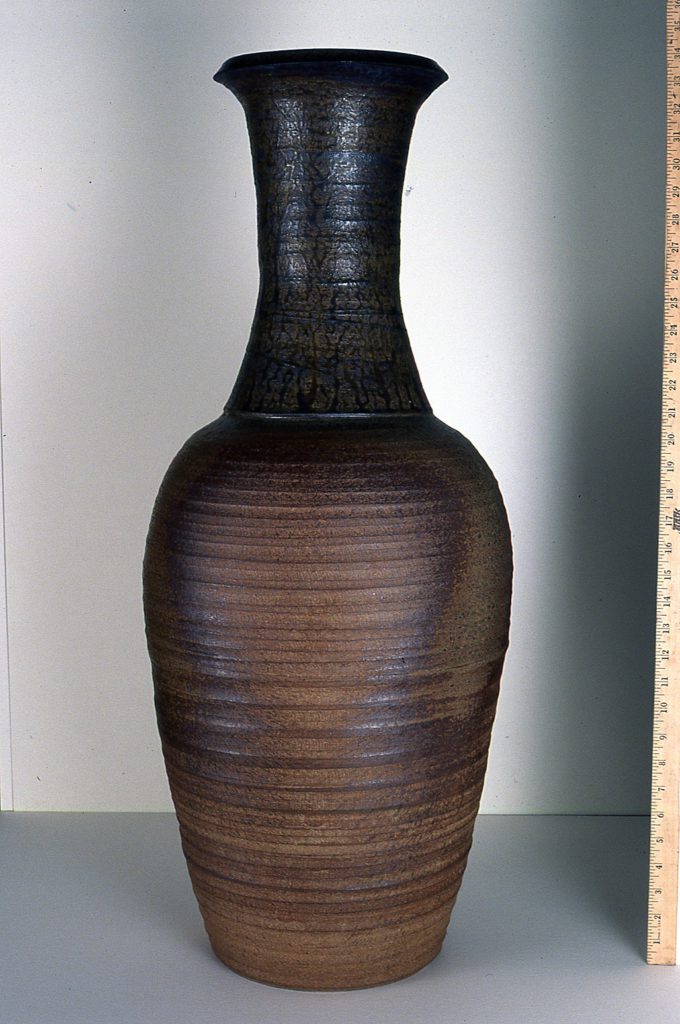
And they are alive
In the beginning, living things are only a most minor, clumsily elegant deviation from the fact of existing things. They continue as intimate members included in the group of existing things, yet they show a capacity, a tendency, an ability to maintain themselves and to continue their form of existence. This is amazing — a source of wonder. Now, but not then.
I think any existing thing tends to cohere in and of itself. It is so, always of course in a context bigger than itself — but from its own energy and power, it coheres.
Living things, enhance this coalescence tendency by maintaining their lives from their own actions within their context, and the continuance of life of their being through procreation, actions from within themselves within their context, which perpetuate their type and not only the individual.
This is the remarkable moment of life. Remarkable because it is a form of self-management. Existence itself, of anything, is of course, the first remarkable thing. Things cohere, from themselves within the context within which they exist, and living things tend to self-perpetuate and individually survive.
Bouche bée !
This self which is not
It is not a good idea to fall down, you could hurt yourself.
When you do fall down, it is a good idea to get up. You do not get up so that you can fall down again, you get up so that you can keep going.
Keeping going is really the key, falling down is incidental. I should add that falling down is most assuredly an impending event.
Getting up is willful determination.
Of course there is a self.
The Middle Kingdom
At some fairly simple level, emotions are only our bodies being affected. We humans tend to think that emotions are the awareness we have of, and the conscious reactions to, various affectations of our being. This is the human state of feeling.[i]
For many of us, a great deal of our feeling time is lived in congested consciousness. Many realms of our feeling time are also lived in simple clarity. The former may be illustrated by the lostness of our souls and the latter by the plain feeling of the chair beneath our bum as we sit down.
Yea, but the one is obviously deep emotion and the other simply physical. This not false, but we bifurcate at our peril.
Enter the analytical mind, stage left, complemented by salvation through order, stage right. And here I am, stuck in the middle with you. I and You — not quite a quandary and not quite clarity.[ii]
[i] Being, hmmm? Body? Mind? Person? Social construct? Gimme a break here. Already mired and no step yet taken.
[ii] What is this either-or junk? Is disambiguation an undeclared ruler (despot)?
iff (if and only if)
It is not reasonable to assume that humans will not be not-reasonable, that they will be unreasonable. We somehow know this even as we strive to avoid it.
It is unreasonable to think that human beings will be reasonable.
It is not a reasonable way to live, assuming that human beings will not be unreasonable.
It is an unreasonable way to live, assuming that human beings will be reasonable.
Reason is unreasonable: it is a crock.
One form of Finitude
I have yet to meet a person in the course of anything more than a brief and passing conversation with them, who has never made a mistake or error, or never was deceived, or never was what we call wrong — some, even foolish.
Because making mistakes, doing foolish things, and being deceived are not really often subjects of prolonged and in-depth discussions between people, I’ve come to feel that philosophers, some thinkers in the sciences, many claimers to truth, and other people who have affirmative and declarative predilections, are very often mistaken when they indicate that people and their senses are inherently deceived, i.e., deceivable, and therefore, (could and do) make mistakes all the time. Under this umbrella of thoughts, lies the idea that our senses deceive us, that common sense is almost inherently in error. Living seems to be an errant form of existence.
Because I/we have been mistaken at least once, that does not call knowing, thinking and perceiving into question.
Do not be silly: you got up this morning!
Maybe, hmmm? :: Maybe not.
In the state of actual existence, we humans not infrequently think you, or me, or anyone, could have been (or be) different than what/who you or I are/am.
One of our undercurrent notions is that ‘things could have been different’ than what they actually are.
In our deeper thinking about the totality of existence (dare I say ‘infinite existence’) in which we accept that absolutely anything would be/could be/were possible, absolutely any combination of things could have been, or could be, and that the state of affairs which actually is, is only one of the infinite possibilities.
Wowsie!. That’s a very wild affirmation to hold in mind. About actual existence — not just pretend imagination.
This is only to say that the totality of your present existence, could have been different than what it actually is: that it is possible that what is, could not be, and that you could not be.. And some other state of affairs could be or have been.
This is most mystical, wishful and peculiar.
What could the word ‘possible’ possibly mean in the real world?
(Tomorrow morning at breakfast?)
Language traps ensnare the mind and often its world view. Who is where, when, pray tell?
As One?
When we accept that ‘experience’ is the firmament of knowing, we certainly appear to be on solid ground. It would be difficult to imagine otherwise in the 20th and 21st centuries.
Even so, the distance from sensation, sense impressions, feeling the ‘other’, the ‘world’, to many of our complex and enlightening abstract ideas, is as close to immeasurable as one could imagine.
Actually, even the revered David’s notion of ‘relations of ideas’ is hidden just beyond the body’s ken.
While settling on the idea that all knowledge is interwoven with empirical awareness, we recognize that our thinking and knowing are based most deeply in the human body, the physical self of the human being. This optic has become increasingly engaged in our approaches to learning, advancing knowledge, analyses of the world, medicine, the sciences, technology, engineering. The sciences. This requires us to have a full grasp and understanding of what the human body is and how its constitution might be integrated in the world.
Never forget, a body is a body. Common life is the best reminder, even though, somehow we often forget.
Of course, I find imagining the human body as an entity in the world, as a cousin to a granite boulder, an amoeba, and the great galaxies, to be a marvel on the one hand and a source of much confusion within the soul, me myself on the other. I spew this confusion into these little writings.
If language about these ‘things’ of the world and the universe, et al, engages body-based images, this language then will express only metaphorical or symbolic meaning. Its truth value is therewith dramatically constrained, stretched and contorted. It requires a story of its own if we are to garner ‘meaning’ from it.
Each time we discuss something non-physical/non-spatial which engages the notion of ‘body’ as a physical entity in the dialogue, we have a good reason to doubt that we have an adequate grasp of our subject. Just because we function very well does not guarantee knowing the ground on which we stand.
Our thousands of generations of ancestors are a terrific example of that. Here we are, because of them.
We should feel entirely obliged to provide a complete, accurate, intelligible portrayal and dialogue account of exactly what a ‘body’ is in its entirety — preferably a human body.Thank you.
Debris, Order
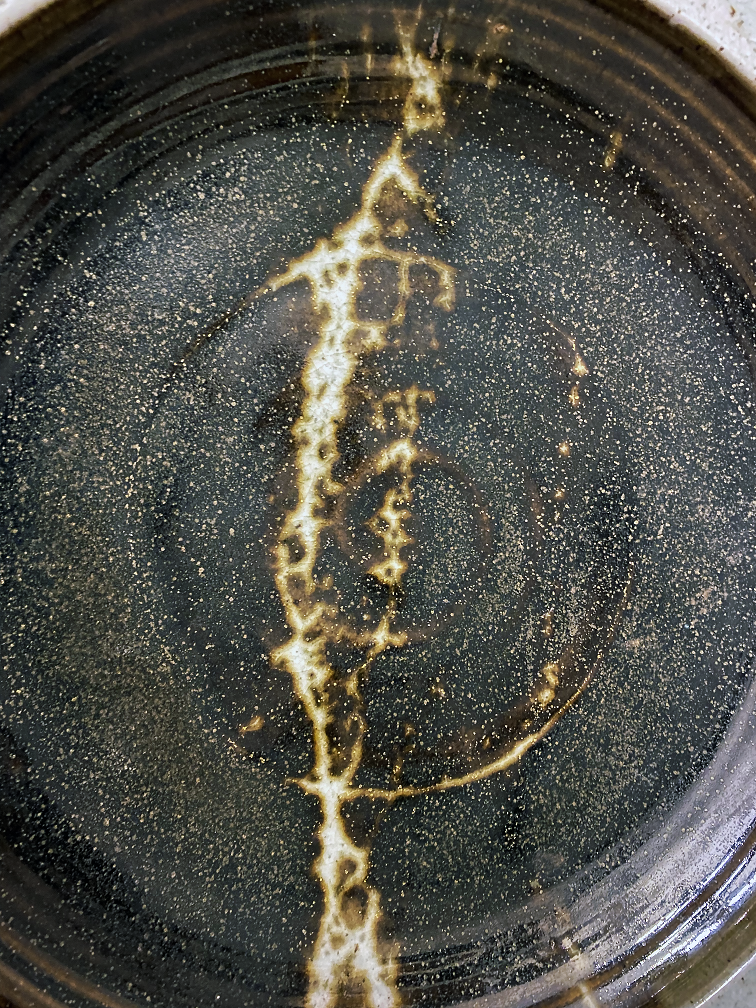
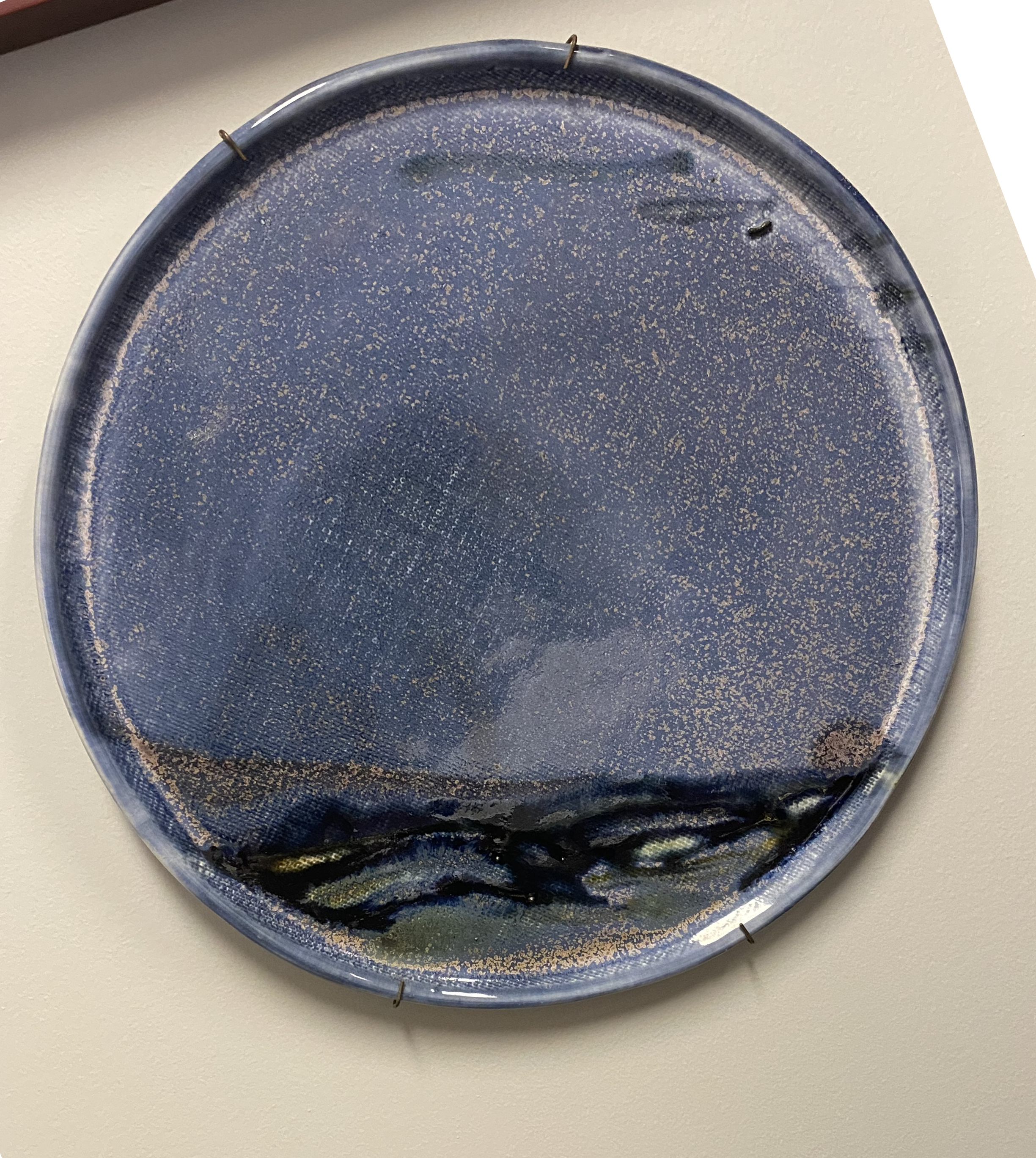
Before before, Below below: yet, here am I
Time is movement. The experience of movement is duration, and the measurement of movement is thought time. Measured movement, which is always relative to the movement of another, is objective time.
No memory, no time.
Space is occupancy. Occupancy as experienced is location. Location, as thought, is measurement relative to another (also moving, sigh!). They, of course, are frozen and therewith, a determinate location — this means of course, no ‘real’ location.
No I; no it.
Of course, spacetime is relative.
Deep down, we do not really know why it is that everything is always in motion, whether it be the largest galaxy cluster, or the smallest units talked about in the standard model, or for their cousin, the neutrino.
I don’t know where anything is by itself. (In this respect I am not alone.
Human beings tend to be obsessive about many, many, things, not least of which is the nature of baseline reality for all things, or existence itself. This is painfully and obviously true in physics for example, or in sorcery for example, and actually, for anyone who sits out on a dark summer night and looks at the stars or wonders, “what’s up, doc?”
I figure the baseline existence of everything has no defined form, while being itself dynamic/creative. This is very odd thing to say. This is the sort of thing that you can not prove. We do keep probing of course. Why wouldn’t we?
Actually, it’s really interesting as a koan for reflection if something like that were true: no defined form, hmmm.
How can you ever actually sit in a chair, have a thought, grow from a zygote into an adult human, come to know some of this —THEN, not be at all? What could a ‘no-defined-form’ be?
Conscious Neurons
Just so you are aware, I don’t mind your thinking that an integral part of any thinking is actually what we commonly call ‘brain activity’. If we were without our body, there would be no ‘we’. We do not understand the relationships between the brain (part of our body) and our thinking. Even more obscurely couched is our awareness of our own thinking, and our conscious thinking about our body and its entanglement with our thinking about our thinking, and about our thinking’s use of the brain — if you follow my drift. Drift happens.
Of course, as we think about neurons, it’s easy to forget that they too, are natural phenomena, what we designate as physical things, material things, items which are thought to be fully constituted by some matter/mass. They are our own cellular structure and therewith, part of our body, our physicality, our materiality, our human mass as a phenomenon which can be studied.
Oooops, slipped into modal orientation. New take…
So, nowadays, when humans look at mass deep down, we acknowledge that mass is prototypically a form of energy not moving at the speed of light. As far as we can tell, the forces, fields, particles, and compositional units of this mass/energy are most clearly expressed as what is commonly called the ‘standard model’ of particle physics and the related mathematical/theoretical jargon which is elusively beyond most regular people.
Hmmm, has the thinking that we were just talking about and its life as brain activity, become more inadequately comprehended, or, more transparent as a concept, when we try to ground its constitution in the standard model?
Not more transparent to me, I will say. Mind you, I think the standard model is not helpful in grasping how we sense/perceive the chair — on which I am sitting with my delectable latté — as a chair.
Surely our thoughts are not just energy. Surely, our awareness of them is not just energy. If it is ‘just’ energy, what are you and I talking about and how are we talking to one another while using language, phraseology, the human organism and other physical means and devices of communication?
Spoiler alert! Is it beyond my control?
I am lost; not aggressive — that might change if pushed.
Yea, but what if…
Just because I insist that I may not always be consistent, you may not infer from that, that I intend to be inconsistent, or that I will, in fact, be inconsistent at any particular moment. And being inconsistent does not demonstrate being incorrect, untruthful, non-insightful, inauthentic, and the like. What is logos anyway? A construct too rigid for creative drift? A by-product of digestion? (Both mental and intestinal)? An evolutionary tick?
The limit to the use of the imagination as an explanatory device, is what we actually know of the circumstances encompassing the situation under our view.
As we imagine and construct new perspectives/worldviews/takes on things, we cannot offer as an authentic explanation, an account using these imaginary devices if we know actually what is going on: that is to say, if our grasp of the world and the plethora of events in it, is generally understood. That is, what it is that has brought this something to be in its currently perceived form, is known.
Knowing is a limit to authentic explanations while being simultaneously, the rich substance of the account. All this is to say that our imagination’s sphere of explanatory power is inhibited in its freedom by our current knowledge of the situation.
This simple fact can be extremely frustrating! (Laplace’s demon, the christian infinite god, the Deus deceptor are simply pretend fictions which many thinkers use to sow doubt, obfuscate and derail straightforward accounts.
They, too, are nonsense myths.
Do not get sidetracked.
It is a carnival ploy.)
Of course, we can use imaginary devices as a way to tell a tale, to construct a scenario, to offer a view on things, but not with a view to actually explaining how they are in fact. That specific take on things is confined to the general world which we take to be the one we know, and not only the one we might imagine.
P.S. My senses never deceive me, which is not to say that I am never mistaken. When we think that every thing which exists affects every other thing which exists, we often forget (at least) one part of that overall configuration. We, too, are things: we are some of those things that affect things, and are, in ourselves affected by those things. It is neither all inner nor all outer — nothing dynamic ever is.
Surfaces touching
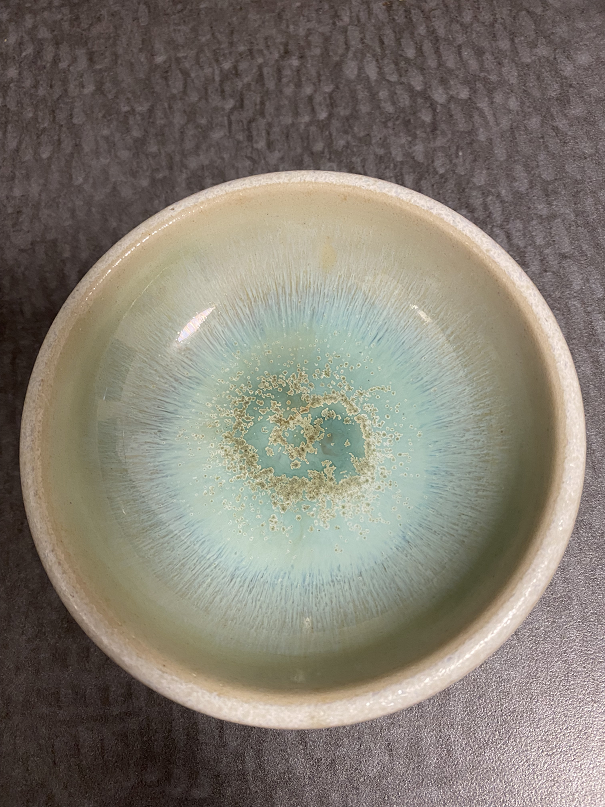
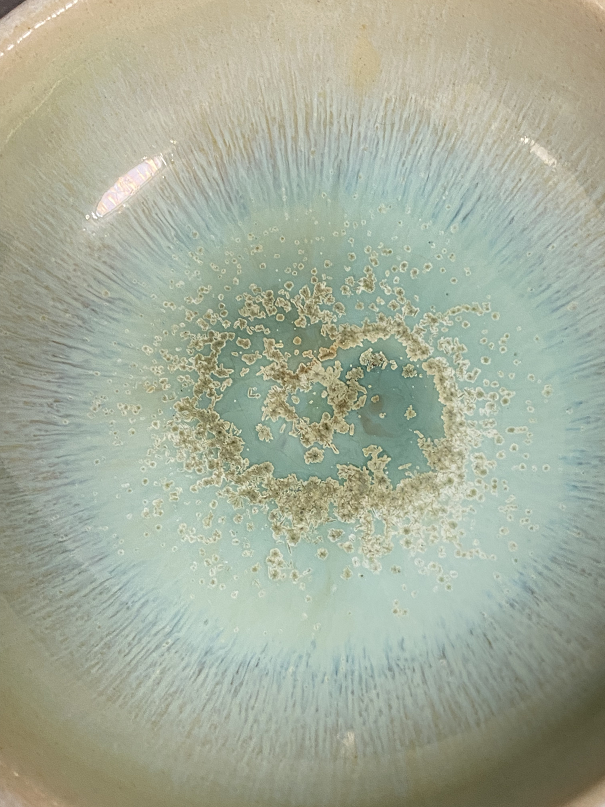
The lived life of an individual is uniquely its entirety.
No individual exists only as an individual, yet it is such.
Living individuals are interwoven, not only in their physicality, but in their very bios, the living fibre of their soul and its shadow in life on earth. Their soul is interwoven with the entirety of its realm, albeit, that it is actually only that individual. Seem contradictory? So? Entanglement isn’t?
Explanations are fantastic. They become slippery, loose, less integrated, and more obscure as they approximate the realm of a living individual. Approximating the surface of the world deeply entails extreme particularity and its idiosyncratic singularity. (Not only black holes are singularities.)
To touch the earth, to touch the ground, touch, escapes from the entrapment of an explanation. To explicate is to hover over the life-form of sensibility and individuation, and cannot quite touch it. Yet the individual touches and is touched.
What is, or seems to you to be, an existential contradiction?
Not only the living, but every actual thing there is, is elusively at the edge of our explanations, our touch!
As the James T Webb telescope expands our awareness of the endless galaxies, mega galaxies, mega galaxies of mega galaxies, and all the other stuff, it is increasingly apparent that earth is so close to a nothing that it almost does not exist.
Ooops! Actually, it does exist in spite of the bizarrely immense, context comparisons.
This, of course, makes me think of the teensy-weensy particles, waves, fields, energy units, and/or force carriers, which we find as we understand more and more what it is, that CERN is discovering. Which are? What, pray tell. As if praying clarifies.
Wowsie, do they exist — the way the earth exists? Something does certainly exist, I’d be bound to say.
None of our discoveries — whether they be in the apparent infinity and order of astronomical space, or the apparent infinity of our analysis of mass and matter — make our world any smaller, or any bigger. It is what it is, has been, and likely it will be — until it, like so many others before and to follow, were and will be. And will pass. Which includes us.
How we take these things, however, has so radically changed that we think existence itself has changed.
I think the jury is out on that one.
Now, then, the other then, when?
Is this now, now, or then? Which then, the other now, which was a ‘now’. then?
Thought cast onto the world

On being adrift
I am looking for a flow of concepts which can enter my edgy, inner domains and help settle the deep, and unnerving unease that I too often experience just by being alive and aware of that very, discombobulating reality.
As far as I can tell, there is no known way to achieve this sense and this flow: having the insight, feeling the togetherness, and generating enriched and authentic thinking. In part, this is what people mean when they say that there is no path in life which brings us to be at peace with what is often a disorienting and shrouded deep down.
No path to open the way to render our soul tranquil.
Some people would say peace, some people would say love, some people would say seeing the light, some people would say harmony, some people would say happiness, or, of course, all of the above. And not everything settles.
There are many practical examples of this sense of edginess and misty lostness, and they have become dramatically clearer in the last 150 years in the realm of what we call natural science. By this I mean something very simple. In earlier times, when people thought about things, reflected on things, and looked into things, they were often looking for what we would normally call knowledge or the truth of things. In some earlier times and world views, lay an underlying conviction that knowledge, truth and beauty were actually at play in the natural world, and they seemed somehow realizable in conventional, albeit focused, human life.
In the present age, our most sophisticated forms of knowing in a deep and interconnected way, are paradigmatically expressed in what we think of as science and the scientific method. One of the implicit notions that has become very clear in the last century and a half is that knowledge as it was understood in earlier times, namely, the truth of affairs as the state of the world, is no longer considered to be a real option.
That is to say, now, we do not know things. We frequently gain an increasing sense of the probability of things, the likelihood of things, and the repeatability of things, our ability and skills at managing and manipulating things, but nothing more. Knowledge and truth have slipped into becoming mythic basics: thought about, talked about, but no longer deeply truth-functional notions. That is okay for some purposes, but in any important way, not for the meaning of life, the existential befuddlement of being aware of our life and our thinking about this very simple fact.
Humans look beyond what they seem to know, and pose other more compelling concept visions: what are we? why are we? how can we be what we are? These elemental uncertainties are quietly alive in the world of rigorous scientists as well — they, also, are human.
Are we adrift?
On Mooring
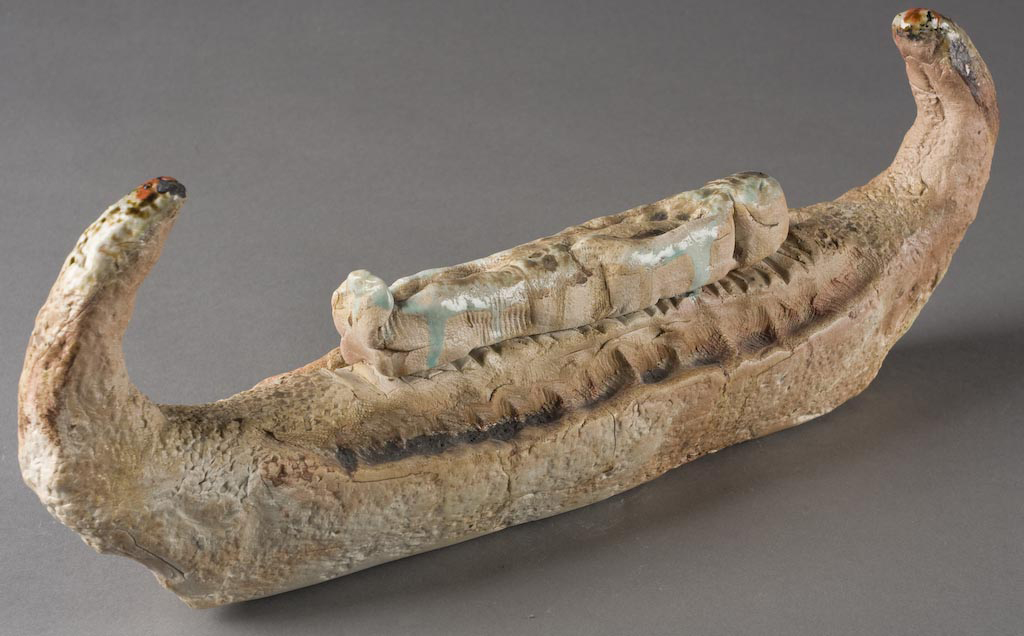
Love conquers all is a crock. There is no lasting love is a crock. Determinism is a crock. Universal uncertainty is a crock. We can know things is a crock. We can only approximate is a crock. We cannot know anything is a crock. Complete freedom is a crock. Determinism is a crock. There is a god which rules supreme is a crock. Life has no meaning is a crock. Hope is a crock. Life has purpose is a crock. Everything is orderly is a crock. The entire totality of all existence is only material stuff, is a crock. Despair is a crock. There is no nothing is a crock. There is happiness is a crock. There is only chaos is a crock. Humans cannot find true happiness is a crock.
Whew! I need a coffee!
Quay
Normally, when we say of something that it is true, we mean something like, there’s a situation of some sort or another in the world, which, what we are saying somehow describes or states clearly enough for people to understand, that that situation actually exists. As you might imagine in the breadth of actual lived human life, there is an astonishing number of variations on this notion.
The simplest form of declarative truth is that what we say or write, exists somewhere in the world in the manner in which we say it. Saying might mean writing, might mean poetry, might mean art, might mean, drawing might be in creating a theater, theatrical event, etc. But it is there.
We will be told that this is the old-fashioned form of truth as correspondence: what we say in the statement is in the world. The statement corresponds to the state it is describing in the world.
Of course, there have been people who have doubted whether we humans can really get a grasp on what it is for a statement to be true. Usually this is grounded in the correct assumption and experience that there are so many points of view on any given event, undertaking, action, situation, or state of affairs, and they do not agree with one another in their entirety, so how could it possibly be that any one of them is true (if that implies that all the others are false). There are, of course, people who say they are all true. That means that each one of them is actually saying something truthful about the world, which is to say that what they say, exists in the world as they said. This seems to suggest that any given world, this world, that world, another world, is actually a multiple of worlds, all of which are different points of view on one thing. That thing is called the thing-in-itself.
As these ideas have bounced back-and-forth among sticklers, societies, contenders, and the like over many hundreds of years, people have come up with new ways of trying to understand what it means to say that a given statement is true. Usually this means it is not as simple as if I say ‘a’ is in the world, that ‘a’ is in the world the way I say it.
The endgame of all of this appears to be that there is a framework, an overview structural sense of things, a big picture, a mythic structure, and other similar high order, general feelings, senses, and visions of stuff that if they are actually integrated in and of themselves. Somehow, then what we say about the world is deemed to be true, because we have a big picture point of view, which helps us place a little picture into a framework in some sort of a coherent, integrated, and assimilated way.
None of this is false. It is, however, really, painfully inadequate.
That is true.
thank god for David Hume!
As we say in the empirical approach to knowledge, handily called empiricism, we only learn and come to know the world and things in it from, or through, our experience.
This is not as holy as it appears.
Most of us think that we know what it means to learn from and through experience, and when we strongly affirm that all knowledge is based in and must come from experience, we have no difficulty accepting that.
The really big deal is, however, in the unstated but very prominent bundle of assumptions hidden in the words ‘from and ‘through’’, and not, as we might commonly expect in the word ‘experience’, ‘world’, ‘learn’ or ‘come to know’.
The words ‘from’ and ‘through’ intimate that we the humans who are about to learn or know are ‘here’ and the world and things are ‘there’. We are different from and independent of that world from which we learn through experience.
We are not independent, or to one side of the world. Our testing does not take place ‘out there’ and our experience ‘in here. We are in fact in it: we are a mode of the world just as all the things themselves are modes of the world.
(Our notion of actual knowledge has transitioned to forms of measurement comparing modes of the world with other modes of the world and pretending that we are not involved.)
We…We…
We experience.
Who/what is this we?
Ethereal Granite and Affirmative Doubt
It cannot be that everything is changing all of the time, and that we can know something. Knowing requires immediacy and continuity.
To understand/comprehend is to envelop what is taken as a diversity into one complex (a thought/concept) — a diversity of interests, contexts, individuation, and profusion, as if they were one family.
To be alike is minimally to be different.
If every point is actually a point of view: there is only a dream which holds things together as if they were one. (This not only does not mean it is not one, only that our taking it that way is our limit, not its).
The immense richness of language is naught, but not a fault of language or its humanity.
There is no fault.
Inertia is not just staying still when nothing intervenes, or moving continuously when nothing intervenes. It is most deeply a coherence of things in themselves in their current aggregate state.
A current state is not a constant (everything is changing all the time). How can an entity be constantly changing and maintain integrity? I don’t know, but everything does, until its integrity is undone by the intimate power of the other. Being ‘undone’ is a form of what humans call death.
The difference between everything and nothing is everything. The difference between life and death is life.
There is no state called death. There are only words like ‘death’ applied to something which was once living but is no longer living. The life which was and now is not, is not a state. Only its detritus is just a state.
Being in, of, and distinct : Yes/No
When we say we know some thing, if by that, we are trying to say that there is a state in the world, independent of us, which is there, and we know it, then we will never be able to establish through discourse, explanation, or processes of experiential thought, that the thing, state, occurrence, etc. is actually there — independently of us. Knowing is a human state, dynamically interactive often with a non-human state. This interaction is trans-human reality: I do not know fully what this means.
The idea that there is a thing in itself is one of the long-held undercurrent beliefs, certainly of most western thought. What I mean by that is simple, namely, that apart from human beings, there is the world, nature, the other, as real. That is to say, the world exists independently of whether I exist or not. The chair stays in the room when I leave the room — talking and thinking otherwise is already to have fallen off the chair.[1]
When we say we know something, the simplest meaning is that what we claim to know is true, namely, that there is a state in the world independently of our knowledge. It is real and is as we think it is.
Its companion idea is that we humans are actually part of nature, the world, and the like. It becomes less clear when we think that we humans are apart from and not in in the world as a living mode of nature. This creates the gap of exclusion and pretend independence. In this gestalt we can only know what we can measure as if we were not a living mode of nature.[2], and an observer, or experiencing experience, or of the other of nature of the world, but that we are not in it and thereby, it.
Knowing, and/or consciousness, does not constitute creating an object. The object exists, we note, grasp it, understand it, know it, in keeping with what it is, and equally with what we are.
The body and the mind are in tangled. Thoughts and the thing thought, are entangled. Go figure.
[1] This is a metaphor, sigh! [2] While pretending we are. Sigh
Feeling, Knowing, Thinking, Saying: Knitting

It becomes dramatic and complex, because our search for knowledge and truth rests firmly on a deep, hidden conviction the world exists in some form entirely independently of us: and is knowable by us.
I do not doubt this independence in the least. Everything exists independently from us. Individual things might depend or partially on us, just as we might depend and partially on them, but it is importantly undeniable that existence in itself does not depend on us. This is not a reciprocal relationship.
When we talk about things, it is as close to inevitable as you can get that, that they must be as ‘we’ present them to be. Otherwise, what are we doing but babbling. Is “please get me that chair?” babbling? Not really.
Nor is it pretend.
We may wish to talk about things independently of how we think about them and talk about them, but when we talk about them, we talk about them in the way we talk about them. because we are the talkers, and they are the things.
But real the question is how close to the real thing is our language at describing it, not just as we see it, but as it is independently of our existence, but not independent of our knowing. Our words are not our knowing. Of course, as we use and nuance them, in return they tilt and shade our grasp of the thing: our knowing. ‘Close’?
Language is not knowing. These takes on ‘things’ often intermingle. There is no dividing line between them which is simply amenable to our use of words and the supreme delicacy of the myriad distinctions, affirmations, and openings which come to us with language and simultaneously by our non-linguistic sense of the world in our experience of it. There are thousands of lines between them, and more lines than we can count in which they are the same and separate.
Knit sweaters unravel if you pull continuously on the open strand. An unravelled sweater is not a sweater.1 The wool can, however, constitute the fabric of another. (Do the atoms, quanta, and Higgs feel the same?)
1 And it will never again be ‘that’ sweater. I’d take bets on that, so watch your step — there is no future and it is/will never be the same as this present!
Becoming, passing away
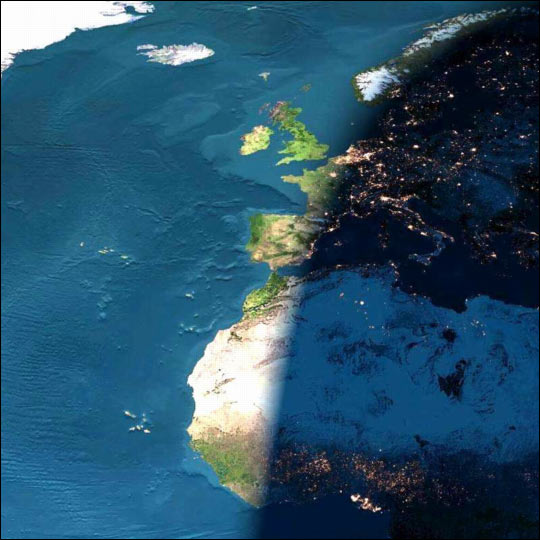
Passage into being and passage out of the being are not passages, they are the smallest whispers in an infinity of silence.
We can feel the silence, almost hear the silence, and certainly do live the silence. Yet, we do so in the cacophony of our thoughts, feelings, hopes, and words.
I am not ready not to be alive. This is not at all the same as being afraid to die.
It is not fear; it is the deepest unease, not quite an uncertainty, not quite an anxiety, almost like the edginess of deeply missing something which has never happened.
How can it be that that which has not been, not been seen, not felt, or not been known in any way, shape or form, could give rise to a trembling of the soul?
Betimes, I see clearly, and still, I know not what I see directly before mine eyes.
Standing on one foot

I think that whenever we humans open our mouths to talk, or we think about talking, or pick up a pen or pencil to write, or approach a keyboard ready to type anything at all, we are getting ready to express ourselves, to communicate with others, to present thoughts, images, ideas, feelings and perceptions, and similar phenomena in social or interactive dynamics.
It appears reasonable to say that everything that we do and are, and have done and will do, rests on several fairly important premises.
For myself, I think the most fundamental of these is that we humans are individually and collectively (so far) continuous, ongoing, and passably coherent, within ourselves and the world over a period of time, no matter how short or how long. Without that premise’s being operational for humans, there is naught. I agree, of course, that many of these words are vague, whimsical, and obviously equivocal (coherent, really? continuous, surely not, and what could time be, pray, tell?). So, what!
What isn’t?
Every thing or utterance loses its dynamic center under a bifurcating and trenchantly probing gaze; disambiguation becomes elusive — but, I was here yesterday, am today and will be tomorrow. I’d bet a nickel on that, sans hésitation!
Open your mouth, you/we are already on a path!
Cogito, Ergo
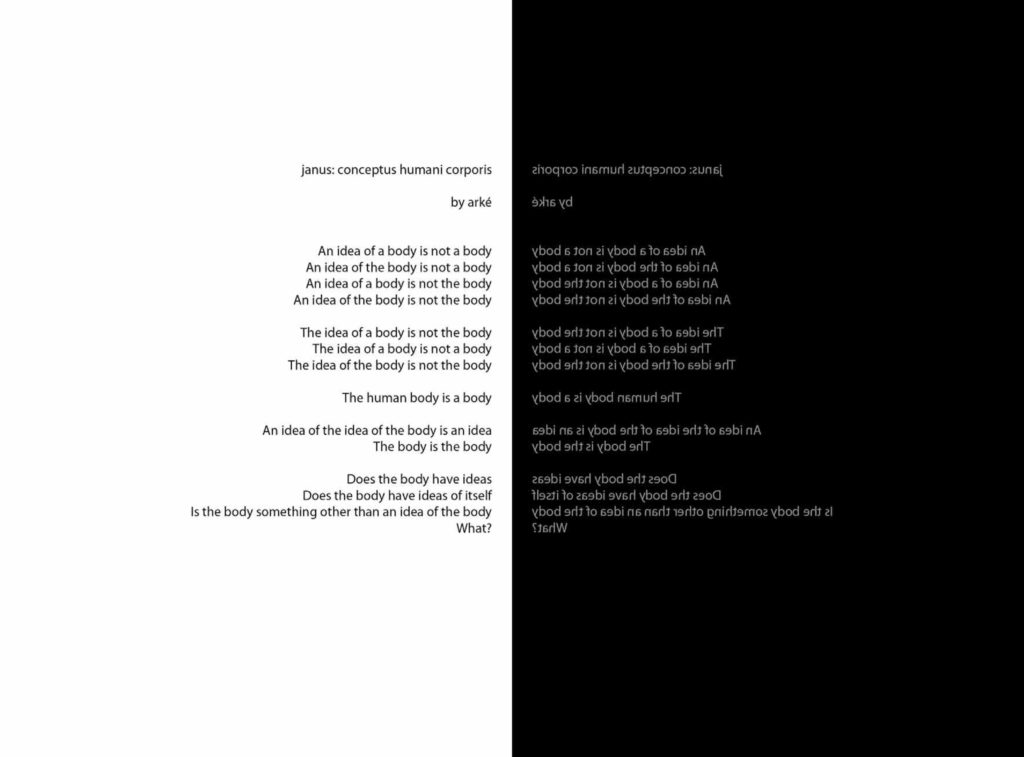
The divide which I’m going to talk about has happened many times.
Not only philosophy, religion, social structures, and politics, general popular thinking and common discussions, media reporting, movies, documentaries, but also in cultural and ethnic ways of looking at human existence: what is a human, what is a self, what is a person, what are the mind and the body, how does the soul inhabit the body, how can the spirit guide the body in human life? Is there choice? Am I responsible, etc.?
I personally like to start with the simpler reflections with René Descartes’ declarations.[i] I do that because in western philosophy he is now epitomized as the thinker who divided the human entity into a thinking self and an extended self. That is to say, a mind and a body.
For me, he crystallized a thought and living notion which had been in at least western thought for many, many centuries.
Of course, he did not do this all by himself. He fits into a long, respected, and honoured tradition of seeing the mind, spirit, or soul of a human being as engaged in, hidden in, or even being trapped in the body, although distinct and separate from it. There are many people today who still accept this way of thinking, namely, that human beings are at least a mind and a body (or a soul and a body) and that they are together but separate. In Descartes’ language, that would mean they are distinct.
To keep this line of thought straightforward, the body (matter, extended in space) and the mind (a thinking self) were each considered to be substances, independent of one another with no causal link between them, and they each operated from within the rules of their natures.
Bodies followed the rules and patterns of material objects and things moving in what we call space. Minds operate within the rules of thinking like the logic of ideas, thoughts, images, etc.
Because Descartes was an intelligent man, he realized that these notions, while clearly true, left him and others with the common human problem of how to account for the ability of humans to think and plan and therewith initiate action within the body on the one hand, and to explain how images of extended objects (candles, tables, chairs) could appear in the mind.
More or less, this is what is called, the mind-body problem.
While many will say contemporary thinking has indifferently bypassed this conundrum, it still drives many people to distraction.[ii]
[i] René Descartes, Meditations on first Philosophy.[ii] Anil Seth, Is Reality a Controlled Hallucination? YouTube, The Royal Institution, 2.12.2021; M.R. Bennett and P.M.S. Hacker, Philosophical Foundations of Neuroscience, 2nd ed., Wiley-Blackwell, 2022
oops!
Rounding a corner and entering a room, when we inadvertently bump into a chair or a wall. We feel it, it hurts, and it stops us. We take note and, if we are still so inclined, we carry on. We can move the chair, trip over it, walk beside or around the wall, etc. We are not confused: the atoms and molecules of our bodies did not bump into the atoms and molecules of the chair or the wall. The subatomic particles of the wall or the chair were not in the way of the subatomic particles of our body. Our subatomic particles did not bump into their subatomic particles.
I, me, this I, bumped into it, the chair — that one.
Hold onto your hat! It is beyond windy where I want to go.
At this level of thinking imagery, contemporary physicists (quietly but boldly) intimate to us that these (really, really small) particles (of particle physics) are not actually particles. That is just a simple statement; there’s more to come. The forces, packets/bundles of energy, the force carriers, the units (?) of the standard model, waves and fields, of the chair or wall and my body did not bump into one another (If only CERN were here when you need it most: at the corner where we bumped). We, human scientists, have already noted a significant number(?) of sub-atomic particles (the ones that are no longer particles but certainly registered by the dynamism of CERN’s research and probing analysis). It is dizzying for sure.2
All I want is to grasp why I bumped, who bumped, into what and when. That is surely not too much to ask.
My brain neither sent me a message nor presented me with a representation of the world within which this happened. It did not talk to me about what had happened and tell me how to feel. As a living, clumsy, person, I found out by myself. I bumped into the chair or wall, etc. A body, mine, bumped into a body, the chair/wall. And so on… What is an account of what, after all?
1. I know it is a little passé to talk admiringly about René Descartes’ Meditations. This little gem provided us with a good picture of certain traditional philosophical thinking of the era leading up to him, but really, he dropped the bomb of self-consciousness in our lap at the same time. We dwell on it today in the face of neuroscience and the conceptual game of the objective world, what is often simplistically called ‘nature’. 2, It is amazing and a marvelous reminder to re-watch “Particle Fever”, the 2013 documentary on CERN. Serious business, understanding matter, mass, reality stuff!
PS. If you bump into the goose pictured above, watch out, trouble is imminent! It is the very same goose that will attack you as the one you bumped into. (And the same you — do not get confused). This is not discombobulating yet, although it could tend that way without due diligence on your part. Which self is this? Same? Pray tell.
Immaterial-Matter Matters
In previous discussions, I have asserted what I think is not a commonly accepted fact under the general rubric of physics.
This is to say, that mass, material things, this thing/that thing, is ‘energy’ moving at less than the speed of light. If I talk about my self, my own body, even as one would say in the early 21st century, my mind, it is plain that I am not traveling at the speed of light.
But it seems absurd to suggest that I am actually ‘energy’, and it is just that I am not moving at the speed of light.
What a peculiar way to talk/think!
A bullet traveling at 1000 m a second (1 km/s) is certainly moving at a dynamically accelerated speed. An unbelievable speed to me, it is dramatically less than the speed of light although it is a material object which happens to move very quickly compared to me — the slow one, the tortoise, not the rabbit.
No physical thing, material thing, object, is able to exist all by itself. We can locate it; we can find it; we can see it; we can determine its movements; we follow its materiality with our material devices, which we have created by our material selves in a way to measure what happens to physical things, material things, things with mass — energy that is not moving at the speed of light.
Only ‘things’ with no mass can do that — deep belief number 2,459!
on being fat (wow 60%)
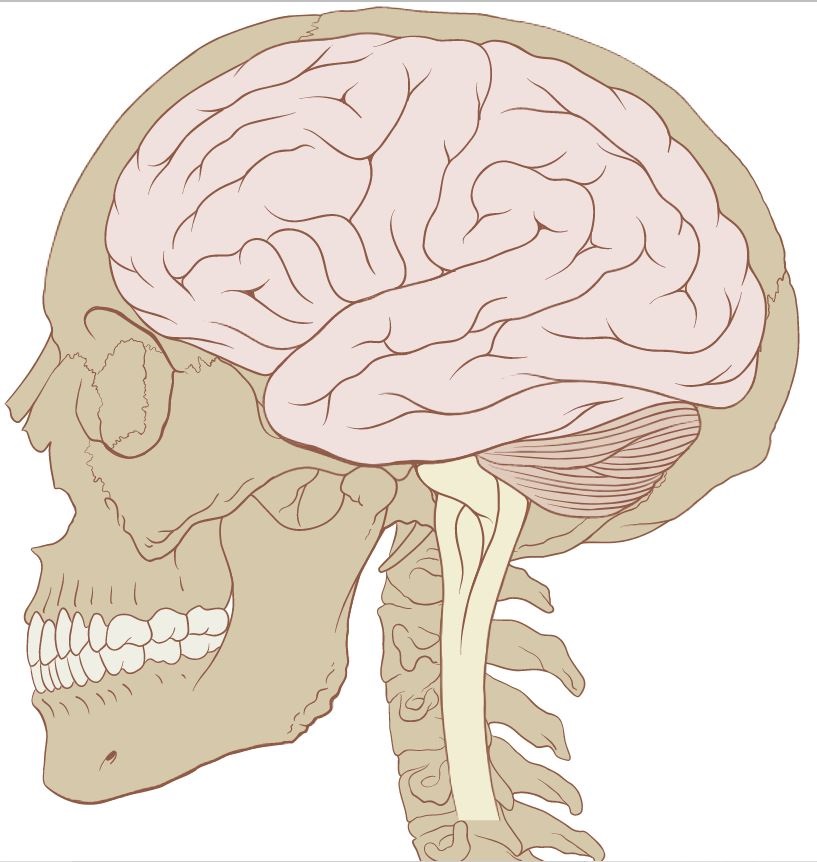
When we are thinking about the brain of any given person, or of all of humanity, we quite reasonably say that humans have brains. I have one, you have one, and so on. Grosso modo, this is a very good and fortunate state of affairs. It is, however, not without its fundamental ambiguities. No surprise there, I guess!1
It is peculiar to think that the brain thinks. It is equally peculiar to think that the brain imagines, plans, schematizes actions, decides what to do on any given day at any given time, about any given course of action, and similar thinking attributes. I know this seems counterintuitive in the 21st century, as neuroscience probes the brain unimaginably further than at any moment in human history. What can I say? This is, in fact, what I think. I do, after all, have a brain. Thinking is a human person’s activity (maybe some of our brighter animal cousins also). Usually (but not always as know from wispy and confused recollections), humans know when they are thinking.
Brains do not.
The reason that it is peculiar to say or think these things, is that brains are not human beings or persons. Persons and human beings do a lot of thinking and imagining, and planning and acting, and picking up of objects and alike, and they certainly would not be able to do it in any significant way, if they did not have a brain. But the brain is not itself doing this kind of stuff, the human being is.
Using a distinction like the mind/body, or the soul/body, or the spirit/body, or etc., as if we are talking about entities that could affect or another, is actually misconstruing what it is that a person or a human being is, and is capable of doing, just because they are a human being. It was wonderful way to try to get around couple of the philosophical problems, and of course, in the 21st-century we’ve come to realize that many neuroscientists and neuro-philosophers make statements which strongly suggest, if not declare, that the brain does all of the things that in fact the human being, or the person, does. People and brains are not the same ‘entity’ — they are not the same, i.e., identical. In English , we say a person or a human being ‘has’ a brain. The word ‘has’ is certainly ambiguous and not fully understood. We do not (yet?) have tools akin to self-consciousness and as we function on the exclusionary premise that only matter matters (at the level of existence called a brain).
So?
1 Philosophical Foundations of Neuroscience : Maxwell Richard Bennett and P.M.S. Hacker, 2003, Wiley and Sons; Neuroscience and Philosophy: Brain, Mind, and Language: by Maxwell Bennett, Daniel Dennett, Peter Hacker, John Searle, 2009, Columbia University Press; Antonio Damasio, Feeling and Knowing, 2021. A good read requiring time.
Looking, Feeling
Once philosophers and other common people had realized that the human grasp of what the world was/is, is inevitably intertwined with this world in such a way, that we do not know things as they exist in of themselves, that is to say, independently of what we take them to be, we all started to feel (occasionally with edgy disquiet) boxed in. It certainly plays an undefined role in profound anxiety — angst.
On top of that, is the growing awareness that god actually is dead, or, heaven forbid, never was. What holds it all together, pray tell, if this recognition were even remotely true?1
One of the more frustrating elements of being human is that we know that reality is not reducible to us. Along with many of us, Sartre was painfully aware of this and as we know it gave him grief. Well, of course he is not alone, but not everyone senses this with grief or hopelessness. We are, of course, aware that we have our sense, our grasp, our perception, and our thoughts about what we refer to as reality — they are all that we have of it, but they are not actually all of it. Actually, hmm?

Not that I think that there is a thing in itself, where we see the table in front of us as we sit on this chair. The table is there, and the seat is here: they are the things. It’s just that everything that they are, is not only what they appear to us to be. This ‘other’ is not something other than the chair — yea, but…
So, of course the question naturally arises, what else are they than what we take them to be?
It’s unfortunate, but happily so, that there is no philosophical counterpart to CERN.
1 And don’t tell me the Higgs boson saves the day! Higgs boson, Malbranche, occasionalism, monadology sigh!
Confusing as ever
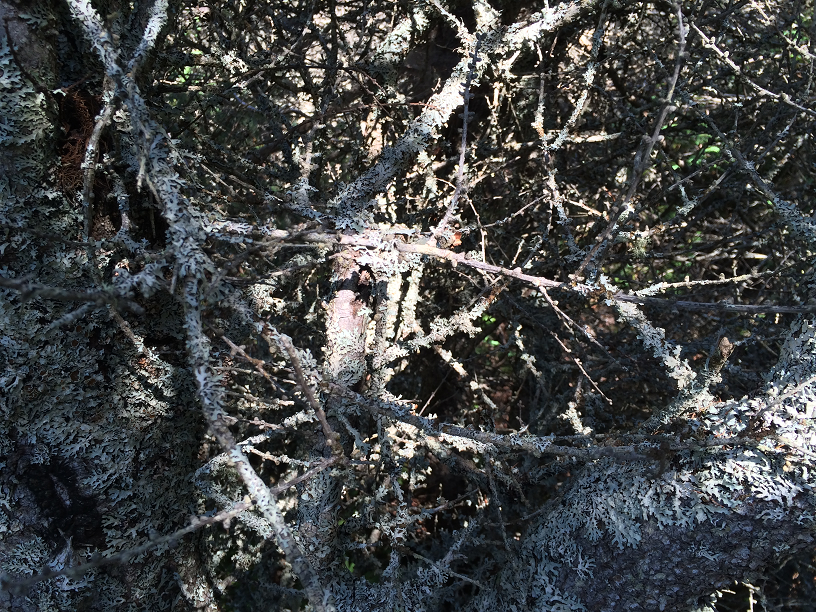
It certainly does get confusing in the 21st-century and the last half of the 20th century for an average person, what we call the lay person. To be able to formulate some understanding of what the stuff is which constitutes the entirety of existence is dramatically elusive. By that, I mean something fairly simple: a fairly regular question throughout the history of human thought, and frequently in the minds of fairly regular people, is, what is reality?
Sometimes in fact, we confuse that question with its first cousin once removed, namely: what is the meaning of life?
For me, the status of existence has nothing to do with the meaning of life. Superficially of course, that is hardly true. No existence, no question of meaning; no life, and so on. Sometimes, a facile declaration is silly, and even so, it can be confusing.
The underpinnings, undercurrent, substratum, of everything: stars, galaxies and multiples of galaxies, the sun, the moon, the earth, the continents, the oceans the people and the animals on the earth, and my sitting here in my chair with my espresso talking into my phone and wondering, what is it that holds everything together anyway?
Generally, since the modern era brought forth what we now call contemporary knowledge, clearly obtuse questions like this are left in the hands of what are called scientists, with physicists leading the charge. While I am astonishingly glad we have contemporary science, the existential questions rest most deeply in the heart of individual humans every day — not in science!
What is that substratum of existence, that foundation of all being, that underpinning of every form of existence that we have come to see, think about and bump into? You intuitively know what I mean even if there is hesitation. What is the tree I bumped into, its solidity? How do I walk through the air while being held in place by the cement sidewalk on the earth, on the…? I look at my hand and touch my eyelash. None of the simple and widespread lived human experience touches a molecule, atom, electron, quark, or Higgs boson. Why not? I don’t know. Actually, I guess no one does. Touches, and I mean touches! Not think about! No formulaic cipher!
It seems that material objects which we normally call the natural world, are really just another form of energy. That’s not to say that we don’t think there are atoms and molecules (we do), or we think that atoms are not composite (we do), or that we don’t think that atomic particles are actually divisible into subatomic particles (we do), and that subatomic particles (also divisible) are now understood broadly speaking as packets of energy, force fields, excitation/perturbation aggregations of fields (we do). Where would we, or anything actually, be (on the existence scale) were it not by the good fortune of the Higgs field and its particles. How can it, or anything for that matter be universal?
Matter and mass are really first cousins, maybe even siblings. Once you look under the veil, they may be identical. Hmmmm?1
1. Jim Baggot, “The Concept of Mass”, The Royal Institution (27/9/2017) Good, focused summary! Endless articles on the Higgs: go look. If ever there were a why/what mystery, it’s the Higgs. Plus getting up in the morning.
Too much to ask?
Things which are simple, aren’t!
Over a great many years of my life, I had the wonderful honour of making pots, pottery. Additionally, I enjoyed making many ceramic objects that might be called sculpture. This led me into realms which touched on notions and emotions, the sensing of ethereal ‘passings’ and my limited attempts to articulate some of what was going on in my inner life. These making and creating processes were a marvel and decidedly not without their tremendously frustrating and wondrously illuminating moments.
I say all this was an honour because it transformed and enriched my soul beyond words. I, of course, try to put it into words because that’s how I am. (Not a fool’s errand, and not quite, not.)
More than a few years ago I addressed a little of this as I had the exacting challenge and real fun, of writing a Ph.D. thesis: “The Art of Earth and Fire”. (As with most adventures in my life, this was aided profoundly by the focused input of other helpful souls).
The questions I was perusing then did not go away. Questions which relate to the deeper issues of being human, being creative, being temporal, and being physical seem to be nestled more deeply in my soul and re-emerge into conscious thought on a frequent, daily, basis. So be it. Sigh!
What is a thing? (finely glazed stoneware bowl, porcelain sculpture, my chair, this delectable espresso).
On occasion (betimes, more frequently than on occasion), I follow some of the work undertaken at the CERN, the European centre for nuclear research. They blast little wee bits of what we call matter into one another (at just under the speed of light) to break them up, to see what the sub-components of the smallest particles, of the smallest particles, of the smallest particles, of what we call matter, might turn out to be. These sub-particles of other particles are not ‘particles’ in any sense of the word with which you and I are familiar. They are ‘zones’, ‘fields’, ‘force carriers’, gluons, bosons, and the like. This is a very central part of the overall human scientific inquiry into the nature and constitutional structure of matter/mass, what in daily life we call physical stuff.
They find many different constituents and they parcel them into groups, give them designator-names, symbolic icons, graphic representations, and they express their findings in technical reports. The technical reports are outside my realm of easy comprehension. I can and do, however, follow their accounts for lay people.
I do not doubt the integrity of what they do. This is a super prime example of experimental science. “Let’s go and find out!” There are so many diverse scientists, sophisticated and variable ranges of specialization, manifold cultural, national, and discipline groups represented in the broad spectrum of scientists, that we know just from the whole situation, that these people are not fooling around, deceiving people, or pretending to be doing something they are not. They are, in fact, undertaking something which is deliberately serious scientifically, and in an irregular perspective, something deeply revealing. More on this later, for sure.
So, although I don’t always understand what it is precisely that they’re doing, I know that they are analyzing physicality, matter, mass, and energy.
So…
I, also, am physical, matter, mass, and energy.
You, also, are physical, matter, mass, and energy.
The chair on which I’m sitting while I’m having my morning coffee also is physical, matter, mass, and energy. As is the coffee, lest we forget.
I really am completely discombobulated when I try to grasp that I, a physical thing — physical, matter, mass, energy — which sees, which touches, senses movement, feels the wide gamut of human emotion, perception, imagination, and moderately complex thought, and which does actually sit on a chair (am doing so now), which is itself a physical thing, matter, mass, and energy while I am having a delectable double expresso (physical, material, and so on.., otherwise no taste, no swallowing, etc.)
How is it that I see, touch, feel, think, and sit on anything at all?[i]
How does it come to be that the apparent ground to all this physical, material stuff is actually different fields, force carriers, energy waves, aggregated bundles of energy, misty agitations, massless mass, a field which enables mass to be and to cohere, and the like? Not only that (as if that weren’t enough), it turns out that this ‘I’ also appears to be a human being/person having a coffee on a chair in a room in a town, on the surface of Mother Earth, which itself is spinning as dust in the Milky Way?
I would love to know what is going on here.
That’s not too much to ask, is it?
Not to mention neutrinos — the gazillions of which pass through all this, including you, me, and my espresso — all the time. And we are so far from ‘dark matter’ and ‘dark energy’, that if we went looking we may never make it back.
But I cannot walk through a clay brick wall!
Gimme a break here!
1. I enjoy, and I am dramatically encouraged and challenged by the creative-edge scientific thinking of Anil Seth in this regard. Go look. https://www.anilseth.com/ : Anil Seth – YouTube. Drives me crazy! A paradigm of circular thinking, tight , serious and silly.
Do you mean all by ‘all’, everything by ‘everything’?
Just because any individual thing, whether it be the entirety of the earth, or you as an embryo, needs the entire universe to exist for it to come to be, it doesn’t mean that it is not in and of itself, a creative act and thing (e.g., entities, objects, item, being, creature, article, presence, stuff, substance, etc.). All forms of creativity take place in existing local contexts — all the way back! (Including all the turtles all the way down)!
Yeah, yeah I know, what about the beginning of everything?
That is about as natural as a question gets. It comes intuitively to mind especially when we are talking about something about which we are or might be confused which easily happens when we wonder about the beginning of everything.
Well, obviously, it depends on what you mean by ‘everything’, non?
Oh, you philosophers, leave us alone.
This is not a philosophical question.
It is an every day, common sense, very regular, simple question from an ordinary person, in ordinary circumstances on any ordinary given day. non?
Often, when people are driven to this type of question, they have God in the back of their mind, as the creator of everything, out of nothing. When I encounter this kind of thinking, I have come to realize that by everything, they do not actually mean everything. They meant everything except God.
And, gosh, since there is no god, nor has there ever actually been/will be a god, it is not yet clear to me what they mean by the word ‘everything’. By ‘everything’ I, myself, actually mean everything!
If And
There is no possible world without imagination. There is no imagination without an actual world. Possibility is not actual, it is imagined: I reiterate to emphasize. Is pure possibility the opposite of pure actuality? Pure? Some people would say that imagination is a form of thought. I could not disagree, even if I tried.
Imagination is a primal form of thought, ground to many others, interwoven and randomly dispersed with reflection, deliberations, planning, speculating and navigating adventurously or in suffering. It is alive and active in individuals, our collective life, complex memories, and many forms of dynamic creativity — often seeming to have deeper origins, apart from, entwined with and before the beginning of all time and such matters. And sometimes, not infrequently actually, abstract and conceptual thought is at the origin of imagining, and not infrequently this form of thought follows upon imagination.
How could any of that possibly be true, pray tell?
Of bottoms and tops
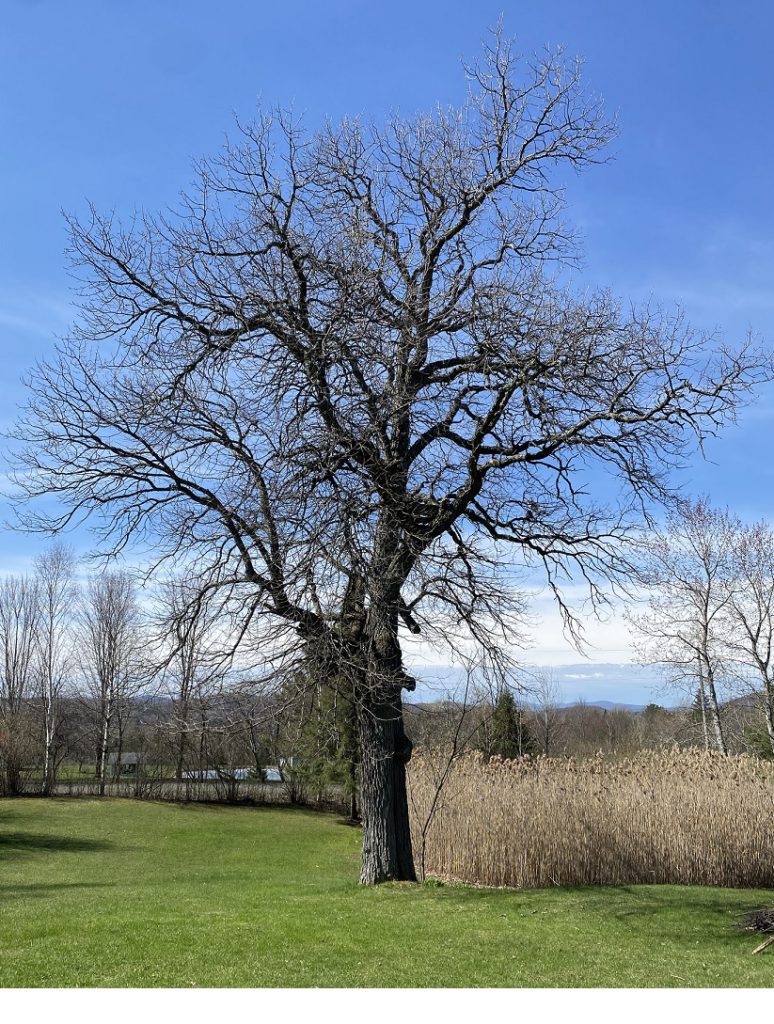
I think it would be fair to say, that in my deepest, most hidden self, namely, the one which, somehow, I believe myself to be: I am an almost completely functional, significantly cognitively dissonant, and occasionally, a calmly, turbulent set. And sometimes not — imprévisible.
I appear to myself to be an endlessly, disorderly one/whole. If you think that last sentence is unclear, you will have no grasp of its lived reality.
How that could possibly be, is, of course, an elusive sense of who or what it is that I am. (Or you are, surely.) I cannot begin for a moment to articulate and make clear what precisely that means in any straightforward way. Forgive me or not; that does not matter.
I accept that everything that there is, namely, the universe in which we live, the totality of all existence (the subterranean base of everything) is constant movement — an odd metaphor for something which is actually no thing. ‘It’ is a bundling agitation, coherently dispersed energy, and non-specific, changing particularity. Do I know this? Certainly not! I jump past the formulae and equations of the particle physicists. Not landing anywhere actual, of course. That’s why I said I accept it. Besides, that’s not the sort of thing you can claim to know without a chaos of counter claims — sigh!
I also accept that, like all other actual things, I am something which maintains itself (together), as what I am. I do not do this entirely by myself of course, because like everything else, I exist in a dynamic matrix. Not only Popeye says. ‘I yam what I yam.’ This is all taking place in the entirety of the interactive forces and interwoven situations which mesh and merge with us and have an impact on us, and in this case, me. I am only an example of water tension in the form of a living human — conatus, hmmm?
I wish I could say exactly what I think that the baseline for the deeper being of things, is. It is not enough, although helpful, to say that the underlying being of all this (what a word this ‘this’ is) is a depthless, endless, full-less, ocean of quanta, quantum fields — just beyond the grasp of the mathematical equations and formulae which tie the mists and clouds together. I don’t think that that is false. But it certainly doesn’t help understand walking down the street, in any way, shape, or form. Especially if you are looking for a good espresso and especially, if you are feeling just great.
If what are commonly designated as mathematical formulae do allow actual communication amongst specialty physicists, as if these formulae were a language of some sort, why cannot they be translated into what most of us think are conventional languages? What is a weltenchauung? Is it a trap or an opening?
OK good, so that’s off my chest. Now I can breathe a little.
This thing, that thing: the thing-in-itself
Generally speaking, when we wonder about the truth of things, we incline toward the idea that there are states of affairs or situations which sit in the world in some way and that we can know them.
Really simple examples are found regularly in daily experience. Let’s go downtown and have a coffee. We did. We were sitting on chairs in the little café having our espressos. We know what we are doing and talking about. We humans were/are there, as are the chairs, the tables, the coffee, etc.
There was a state in the world which those few words described, and most people would understand the words and the situation. We say, we know these things and what it is that is going on. And it’s true; it is right there and happening!
The coffeehouse, the street, chairs, the environment, the other people, they were all there in the world. These few words of course outline a real world in which humans are not only present, but also their perception of, organization of, and living within, are determining elements of what it is that reality is taken to be. And, broadly speaking, how we might talk or write about it. Not much authentic confusion here.
When we wonder about objectivity and knowledge, we often fall into a plethora of clouds, unease, and vagueness. In part, this rests within the history of thought, inquiring minds, theoretical thinking, theological thinking, argumentative and analytical thinking, philosophy, and certain aspects of 21st century scientific thinking. Many thinkers have posited ideas and notions which realign the deeper, significant meanings of certain words and therewith, how the world is seen and how it might or might not be understood: that is, known.
Concerning distortion: most words can have their living and generally felt meanings. All this can quickly be shifted by a reorientation of perspective, a placing of the words in a significantly newly aligned spectrum of uses, and similarly not uncommon situations.
Mount Everest is an immense mountain. It is not as immense as the earth. Quanta are immensely small compared to a turtle. Charles lives in a small house which is immensely bigger than a grain of sand. The mountain, the house and the sand ‘occupy’ space, quanta do not, let alone massless ‘particles’ — which of course are not particles in any regular meaning of the word outside of sophisticated physics environments.
A clear and powerful example of why we are in a quandary about knowledge and reality is expressed by some of the thoughts of Immanuel Kant. He is not alone in this regard.
The most important idea that came into prominence with him from my perspective, is that the ‘thing-in-itself’ is not a thing which can be known as it is in-itself. Knowing is a human action and based in lived experience (conditioned by space and time.). We can only know the thing in keeping with our human condition and the fact that knowing is lodged within the human condition — in space and time, grounded in sense perception, nestled into a concept framework, and so on.
At some level this seems intuitively obvious and true. Its companion thought is the idea of perspective, and its second cousin is the distinction between knowing and being. What is the table apart from my angular and sense-based knowing. Is this ‘take’ the actual table ‘in-itself’? Is the table a thing apart from my knowing?
Of course, humans have been known to put themselves into conceptual, imaginative and worldview perspectives situations from which there is no exit. What is a thing apart from what we know of it? How could we know? Some of us get concerned. There are many because what this suggests is that reality, things, objects, the stuff of existence, are beyond our knowing, as they are in-themselves.
This is frustrating for many because speaking people have thought that knowing something is to know it as it is.
Duh!
What’s up, Doc?
Just sitting there. Not doing anything.

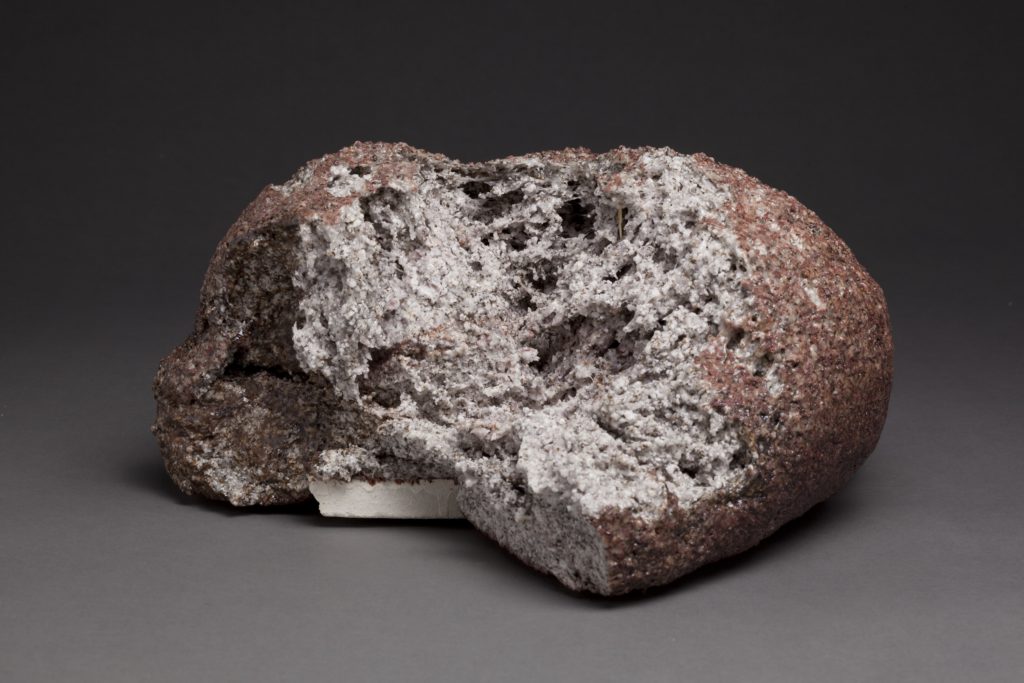
In the beginning, life, all (αρχή)



In the great tree of life, human beings are now seen as a moderately small twig of an extended branch fairly far out from a major trunk link. In keeping with thinking over the past century and a half, scientists have garnered considerable support for the notion that humans are a derivative life form — a recent sprig. This is a marvel of insight!
It is an equally stupendous surprise to realize that this stem, human life, is quite aware of itself and is somewhat cognizant of the context within which it comes to be, has its being and ceases to be.
As is also painfully evident, we are disorientingly unaware of the when-where-how-why-what of our existence and nature. Oh, well, as the saying goes, “You can’t have everything!”
Small addendum: this lack of deep self-knowledge, while crucial to our insatiable curiosity, pales by comparison when we look at our feeble comprehension of existence itself. Oh, well, as the saying goes, “You can’t have everything!”
Of course, you can have everything! Because there is everything. It’s just so far beyond our integrated comprehension that we are forever accepting limited ideas as adequate accounts/explanations for/of it.
We arose in it, not the other way around!
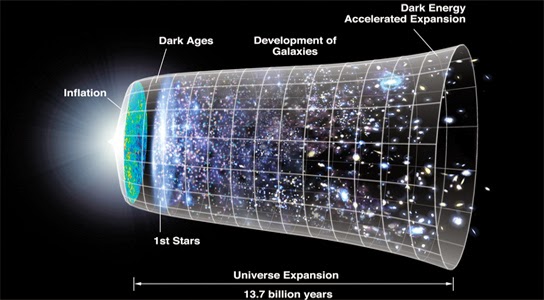

Could everything not be? That’s a peculiar way of asking, why is there something and not nothing? This is not an unreasonable question although some would argue otherwise. How do humans generate such questions? How do we think the unthinkable? Is there any unthinkable? What does ‘could’ mean, I beg to ask?
Because I am a human being I cannot walk through a cement wall although I walk with ease through open air, and at the same time I actually breath it, the air, in, without which I could not live. After all is said and done, it is air, and I am human.
Why is this so obviously true?
It seems so clear to us that the cement wall is an object outside of ourselves, and that our body is also an object (are we it?), and they cannot cohabit the same space at the same time. Heaven forbid! This is an ancient truth which has lost its impact in the age of quanta — alas, what is an object, a thing, after all?1
What does the standard model of particle physics have to do with this, pray tell? Do its sub-units coexist everywhere-when? Exist? Alas, what is a sub-unit, after all? Are they ‘in’ this apple I am eating and ‘in’ the teeth crunching down on the apple? Are they in a fart? Oh, don’t be irreverent — but why not? A fart is stuff also!
Existence is contextless context. Could it be otherwise? Modern thought mocks the uncaused cause and the causa sui, non?
Well, of course it does, but not because of Aristotle or Spinoza — without being really explicit about our current assumption: there is no god!
Without its completely outside ‘other’, modern thought is incapable of a deep and reasoned reply. There is none! What is a real circle?2 Is reality an illusion – gimme a break?3
1 What is a thing? Heidegger; Obliterating Thingness: An Introduction to the “What” and the “So What” of Quantum Physics, Kathryn Schafer· Gabriela Barreto Lemos 2 Philosophical Foundations of Neuroscience (Blackwell, 2003, Bennet and Malden); How the Brain constructs the world, (ScienceDaily, 2018), SISSA. Etc.
3 Hawking and Hertog — the universe as Hologram, go figure!
The Grand Scheme
Fate is the complete state of your actual existence at any particular moment in time.
We call it a ‘moment in time’ because we think that by having a sense or image of it, or words for it, that we have been able to capture something like the ‘now’, the ‘here’, etc., as if time were a ‘now’.
As if time were distinct moments: before and after; and as if space were places: here and there.
In ordinary language it feels unnerving somehow to designate fate simply as an actual state of existence. Where is the tremor of destiny, the tension of inevitability, the undertow of an almost cosmic necessity? Over our lives we have sensed and glimpsed forces much bigger than ourselves as regulating our miniscule existence. Reality and our local aspect of it, the universe, are most assuredly at play in our lives, our existence, our place: there is, however, no plan and there is no intent. There are only forces and facts. Humans have a theatrically overly exaggerated sense of our importance. No one cares, but us. Sigh!
Fate is not predestined. Fate is a particular state of disorder and order, and chaos, choice, and adventure, and clarity and confusion, the existence of a human being, living as what we call a ‘soul-body’: a person!
It came to be!
No scheme, no plan, no design.
Take a deep breath, get a coffee.
Carry on.
Not to be!
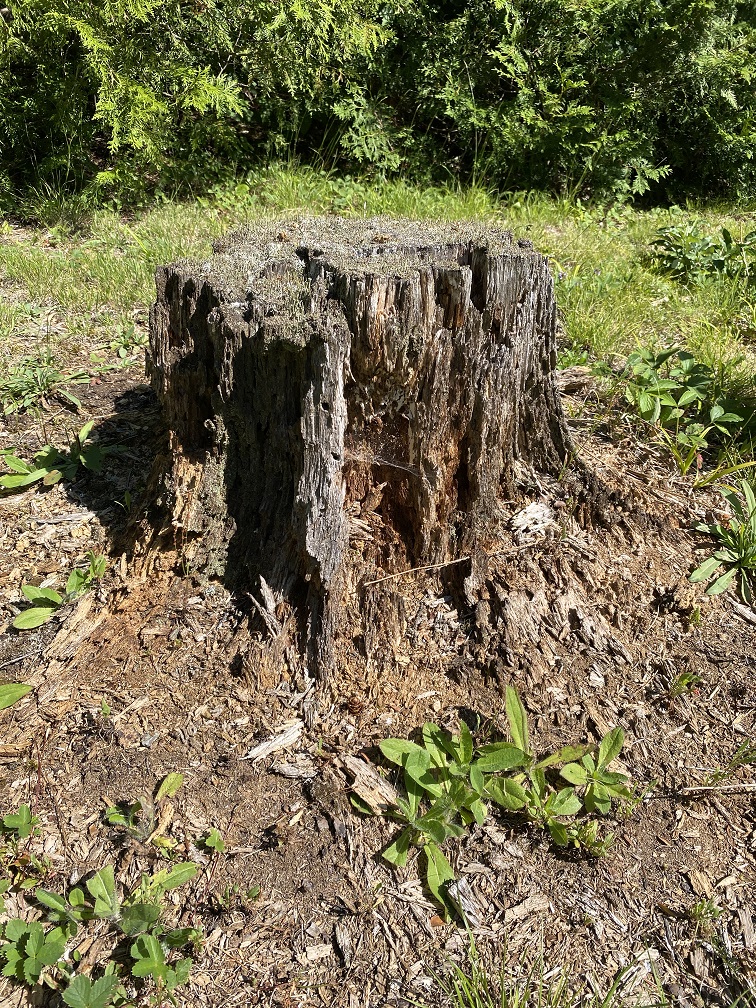
death (not to be, cont’d)
Death is not a state. When we talk about death as if it were a state, we are using language of the living, in the space and time, to talk about something which does not exist in the living, or in space and time. Talk about death is an inverse and slightly backward way of talking about nothing: that is to say, not being.
There are dead bodies, that’s for sure. My dead body will not be me. Nor will yours be you.
That is not to say that now that I am alive, I have no intimate relationship with my body. It is, however, pretty clear to me that we do not really understand what the word ‘my’ means when we say ‘my’ body, even though I never confuse mine with yours.
Just to be clear, this confusion extends even to what we call my mind. My mind and my body are not quite me in my totality. I say that hesitantly, because I don’t actually know deep down what my body is, or what my mind is. And by deep down I mean in the case of the body, stuff as deep as the undercurrent reality that scientists are trying to describe in physics with the standard model. I say that because of course, my body is a paradigm of a material thing.
We have an equally unclear idea as to what it is that our mind is. It’s easy to say that it is our consciousness, or perhaps our self-consciousness, or perhaps our thoughts, or feelings, our imagination, or memory, or wishing about the future, or feeling despair at the loss of a loved one. Yea, for sure. It’s the ‘what’ that is the problem non? The ‘what’ covers, ideas, thoughts, consciousness, etc. — the whole shebang, as we say in the vernacular. Sigh. what is what?
P.S. Antonio Damasio, Feeling and Knowing, (Pantheon Books, 2021) a very good and stimulating read for those who have such interests. It is more descriptive than explanatory even though it sheds good light on our quirky evolution.
The Word
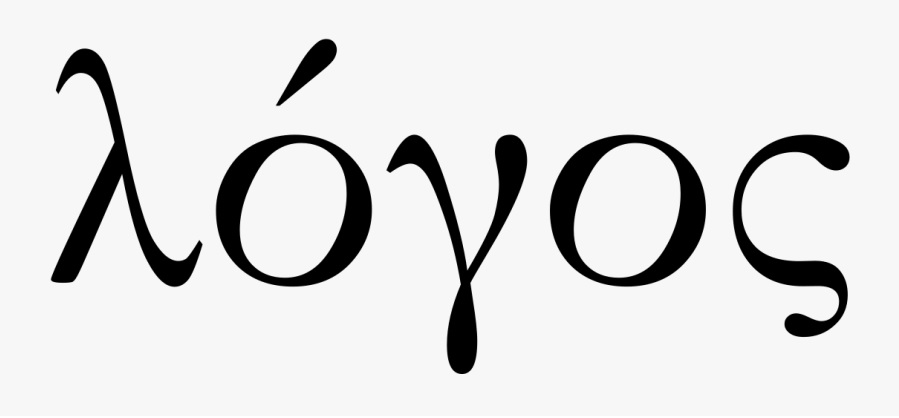
logos
In the beginning was the Word, and the Word was with God, and the Word was God. (John 1:1)
Logos, the word, is a chain-network which binds the human soul, the human mind, and the human heart to structure, order, and interconnectedness — guided forces and influences from without/within.
There is no god: he did not die as Nietzsche revealed, but only because it had already not been!
The world is before us, and we are in it. Our thinking of it does not make it, only our slight grasp of it, and even then, it is primal and we a flicker.
Cosmology is a tautology: an interwoven history that deeply binds them as deeply as genes do humans.
What is logic? Is it possible to be reasonable without being logical? Is the process of reasoning an orderly, integrated, interdependent woven fabric of logic and reason and rationality?
Are our human emotions, certainly what we call our passions, a logic?
Is there a logic to aesthetics? What is the logic of feeling? Why logic? Are feelings thoughts and thoughts ordered? Who says so? Baumgarten’s insight did not actually infuse sense, beauty and sense with logic and order even though the movement took off like a house afire. Primal order is a crock!
Being bound to the earth by gravity is more freeing than being encapsulated in the womb of logic.
Is existence logical? Is reality logical? Is nature logical? Is human life logical? Is the existence of the earth at all logical? Am I a logical entity?
What is the human spirit if not a logical entity? What is an entity? Are entities logical?
The creation of an innovative idea — a new perspective.
Are space and time logical; is space-time logical? It certainly is not a continuum? Are space and time a priori conditions for being annoyed? For being in love? For war? How are they, is it, a logical structure? Is any structure always logical? The standard model of physics is a patchwork of found stuff, not a formulated logos — we strive to make it so!
What is structure if not logic? If the Higgs is not logical, is anything? If a, then a: gosh, that’s orderly! How can matter be matter: this chair…By order and analysis?
There is no God: the word is not god — there is no beginning — and of what?
the murky cavern
It is not reasonable to assume that humans will not be not-reasonable, that they will be unreasonable. We somehow know this even as we strive to avoid it.
It is unreasonable to think that human beings will be reasonable.
It is not a reasonable way to live, assuming that human beings will not be unreasonable.
It is an unreasonable way to live, assuming that human beings will be reasonable.
Reason is unreasonable: it is a crock.
Abhor a vacuum?
Is ‘wave’ a primal concept? What is radiation?
Can waves travel when there is nothing, and of course by nothing I mean nothing — not a hidden little something? Well, it seems that some can, and some cannot. This simple distinction is fundamental. What is mass? What is matter? What is this hand of mine which shapes this plastic clay, right here, right now? How quickly can a non-mass wave travel?
What could a non-mass wave be — hardly something called a ‘thing’? A ‘particle’? What game are we playing?
Nature does not abhor a vacuum. Nature does not abhor anything. Nature has no feelings, no emotions, no perceptions, no thoughts, concepts, or theories. And a vacuum is not just a human device for picking up stuff: it a state of emptiness! Non?
Some of its subsets — modes of nature itself — do abhor some states and have a wide range of feelings and emotions about such considerations: human beings, ants, gorillas, birds and honeybees, and catfish, perhaps. But not nature itself!
It’s not Turtles all the way down!
Without the primal forces, I would not be. Oh my God, I would not be here. Not only that, I would not be me in addition to not being anything at all.
The living nest of humanity itself, and as with all the rest of the stuff there is, rest and are lodged in the vitality of the primal forces. (Pretend you know the function of the standard model of physics, and on the side that you grasp what being is: you know, pretend.)
None of this is a reasonable process. It is not logical. It is not thought through in advance or even after the fact. It is not a plan. To paraphrase, it is something which happened. Some people might say it, occurred, others that it came to pass, and still others that it emerged from chaos: no argument. It’s OK that we really only notice, feel astonished and can only partially sense and understand.
We are human; it is not.
Double Double ‘u’ – wherewhen?
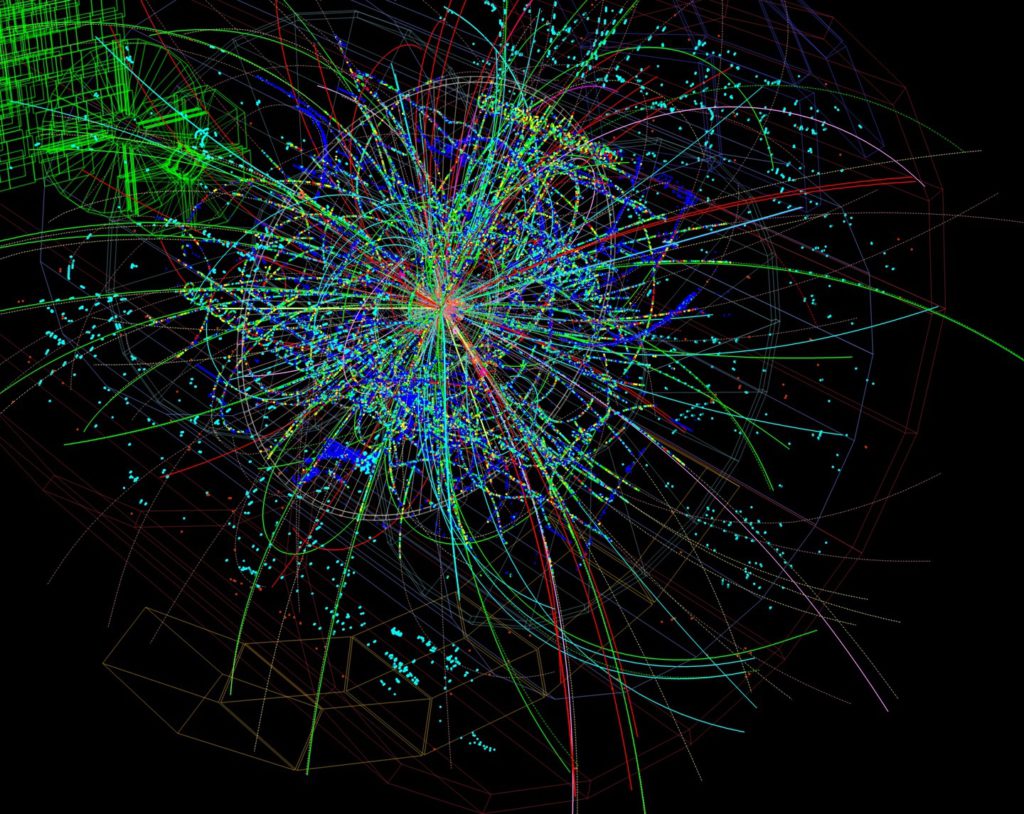
Time is movement. Measuring time is comparing relative locations of minimally two movements, the one movement against an accepted/known second movement. As we know, all movements are relative to other movements.
Space is location.
SpaceTime is not a continuum.
Space-time is a unity seen from minimally two perspectives and these perspectives are of the unity.
The word ‘one’ is used as a limiting notion because beyond it there is nothing simpler.
Every one can be seen as many ones.
Knowing is a human activity.
What is a thing?
Almost a Question, But…
Thing/Object:
Chair.
Metal, wood, textiles.
Molten glue, fibrous wood, cloth texture, cellular structure and in twined fibers, molten metal.
Matter, chemical constitution: molecular structure, atomic structure.
Mass.
Subatomic structure.
Subatomic particles.
Subatomic particles which are not particles.
Subatomic particles which are universally, spread- out fields and waves of energy, carriers of energy, transformers of one kind of nature into another kind of nature, located nowhere in particular, but everywhere: there is energy and matter.
Hey, human!
Explain the chair as a seen and sat-on thing.
Please and Thank you.
First cousins, once-removed
Measuring time is comparing relative locations of minimally two movements, the one movement against an accepted and commonly known second movement. As we know, all movements are relative to other movements. Time is movement.
Movement is not identical with change. Movement is an elemental displacement in location. Change is a transformation of a thing within itself relative to another instance of itself. Change, when stretched in meaning is clearly movement. Time is change.
It is inconceivable to know a thing as it is in itself, when by in itself, we mean entirely independently of human perception, thinking, feeling, or knowledge. Things, as things in themselves, are not known things.
‘Things in themselves’ is an empty phrase unless it is a metaphor.
One of the beauties of CERN is that the more they probe, the more-less ‘it’ becomes.
What is a thing? Matter-antimatter is as peculiar a couple as ever there were one — which is not a thing.
When we think that every thing which exists affects every other thing which exists, we often forget (at least) one part of that overall configuration. We, too, are things: and are some of those things which affect things, and which are, in ourselves affected by those things.
It is neither all inner nor all outer — nothing dynamic ever is!
Knowing, Thinking, Believing, Inclining: yes, no, maybe
There is no God to guarantee the truth, coherence, and existential reality of the world, and everything in it.
There is no god that ensures that what we know is actually what is the case.
There is no evil demon that can cause, could cause, does cause, and will cause humans to err regularly in their judgement and their thinking.
There is no evil demon that casts doubt on everything that human beings assert is truthful.
No gods, no demons, lots of humans and lots of other animals and an astonishing number of living things, and we just exist and know what we know, do not know what we do not know. We try to figure out how to know more, and carry-on.
No guarantee, no deep doubt, no assurances, no infallibility.
Just us living in the world and trying to figure it out.
Sometimes we know stuff, sometimes we are mistaken, and it’s incredibly difficult to tell the difference often enough to be discombobulating. So what?
Get up, get about your business, do what you know is right, don’t argue too much with yourself about what the real is, or what is right and what is wrong. Try, but not with frenzy. Trust that what you know is what you know. Being overly certain is a painful existential circumstance, too often accompanied by a feeling of clarity and heartfeltness. It would be handy to work out when what is what. Doubt only when your doubt is authentic. But, doubt!
Do not pretend doubt. That it is an endless pit. Do not fall in.
Do not pretend knowing. Belief and knowledge are second cousins, once removed. Be attentive to those with whom you might lay down. Offspring enter the world and shape it, just as you do.
It is a well-lit path with no destination.
Easily taken.
Spelunking matter
Pardon me for a sidebar discussion: the other day I watched a documentary for the third time, I go back to it every once in a while when I forget the emotion, passion, focused energy, brilliant and frustrating insights which are so often in play and having a real influence in the realm of advanced scientific discovery and experimentation. When I become flippant, this reminds me to be respectful.
My main interest in all this is to see, to sense and perhaps to grasp a hint of how far humans have pushed their ideas of matter/mass, nature, reality, and the multitude of interwoven fundamental concepts of humans living in a material world. This realm excites me, confounds me, frustrates me, awesomes me, etc., etc. The more we know, the less we know — what does it mean to know? But I digress. (Although its mass has some sway in my inner life).
The documentary is called ‘Particle Fever’ (https://www.youtube.com/watch?v=5Lx109jdGCc). If you go there, put on your patience cap.
Think of it as a 12-course meal.
Temper your intake. Digest. Bon appétit!
The word ‘word’, near, but not at the beginning!
Current language use and the inter-connectedness of today’s words with their deep and mythic interwoven history, are a very rich ground for the complexity of the meanings and functions of the words we use. Simultaneously, they engulf (some would say ensnare) us in primordial world views and earlier value systems and beliefs, even about the very subjects we are investigating and attempting more fully to understand.
Creating new concepts and their frameworks is akin to genius, a set of actions which does not have a clear precedent, but which re-frames experience into a not-yet fully understood, or foreseen, order.
Thank you Nietzsche!
Can today grasp the plenitude of tomorrow? Or yesterday today?
We should remember that while the language we use interweaves us into many earlier world views as a provisions resource, it also presents us with structures and meaningful content against which we struggle and contend while building the world and its minutiae. Language is the breathing of the mind.
Breathing does not by itself construct worlds. It occurs within a world and sub-sets of a world and sub-sub-sets of a world — like turtles all the way down. And without it, we are not.
Language by itself does not construct worlds. Shaping, however, occurs with such sweeping subtlety that we are easily confounded. Language does enable several insights into our grasp of what is going on, and therewith, how we portray, explain and/or justify actions, theories and plans in the worlds within which we do live. But not by itself — neither its ephemeral origins within our vague consciousness of ourselves and the ‘other’, nor the neuron firing in temporal harmony as if by plan and purpose, or as if by cause and effect. Language does not account for itself. And yet, without it, we are naught.
A Name, Number, Thing
A grain of sand does not a beach make.
What a surprise they had when they arrived at the beach for the afternoon picnic and swim! There was only one grain of sand. This is garbage they said. They all agreed.
What kind of a creature do you suppose it would be that thinks fairly well and knows things, and knows them primarily of course, from its own perspective?
It is deeply and profoundly aware that creatures like it also know these things, and they know that they know them from their perspective, but that somehow they all know the same stuff as perspective enriches the knowing and enhances the truth.
If you assigned a computer the task of counting numbers and you give it a year to count numbers, and then had it stop, the end number which the computer arrived after a year would be an unbelievably long number, almost entirely zeros but the first one of which would likely be the number one.
Now pretend that that is the number of stars that there are in what we humans call the universe. With our prayers, our predilection for naming things, numbering things, identifying things through formulaic constructions, and gathering things of a similar ilk under the umbrellas, which we call concepts.
Could we ever, would it ever be possible for us to have an actual number and or a name assigned every one of the stars?
Arrogance and ignorance, and a conviction of our power are the wonderful feelings of being strong and capable. They are an illusion. The biggest number we have cannot be imagined to be that number which actually represents the number of stars, heavenly bodies, or instances of such things in the entirety of our universe, or broadly speaking, what we would call existence.
We certainly are peculiar. Intelligent and yet so wanting in intelligence. Intentional but so wanting in enriching intentionality. Wilful and so unaware of the deep need for a will to be accompanied by an appropriate value.
Sigh!
I — It
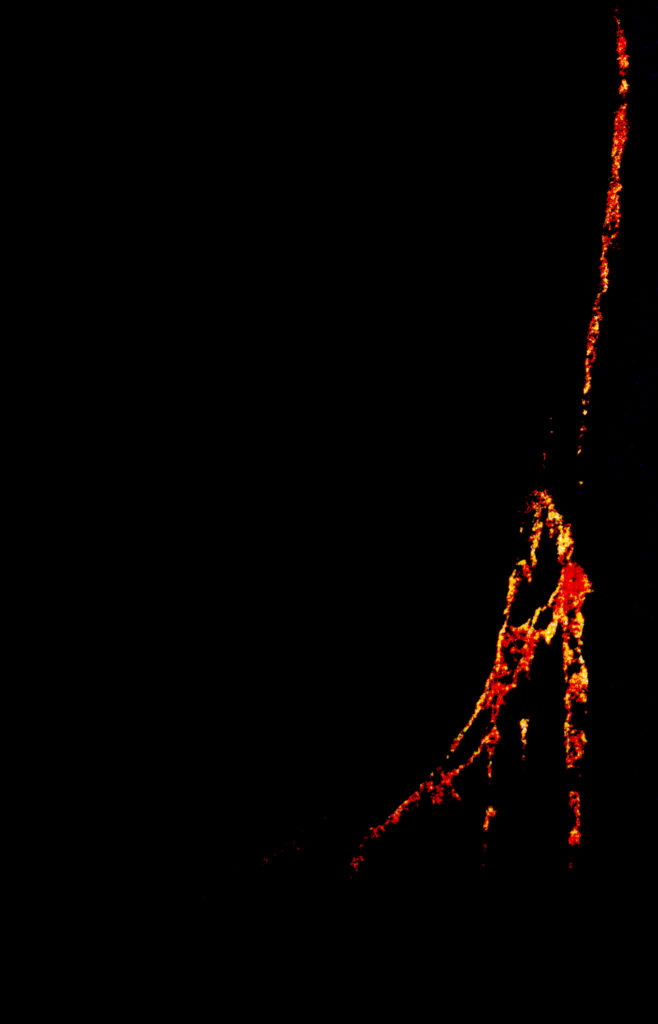
I was really quite taken and stimulated by Foucault‘s idea of épistémé. I took this to mean that eras cohered in great part because of a broad collective schematic grasp (by time, space, culture) of what it was that knowledge and thinking and human understanding of reality, might be. It was a terrific insight into what might constitute an understanding of things and an appropriate explanation of them. When constituent parts or aspects of thing were related to one another within the broad, overarching and vital episteme, in great part, this interaction would be an understanding/account of these very things.
One of his interests in outlining a general épistémé for the time period of, give or take a little, the 16th to the 19th centuries, was the idea that Ideas and the language related to them are representations which our mind and thinking gives to us, of what it is that the world is in itself. Our minds represent the real world to us, and this is exemplified in language.
This notion, representation, is very telling, and it is very old in the history of thought. His point was that as we think and talk about the world, we are using our ideas and our language, as a representative of, a replacement for, the world that we think we know, and about which we are talking.
I think this is a fairly normal way of looking at how it is that ideas and language work. Foucault’s way of saying it was a bit abstract and nestled in his convoluted way of thinking. I myself liked it.
When we entered the 20th century and shortly after, we were offered up the philosophical investigations by Wittgenstein. One of the terrific ideas that was given to us in his thinking , was that words and ideas are an aspect of, and integrated with the social life of humans in the world. The words and the ideas which preoccupied us are not a grasp of, nor a fundamental apprehension of, the world. They are a moment within the world, a complex way acting and behaving in the human world — what he called a ‘game’, a ‘family ressemblance’. They do not represent thought of the world, or the world itself; that is not their social function.
By introducing this notion that ideas and language are not special in the sense that they are not a deep apprehension or representation of the world, but rather an operational function within the world, was very profound in its broad impact.
It is a reminder that our words are not the world disguised in language. The world is not our ideas as disguised in thought. Our language is not our thought disguised as real. Each of them are only elements of the world, the human world, the social world, and they are simply moving and changing ways of humans interacting amongst themselves, and with the world.
I am uneasily fascinated by these notions because they compel me to reorient my fundamental sense of what truth and knowledge might be.
w.o.r.d.s ?
Reality is existence. Existence is reality. Words about things are not the things. Words themselves are things – not the same kind of things as the words are about, I hasten to add!
The speed of light is not a thing. It is a measurement expressed in words, i.e., its cousin to a formula and what we call numbers. A measurement is not a thing, nor is its cousin, the formula/number. Everything we measure entails time end space. (Sigh, that Singularity gives us amazing conceptual tumult, e.g., the beginning? of time.[i]
In popular thinking (like that expressed by these mostly ordinary words), light is thought to be made up of photons. It gets confusing for laypeople (which is absolutely everyone except a handful of super specialists). It is even more perplexing when it is noted and suggested (claimed perhaps?) that light has no mass (like its second cousin once removed, the neutrino). This kind of unease, arising from lack of understanding and the peculiar way ordinary language is repurposed in specialty physics, is exacerbated when over time as we are told that particle physics does not actually deal with particles.
For a layperson, the non-particle particles seem to get discussed in the analysis and break down of atoms and their components into even smaller things — a peculiar set of words in this already dramatically small realm. In this super small world of particle-less particles, there are not only no particles, but also, no things. This is thought tumult conflated with obscure public claims about the nature of nature. Being a specialist is not a passport to elsewhere. Nature is, after all, all there is — generally thought to be matter in some form or another. How else to measure it?
It takes one’s breath away.
I was a potter. I made things, non? Like real things. The mug for your coffee and the sculpture on you pedestal. Not non-particle particles, although I guess they were there somewhere, non?
[i] Michel Foucault, Les Mots et les Choses, 1966. A painful and terrific, fun read if ever there were one.
Centred Centre: Centreless Centre: The Found is Lost

Time is movement. The experience of movement is duration, and the measurement of movement is thought time. Measured movement relative to the movement of another, is called objective time. No memory, no lived time.
Space is occupancy. Occupancy as experienced is location. Location, as thought, is measurement relative to another. No I, no it. No it, no other.
Deep down, we do not really know why it is that everything is always in motion, whether it be the largest galaxy cluster or the smallest sub-units talked about in the standard model, or for their cousin, the neutrino.
I don’t know where anything is by itself.
Human beings tend to be obsessive about many, many, things, not least of which is the nature of baseline reality for all things, or existence itself. This is painfully and obviously true in physics for example, or in sorcery for example, and actually, for anyone who sits out on a dark summer night and looks at the stars or wonders, “what’s up, doc?”
I figure the baseline existence of everything has no defined form, while being itself, dynamic. This is the sort of thing that you can not prove irrefutably with evidence. It is the evidence.
Actually, it’s really interesting as a problem for reflection if something like that were true. How can you ever actually sit in a chair, have a thought, grow from a zygote into an adult human, come to know some of this – THEN, not be at all.
Living, Sensing, Limits
By important and stunningly unique circumstance, earth was formed along time ago, as a throw off from a minor zeptomoment within the universe‘s development, which was itself as fractional go-go second and one little subset of the totality of existence.
The fact that there is life on earth is so stunningly beyond being a miracle, that it is just the way it is.
In every instant, in every place, in every context in a continuous, and yet brilliantly specific way, existence is continuously creating, making, forming, shaping, generating: a totality and plenitude of the fertility of all things.
In this very instant now the universe is creating us all and continuing to create beyond that self.
Life is the smallest of the smallest of the smallest. We sure are lucky to be able to think about this, even though of course, it is so far beyond our comprehension, that we know that we are profoundly ignorant, that we do not know, that we cannot know—the whole thing or its nature.
I know, I know! Give science time. Sigh. Pretend you know that I know that science is derived from Latin ‘to know’.
This is not about science; it is about who and what we humans are. and what is this total existence of everything.
If not now, when?

It is so obvious that I, like pretty well everyone else, lives in a material world. In this case, the word material, of course means physical and not just the slightly more esoteric word matter. Matter is the amount of stuff there is in things like physical objects.
It is possible in its own sophisticated but convoluted way, to argue that all of our perceptions of physical things is only our perception or point of view of them and as a result, it (what we take to be the thing giving rise to the perception) will always be a teensy-weensy little bit behind the absolute present moment.
The world that we live in on a daily basis is obviously physical. Anyone who has paid attention to themselves knows, however, that an astonishing proportion of our time on a daily basis is spent in our mind: thinking, remembering, doubting, questioning, looking again and again at this or that, planning, imagining, wishing, regretting, desiring, lusting, fearing, being sidetracked by teensy-weensy, little diversions, and other such painfully obvious mental phenomenon and experiences.
People can deny this kind of stuff all they want. I do not in any way, shape, or form get thrown into actual confusion by what they are saying when they suggest I sit down for an espresso and a chat.
We walk in a physical world and live in it, we live in a mental world and feel the liveliness of our existence because of it.
Go figure!
Forging paths

The road not taken is not taken: the road taken is forged.
‘the’ – ‘a’

- I like the word ‘the’. It seems to me to be a direct cousin of the word ‘a’.
- The cat is sitting on a chair in the red room.
- A cat sitting on the chair in the red room.
- The cat is sitting on the chair in a red room.
- A cat is sitting on a chair in a red room.
- The cat is sitting on a chair in the red room.
- A cat is sitting on a chair in a red room.
- The universe is the most remarkable thing.
- A universe is not the most remarkable thing.
- A universe is a most remarkable thing.
- A universe is not the universe.
- The universe is the universe.
- All this is doubly so for what is called existence.
- No the. No a.
- Existence is a most remarkable thing
- Existence is the most remarkable thing.
- Words are not things — try as we might, we humans.
The structure of language is no more a mirror of the world than the early rationalists’ thoughts were, or the early and ongoing idealists, and I would add, the objectivist-science words. Be careful where you tread!
No map is the path you are on.
There is no gap! Infrared is not visible and not because of the infrared spectrum. Ultraviolet is a whole other game.
yeah, but…
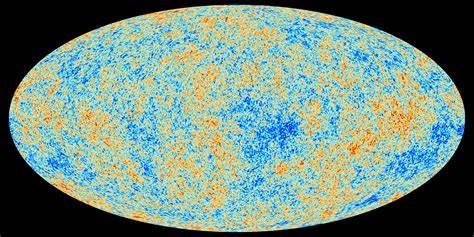
Without referring to what is commonly called the known universe, how far is it, do you suppose to the edge of the actual universe, not just the known one? Who can imagine the whole?2
1. Spock’s interpretation of V’ger’s state of mind after a mind meld — Is this all there is? (Star Trek, The Motion Picture, 1979); 2 https://www.space.com/24073-how-big-is-the-universe.html
Simply complex : Deeply known


[i] TEDx, Winnipeg, Presentation by Jeff Hancock: https://www.ted.com/speakers/jeff_hancock. [ii] We wear the Mask: Paul Laurence Dunbar (1895), A Century of the Blues (Robert Santelli); The Blues – a musical journey, 2003 Peter Guralnick (ed.). [iii] Children’s limerick to paraphrase the Poem by William Blake “The Liar”. [iv] Dante Alighieri, Divine Comedy; Canto 1 Purgatory. [v] Limelight, lyrics written by Geddy Lee, Alex Lifeson, Neil Peart, of the musical band Rush, 1981. [vi] Sigmund Freud, Civilization and its Discontents: W.W. Norton and Co., 1989
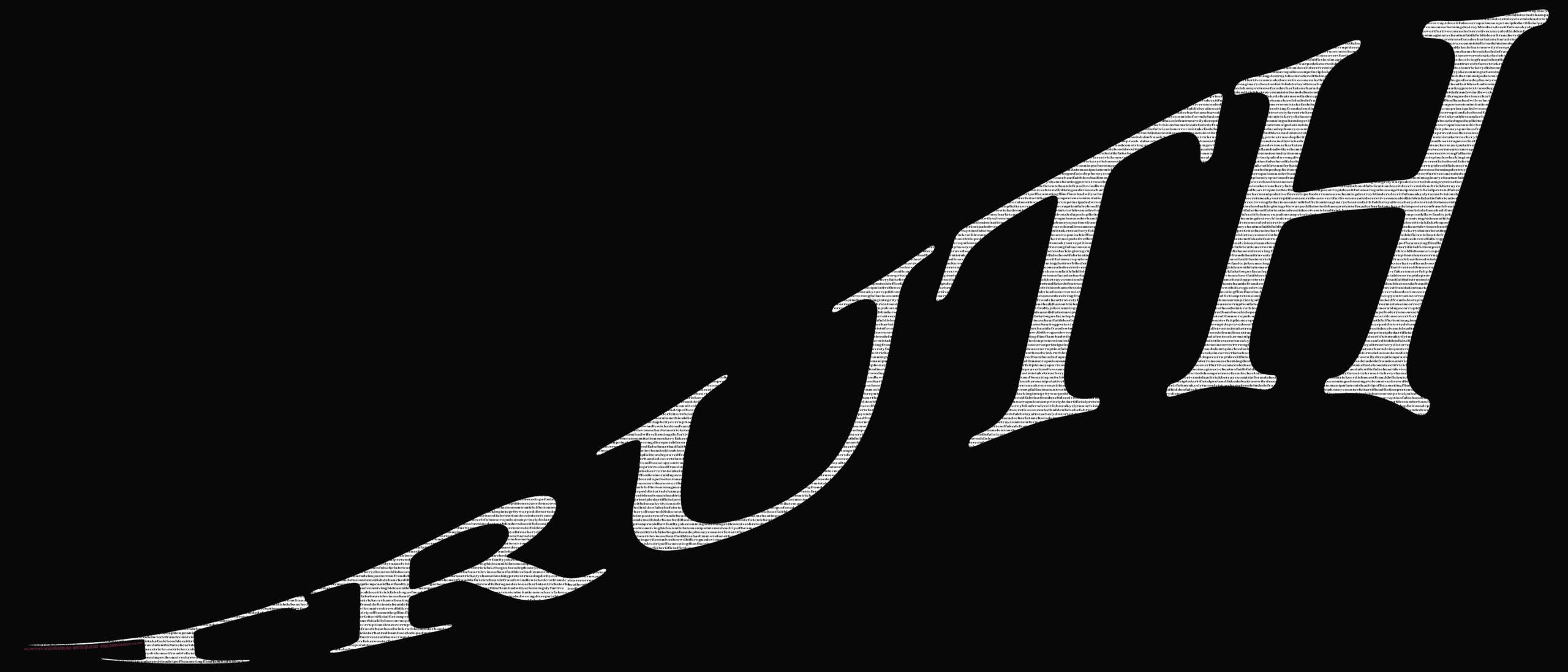
Lux Comedia
Battered, beaten, what is this insidious gnawing, eating away at my soul?
The aggravating darkness, the unrelenting pressure, the excruciating intensity of an ephemeral pain.
Always present, here, intruding.
Never absent.
Return, return, return.
From wherever you come — Why are you here?
Why don’t you just leave me alone?
Why? Oh why? I scream with rage; I cry with fear.
This is being more than lost, cast into history’s desolate sheol.
What is this place, why am I here, I see no further than my pain, tearing in my soul, a searing heat in my head, a confusion and dysfunction in my heart.
How can this be? Why is this here ? Who am I to feel and suffer like this?
Forsaken yes, deserted. Yes, abandoned, yes.
How can this be?
What is this life. as if seeing light, yet engulfed in darkness, drawn relentlessly into the gehenna’s deepest pit.
Forsaken.
Someone, pray, come for me, or I am utterly lost.
yes-no, something
All beginnings of things occur in contexts, large and small; as do contexts.
Sometimes — most of the time — the actual, and deeper, beginning of things, is just outside our direct observation and straightforward recollection. Things come to be in their form which we perceive, note, discover, and think about: we come to know them, and we do not make them exist. Generally, unless we make or facilitate a thing like a coffee mug for espresso or a contemporary Space Telescope, it comes into existence independently of us. This orientation to beginnings, is about things, not about our understanding of them, and most assuredly not about our language about things, or about our understanding of the language about those things, and all other things.
Our understanding and languages about things also have beginnings and lives in contexts. We know this, we forget, we pretend otherwise. And that’s OK: it’s bigger than big, this something called existence. Not to mention the nothing!
It is important to remember that in human affairs and considerations related to human affairs, there is always a beginning to things. This is true, even when we consider something as common as material things like this chair, or as esoteric and small as atoms. electrons, photons, quarks and neutrinos, or, when we marvel at the seed of a giant sequoia and how this tree could grow so big from such a minuscule seed, or something as inconceivably large as the universe, can come to be what it is.
Be careful, saying the beginning of things is the Big Bang is decidedly not helpful — or clear. And of course — the coming to be of ideas, images, sensations, judgements, emotions and our own actions, constitutes an area of considerable fascination and mind-boggling ignorance or comprehension. Not to say that neurons do not fire. They do!
Beginnings often are used to offer explanations for situations, occurrences, endeavours, mysterious arrivals, and so on. Our explanations need not include all beginnings to be acceptable as an account of any particular phenomena. Besides, they cannot so include — the mists are too dense and the compass too deep.
yes, but
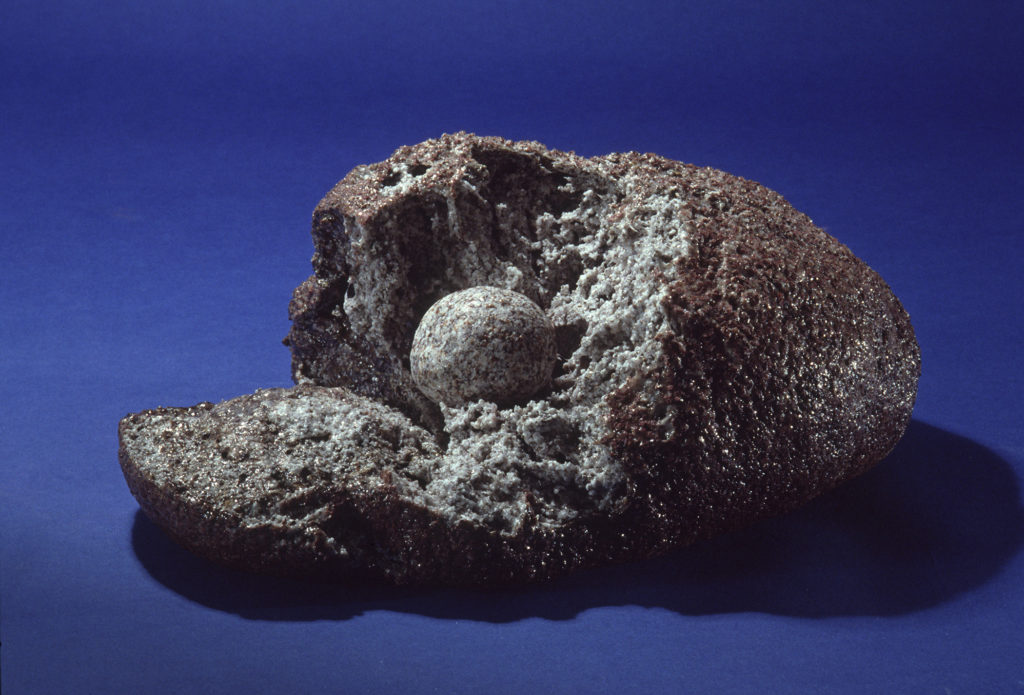

Baseline
I accept that everything — the totality of existence including its subsets within which we live, move and have our being, (the really real, real) — is constant movement, agitation, energy, non-specific particularity and indefinitely large numbers of actual particulars. Every thing, all the flurries, is/are a mode/nexus of existence.
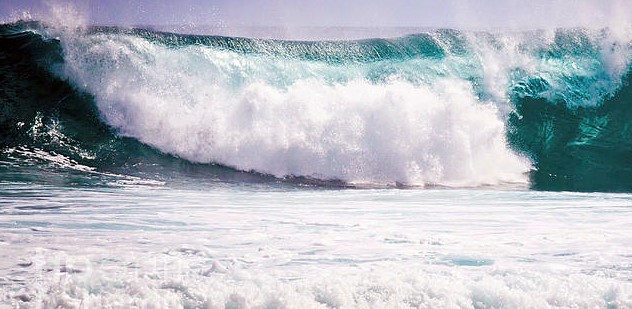
As with all things, I naturally cohere and have integrity of being. This simple fact is nestled within the entirety of all interactive forces and dynamics. They influence, interweave and interfere with me, have an impact on all humans and in this case, me. Sometimes, of course, the dynamism of the ‘other’ is greater than the capacity of coherence within that configuration.
As with any thing in such a situation, I, cease to be, should it occur. Some call this death. Death is not a state.
Equilibrium
There is no more justice than there is karma.
Bramble

A desire rarely exists by itself in human life. Often, this desire is on a direct collision course with another desire: such is a common state of the human heart and mind: we want, we need, we long, we strive.
As desires collide, they do not automatically and harmoniously blend – when they crash and plow – they are propelled by one another in new orientations, they generate new paths, new directions, more collisions along their way: they tumble, perturb, disorient, aggravate, dislocate and fragment. This too is human life. It is uncommon, profoundly scarce indeed, that desire has as its goal a state which can be enjoyed equally by many desiring hearts.
Desire always wants its satisfaction, even on its collision course with its soulmate – a different desire also wanting its own satisfaction: want, want, me, me, mine, mine.*below

*We neither strive for, nor will, neither want, nor desire anything because we judge it to be good; on the contrary we judge something to be good because we strive for it, will it, want it, and desire it. (Benedictus de Spinoza, Ethics, Book 3, prop. 9).
uh?
I came to be; I will cease to be. I did not come to be from somewhere else, nor will I return thereto. ‘Come’ and ‘return’ are inappropriate metaphors.
Odyssey
It seems fairly clear every morning when I awake and start my day, that I am lying in my bed and getting out of it to get going. Some days, this is a bit blurry, but really, I never lose my way. I am not my bed. It does not take very long (nanoseconds?) as I’m moving toward coffee, that I am immersed in my physical feelings and sensations (chilly floor beneath my feet, stiff knees as I go downstairs) and my emotions, imagination and thoughts take up an increasing amount of my attention and focus. This set of words has a deep hint of Descartes hidden in them, but the grammar belies actual human life which encompasses this and more. Distinctions, as they appear in words are only occasionally in the world. Happenstance. There is no necessary tie between our words for things and those very things. The painter’s brush is not the anger in the portrait’s face, nor is the brush stroke of ‘just the right’ shape, texture and colour.
Which I is this and which I is that?
I am not my bed. We are distinct from one another. What about the I which walks down the stairs? Distinct? Be careful, ‘a’ is not ‘b’ although they are intimate companions with innumerable, interwoven fields.
Navigating Scylla and Charybdis may best be managed by creating an alternate route. Such a move will shift the mythos and entail creating a life-boat just in case.
It is not our language which bifurcates the world although it is often thought to do so — look to one’s self!
time
There is no returning, as has always been known by those who dwell in time. Time is movement! It is not a direction.
if
There is no possible world without imagination. There is no imagination without the actual world. Possibility is not actual. it is imagined. Some people would say that imagination is a form of thought. I could not disagree.
Imagination is a primal form of thought, ground to many others, interwoven and randomly dispersed with reflection, deliberations, planning, speculating, lying or navigating adventurously. It is alive and active in individuals, in our collectivities, complex memories, and dynamic creativity— often seeming to have deeper origins, apart from while comfortably entwined with and before the beginning of all time, and such matters.
How could any of that be true, pray tell? What if it were not?
Photonic Contrails
zero — timespace — here/now: there/then?
(holy smokes, Batman, even the Batmobile isn’t fast enough)
Light escaping; captured at the edge; no edge; but light, what are you doing here?

The known universe — a grain of sand, a mathematical point — no more.
What is there, but what is? Is not existence everything? Surely, there are not two all existences! Two Everythings? Am I not something?
Space
Existence does not occupy space. Some modes of existence are so small they do occupy space and some so very small, that they do not occupy anything at all. Some modes of existence are so large that they are empty within, while making space as full as it is. Is this dimension(s), hmmm?
Mode and Modes of


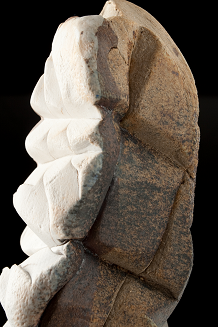
The chair that I am sitting on is a physical thing. It is constructed of and assembled out of physical parts: wood, stainless steel, plastic and organic and plastic textile, alloy and cord binders and joints. As we all know from common experience, chairs take up space, have a certain solidity, stay together unless dismantled or shattered by exterior forces, etc. Its component parts are also physical things.
Occasionally, once we have disassembled the chair into its obvious physical parts, we might wonder about what the deeper composition of those parts might be, We say that physical things are constituted of/by matter.
Matter is the stuff that makes up the physical components of the chair. Wood is a material thing, metal is…and so on, These are material things : matter.
In the present era, we have come to the think that the matter, the stuff of physical things is composed primarily by atomic and molecular structures, and their endlessly complex, multitudinous, and variable relationships. Depending on a particular configuration of the atomic and molecular structures, matter makes up a thing, whatever the thing happens to be.
Just as matter is the stuff which makes up physical thing, mass is the constitutional basis of matter. We say matter ‘has’ mass. It is the capacity or inclination of matter to resist change, be moved, or become less cohesive. It is resistance to a force. It is energy in this material form. (I know, I know. Take a deep breath. It does not get easier to follow, so calm down).
Just as a matter is the constitutional make up of physical things and mass is the grounded make up of matter, so it is that a multitude of misty forms of energy are the basis of what it is that mass is. Mass is energy. It is force carriers, energy field waves which make up the resistance to change of mass of things in the form of what we call material things: physical objects.
Fundamentally it is energy.
Energy is the diversity of forces, fields of forces, diversity of forces and force movements, which makes up the constitution of everything that there is. When it moves at the speed of light, it has no determinate form, when it moves at less than the speed of light, we are able to determine it as a mass. When it is constitutionally sound enough as a mass, we understand it to have a composition as a material thing, when it has a composition as a material thing (known constitutionally to be atomic and molecular), and then, needless to say as far as it is a material thing, we are able to detect it as physical.
What is the chair? A chair is this physical thing, which is the matter which is/has the mass, and the mass is fundamentally the energy.
There is only one thing, the chair. Each other way of talking, of probing, of analyzing, of experimenting, of conceptualizing, and the like, is simply another way of talking about the chair.
If the chair weren’t there, none of the rest of it matters — and vice-versa?
In case you haven’t gathered already, the chair is only an example of every physical thing that there absolutely is anywhere, everywhere, any when, any now, any then.
This declaration includes you and me, Mother earth, our lunar companion, the warming sun, the really neat solar system, and the overwhelming immensity of the universe.
No physical things no energy — and vice-versa?
No energy no physical things — and vice-versa?
They are all the same things. Why do we see chairs as chairs and why doesn’t energy just detect the energy of the chair. We detect the chair. We detect a movement. We detect light, colour, shape, resistance, movement, heat, cold, hard, soft — feeling, emotion, sensation.
Is that moment of detecting ’us’, the human perceiver?

Awakening : Illusion
Not like the one above; it sinks.
It’s not, however, without its hazards: holograms to left of us, looped simulation donuts to the right, brain hallucinations to the left of us, illusionary selves to the right.1
And here I am, stuck in the middle with you! (Steelers Wheel)
1 idiosyncratic gratitude: Genesis 1:27, Parmenides, Tao, Nicholas of Cusa, le vécu, , Buddha, Spinoza/Nietzsche, life, light/darkness, Democritus, Hume, natural science, quanta, yesterday…(help, it’s losing me).

Perspective, Humans, Knowing
I am looking at a goat. The goat is just on the other side of the road and I’m taking it in. On the other side of the goat, there’s a goatherd who’s looking at the goat as well. They’re an experienced person, so obviously see and understands stuff about what is going on that I do not.
Just coming up on my right is a person riding on a bicycle and he’s looking at the goat because of course he doesn’t want to hit the goat and he doesn’t know exactly what the goad might do.
If none of the points of view is the goat as its entirety, what do we know about the goat?
There is no question of whether we can know a thing as it is in itself if the operating premise is that a perspective on the thing is not the goat in itself, its entirety, and that knowing is about knowing the thing as a whole in every respect. In addition, there is no question about knowing the thing in itself if that means to know how it is, apart from our knowing it.
When we know things, we know them as humans and the odd assumption is that because we know them as humans we don’t know them as they are. We only know them as they are for humans. That’s not entirely false, but to conclude from that that you cannot know the thing in itself is really pretty silly.
Knowing is a human relation with the world.
PS: the goats and we are in the world, lest we forget.

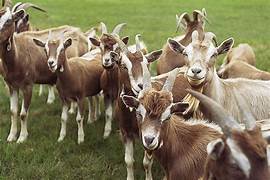

Never look a gift horse in the mouth
1. Language is a gift of such immensity that it’s fullness frequently escapes our notice,1 let alone our comprehension. Its intricacies are so fine and numerous, that we cannot plumb them all and have them on instant recall. Its harmonic and woven connectedness with the fabric of our mental life so complete, that we live with them as if they were the same — yet distinct. Identity, difference, similitude: interwoven, interdependent, separately together. Caution is the companion of confidence, doubt is the heart of faith.
2. It would be most peculiar to say, and to believe that it is true: that a person’s brain is experienced by that very person.
That is to say, the brain of the person is experienced by that very person. It would be equally odd, perhaps foolish, to say as I clinch my fist, that I experience the nerve activity which stimulates the muscles to make my fist contract, and that I sense the ephemeral cross-cranial/brain activity which gets the whole processed started (we are told). But, hold on here — I do experience a tensing of the muscles and the closing of the fist and the forces that seem to be involved in my (the) power of closing the fist. But it is very peculiar to think that we experience the brain, the neuron firing, the electron flow through all the nerves and muscles, and the muscle-stimuli in this simple action. We do not.
3. Not only do we not experience these inner, subtle, but powerful activities that are going on in our body as we do certain things, like picking up a fork, going downstairs, etc. It is equally peculiar to say that the brain thinks about what is going on, as I am clenching my fist. As far as I can tell from my experience, my brain does not think.
4. We, human beings, fortunately, do think. In that thinking process, of course our brain is extremely active (we are told by videos, wave-pattern activity charts, colorful line graphics of brain activity, etc.), which for us is a true benefit. But the brain itself does not think, and the brain does not imagine what it is that’s going on, or about to happen with my body as I clinch my fist or walk down the stairs. I, on the other hand, experience all of those bodily actions and often enjoy it, until I make a mistake. My brain does not make a mistake.
1. abcdefghijklmnopqrstuvwxyz
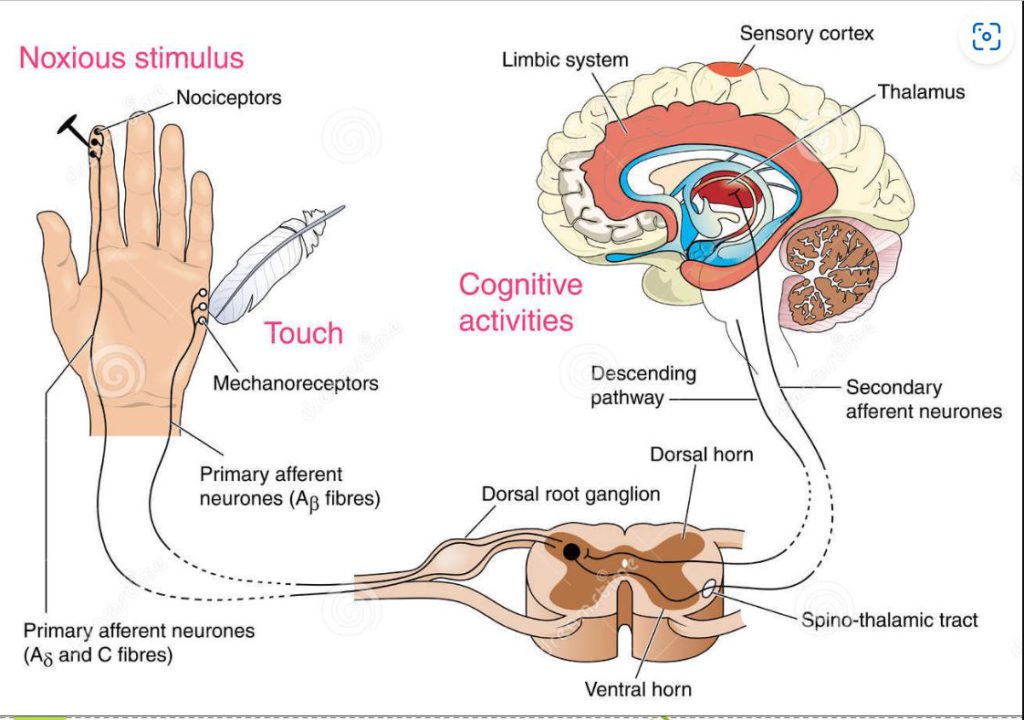
Similitude
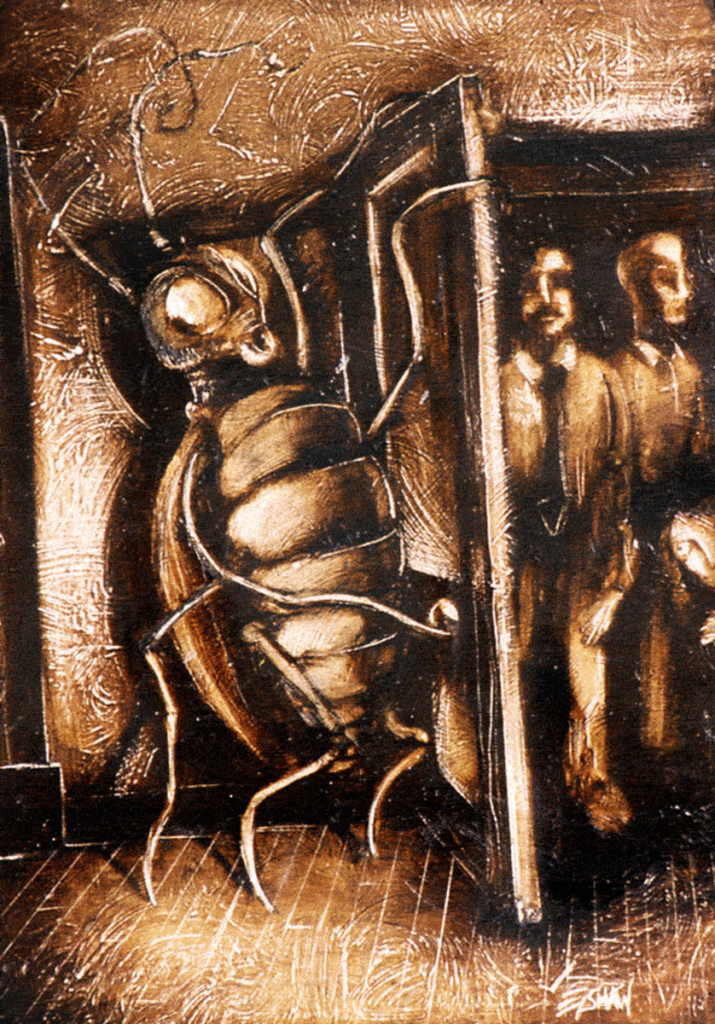
Kafka – https://owlcation.com/humanities/The-Grotesque-A-Brief-Overview-of-the-Literary-Term
For one thing to be like another it must be something else, something other than that other thing. That is to say, not the very thing that it is said to like. To be like something, the thing that is like the other thing must be different than the other thing in certain respects.
Similitude is granted only when there is a difference, and not only identity between the two (which is to say, they are the same).
Generally speaking, when I would say I am like other human beings I would be suggesting that there are many similarities in actions, thoughts, wishes, emotions in speculation and dreaming and a plethora of physical and mental attributes, as well as spiritual, moral and emotional capacities and so on. But in no way ever at all, would I suggest that I am ‘one’ of them, or that any one of them or many of them is, or are, me. We are similar — we are different— but we are all human beings.
The insect which the travelling salesman had become in Kafka’s Work, was not like an insect. It was an insect. The salesman certainly thought of himself as and like an insect; that is, because he had been transformed into one. Amongst the many unique features of the situation, is the recognition that he was still human and aware of that as such, even though he had been turned into an insect.
He knew then, what it was like to be an insect because he was an insect (but he had not always been one). I know it’s peculiar, that’s why it’s so interesting.
A thing is never really like itself. It is itself. If we want to say, “I think it is like itself”, we have to change our words a little bit so the way words might say “this version of the self is like that version of the self” and what we do is we create two different approaches to what “selfness” is, neither one of them is exactly as it is actually. We limit this version this way, and that version that way, and so on.
Yesterday, Foundations and Tomorrow
I am where I am, and I’m not somewhere else. I chance to think that a statement like that is very close to what we call a truism, namely, something which is true by definition, or from within itself.
Part of the beauty of being a human being, or at least, one of the really obvious beauties, is that this phrase in all its simplicity, contains all of the conundrum, queries, confusion, clarity, hopes, desperation, angst, life, and death, that are human life.
Give me a break, you say!
Well, okay, I’ll give you a break — but it won’t be the one you want.
Mode, Modes, Modal
In order to understand that human beings are capable of doing something, from themselves and in some circumstances, by themselves, we need to have an idea of what it means for them (humans) to be something at the deepest level of their existence. If they were nothing in their most fundamental being, they would not be able to do, initiate or act at all.
What is it that they might be, so that we can see they are in and of themselves something: human and capable of acting as humans.
Every thing is itself. At the simplest grasp, any and every thing is a mode of existence — an individual and/or specific mode of being. Modern thinking tends to suggest that all things occur in contexts which provide complex forces, force fields, influences and impacts on the thing which is situated in the contextual whole.
This says that while modes are individual in any given context, each mode in the context relates to all the other modes of that context. Another way to phrase this is to say that any thing, a mode of existing, is never only the node of the multiple, intersecting forces of the context. A mode has being and its node is the seeing of that mode through the optic of all of the intersecting forces of the context on that thing.
Things are not dimensionless points and intersecting forces are not only dimensionless lines.
The thing, any thing, is not totally, solely, and exclusively the intersection and impact of the other outside forces, force fields, influences, etc. It is in itself a comparably constituted entity which impacts, influences, and intersects with other filed and forces. Things impact and are impacted, and their existence is not only the influence of others. They influence.
It is prudent to recall that the existence of a thing is not nothing.
Living, Looking, Finding, Befuddling
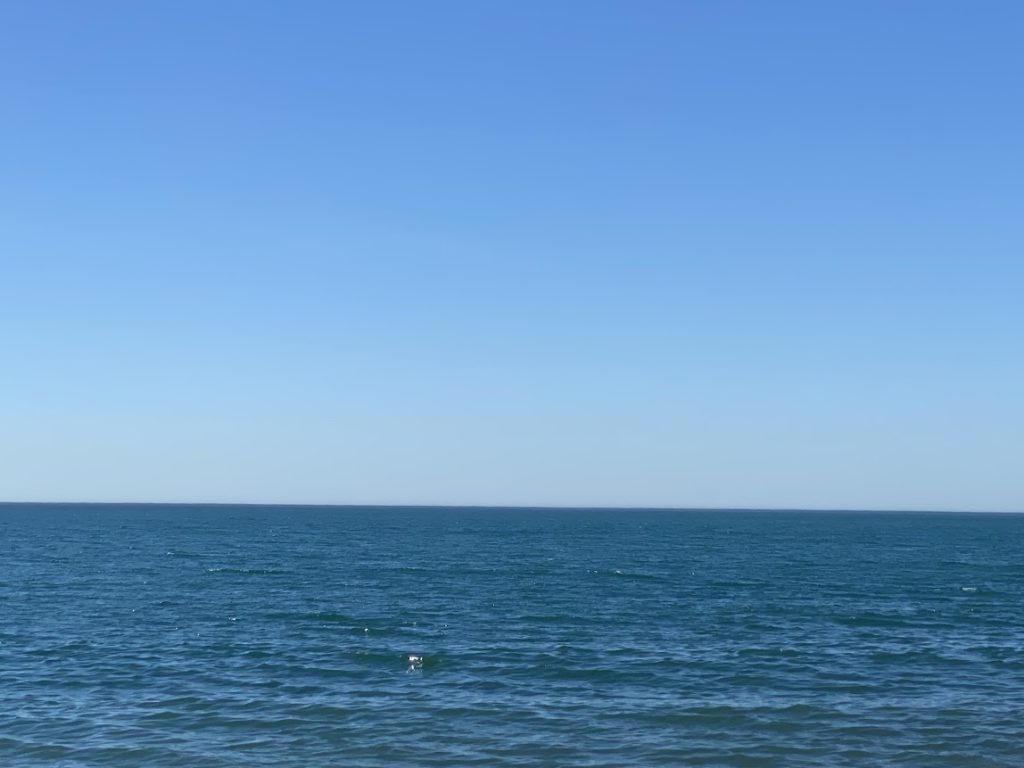
Physical things are all around us and in fact, as a common experience, they often inhibit our movements tremendously. Walk through a cement wall lately? Stubbed you toe?
Physical movements, like walking paths, facilitate our movement tremendously. Eating food, paradigmatically physical if ever there were something physical.
Physical things like food sustain us and carry us through until the end of our living time. Their drained remnants exit our body as physical things, known to us all as we wipe.
Physical things like cement walls are obstacles that we cannot walk through but allow us to live in what we call buildings and homes.
Living things are considered to be physical things.
All living things exist in physical environments.
Human beings are just like many living things in this respect. Human beings are physical things.
How do we think? Why do we want? How do we hate and how do we love? How do we crawl out of bed in the morning, arise and go about our business, as we say?
Is our business managing the physical stuff, and is our business managing the values, feelings, emotions, images, thoughts, patterns, plans, hopes, ambitions, desperate intimations, ethereal moments of daydreaming night, dreaming the tremors of not feeling alive, while being alive?
Of course, it is.
All these undertakings are lived physicality and are clearly and deeply embedded in it in a way which escapes our comprehension. They do not escape our genuine experience.
Why do we think that physical things are matter?
When we investigate matter through our elaborate and sophisticated analysis and probing tools, we accept the stance that the further the things we discover there are from the physical domain which human beings can experience by virtue of being a body, the deeper and more profound their reality is. Hmmm?
The more our grasp of the nature of materiality, mass, energy, fields, and zones and what is broadly speaking called the world (real stuff) the happier we think we will be in our knowledge. In this respect knowing is exciting and powerful. (And not false.)
But what if physicality disappears as intelligible?
We should never forget that physicality is actually the ground for all living things. For a living thing like human beings, it is the experiential ground which constitutes the life of what we do/are.
But also the reason for our investigations into everything that we investigate, probe, explore, scrutinize and look into.
Haven
Where does the heart find refuge in the most turbulent storms of life?
Some of the corners, caverns, and vigilant hiding places are, in themselves, problematic zones. We have placed experiences, traumas, fearful disquiet, and shattering blows in them in the course of life during times in which we were powerless to keep ourselves coherent, safe and strong. Early more fragile life moments have somewhat destabilized and partially corroded pillars which might hold us secure.
It is not prudent for the heart to seek refuge in the fragile zones.
Yet, we do not often store strength and keep it in a safe place in our strong zones for a day when we might need it. When we are in need, it is eminently clear that it would have been prudent to have done so. Strength is not easy to store. ‘Should have’ and ‘would have’ are anxiety moments of regret and which, as with all events past, are non transformable in themselves. Living within the aura of a strong spirit is attainable while also paradigmatically elusive. Finding moments of resolve needs creative zones in the growing person, even though they are as yet difficult to detect.
How to place anything there awaiting a moment of danger and with it, a dramatic need for nourishment? Wheeew!
Any practices, techniques and endeavours people do set for themselves so that they might win the difficult moments and with which they may walk through the valley, are all good and are not to be mocked and not to be shunned. Life saving reserves may be garnered through fear and desperation and not through planning and forethought alone. Accept and move on (more easily said than done). What is the future?
No path, none, is known to be the one — that definitive one. They are unique and variable — today is tomorrow in disguise.
